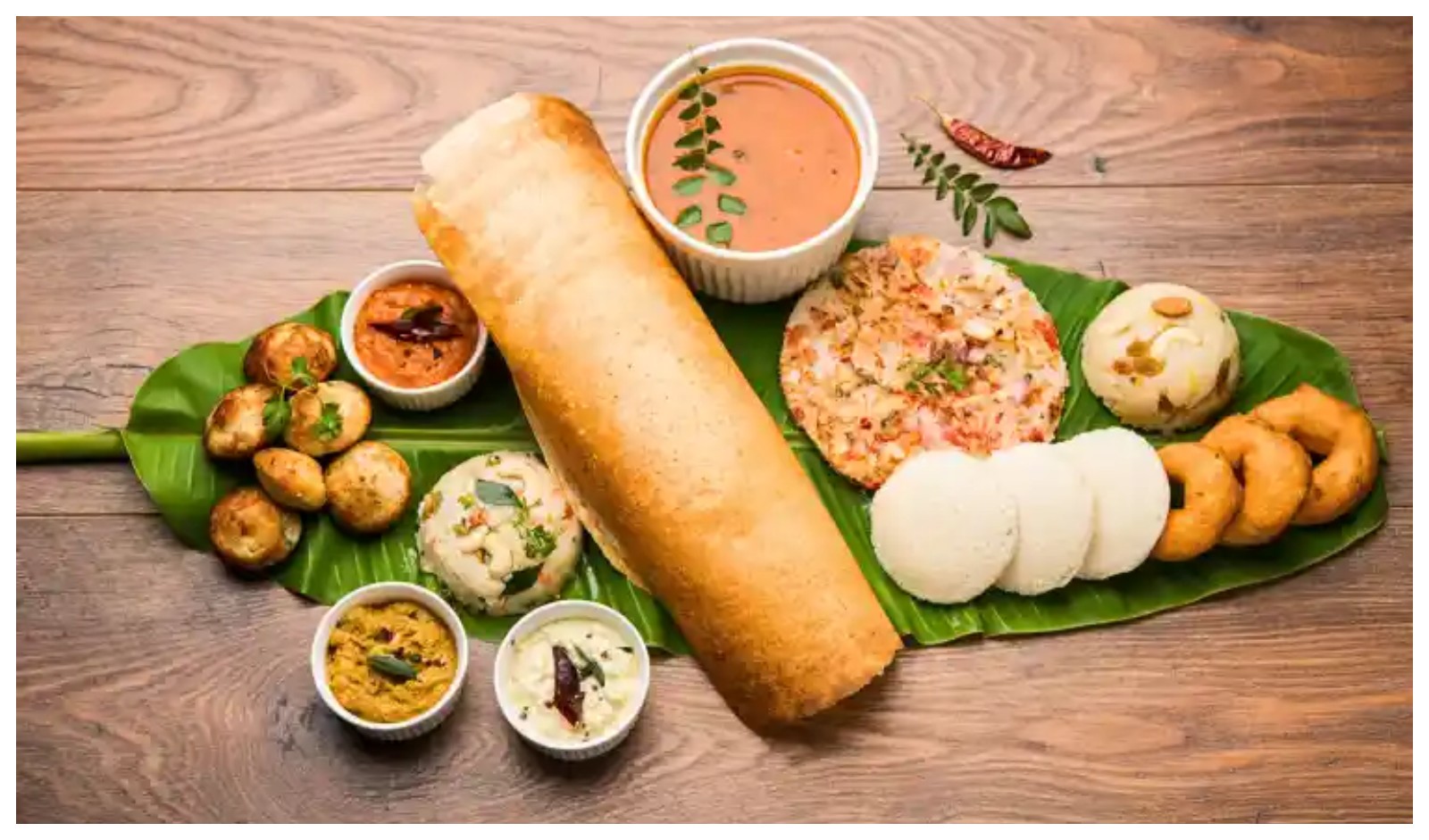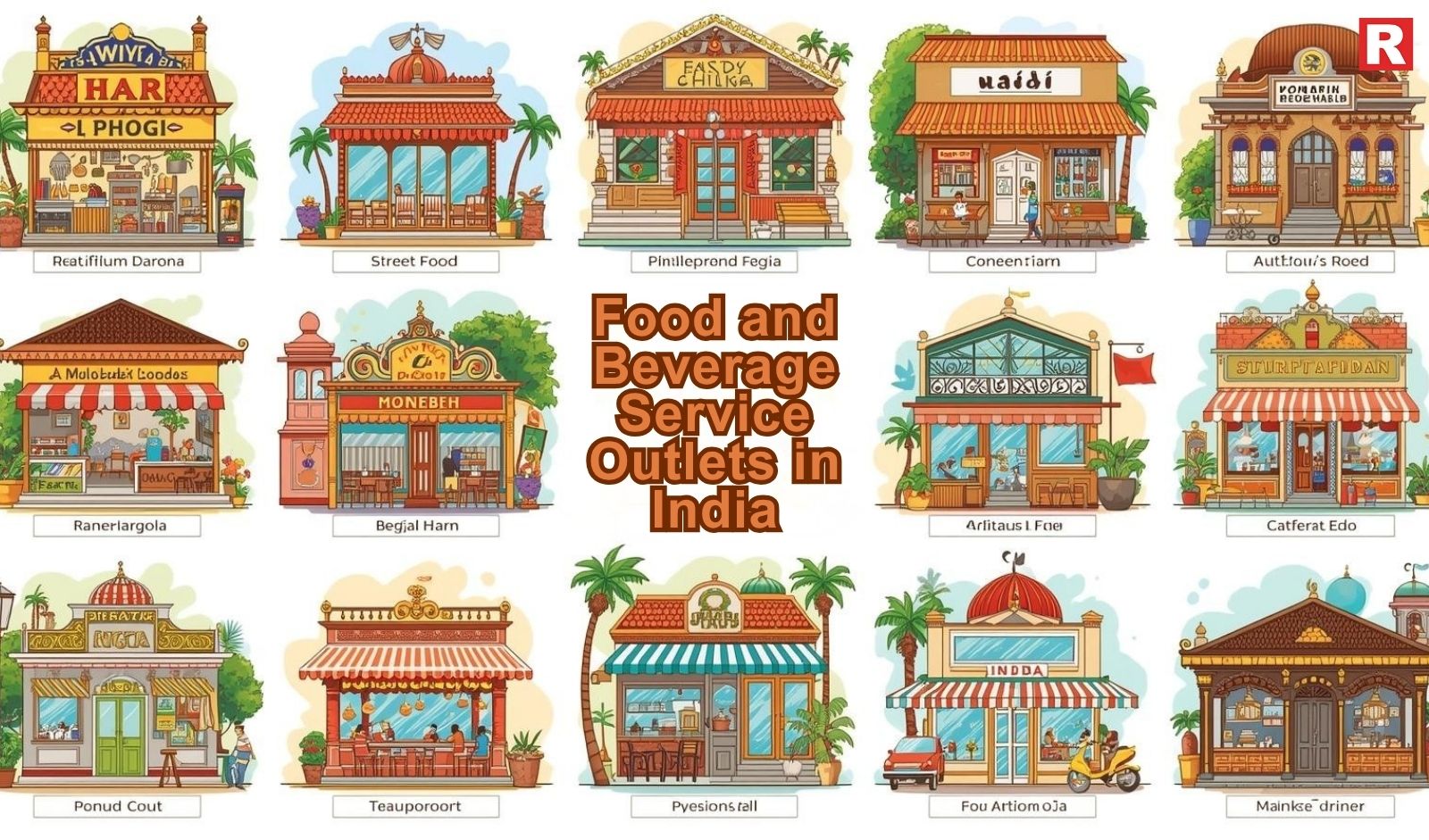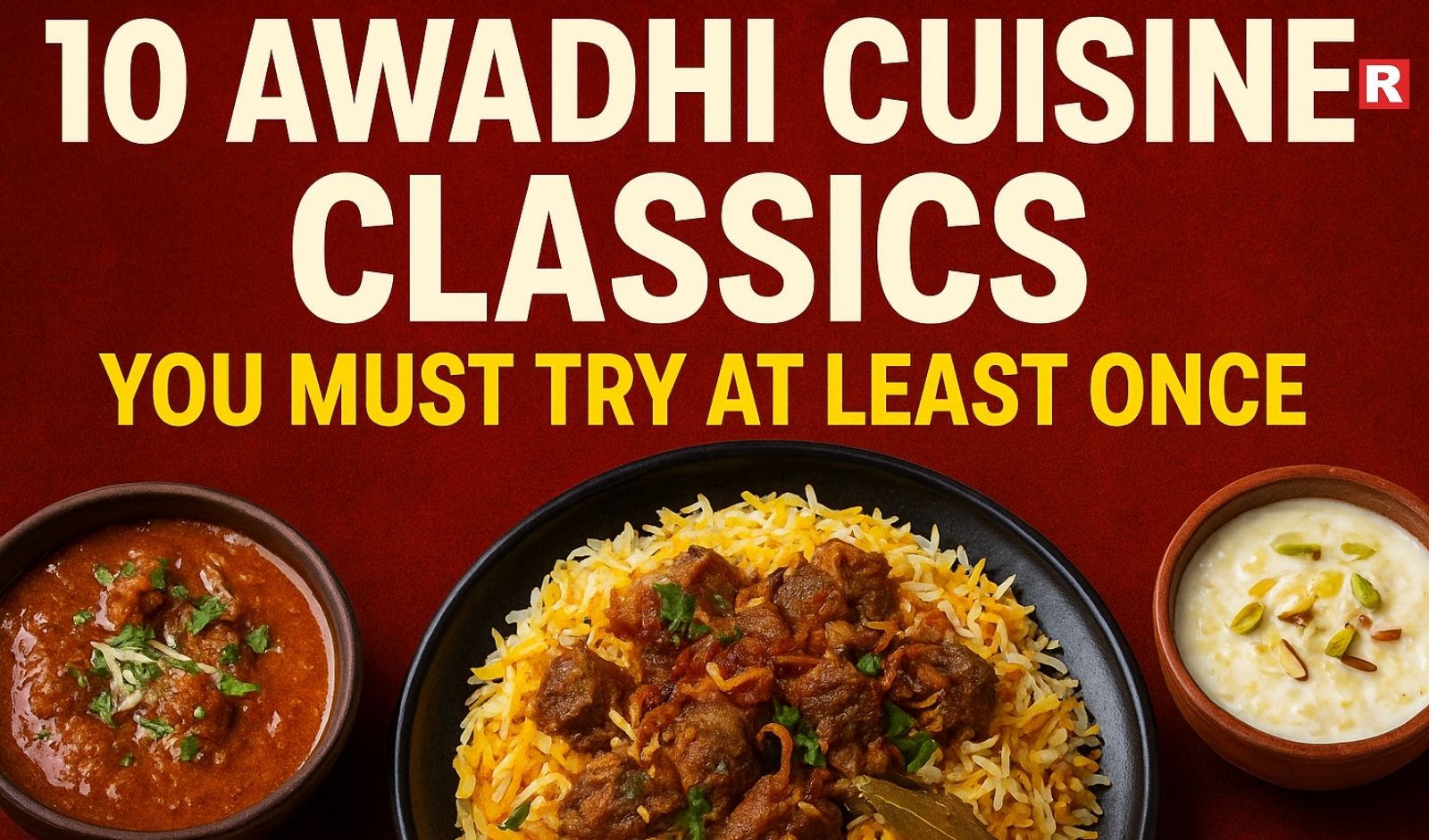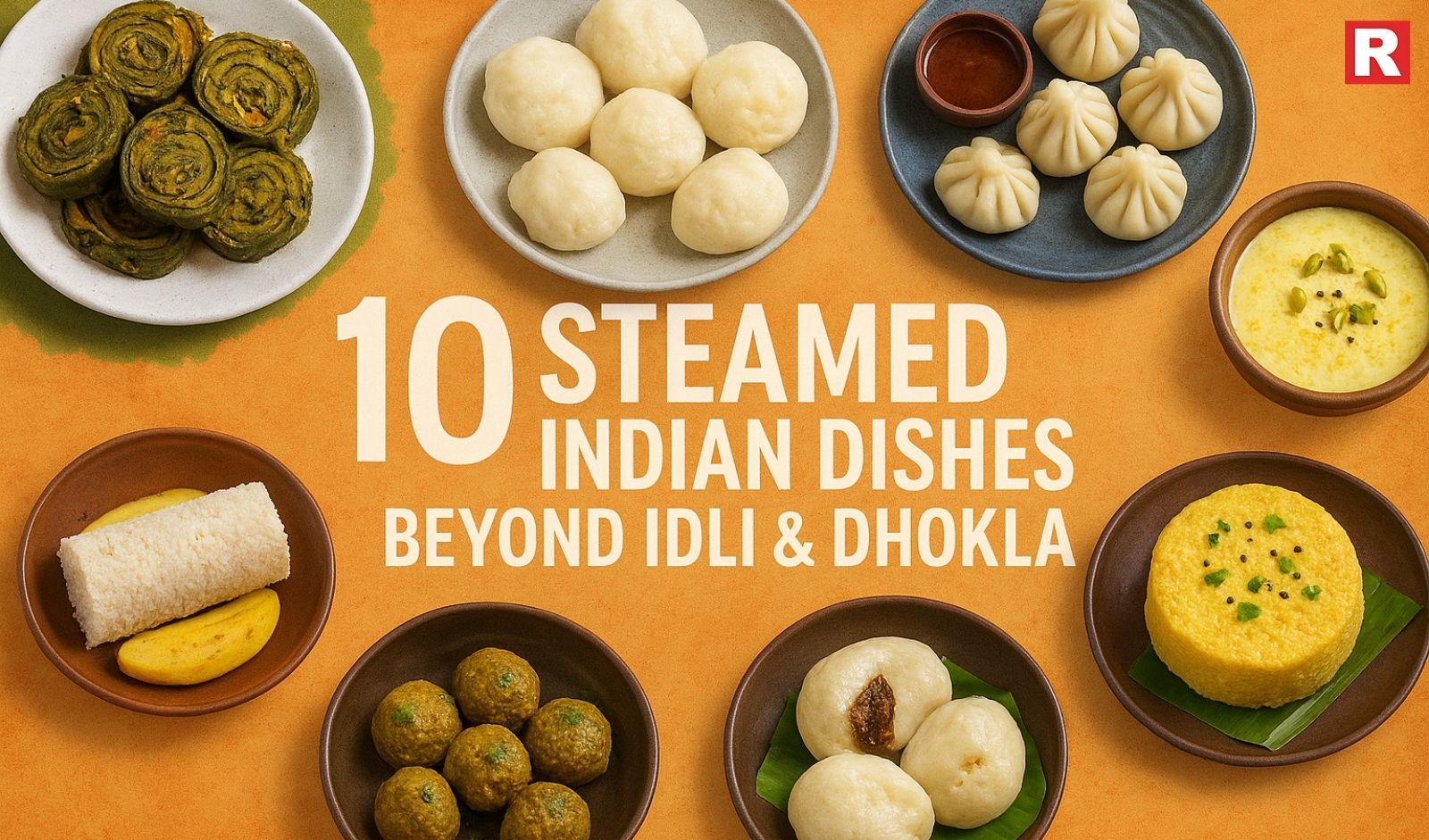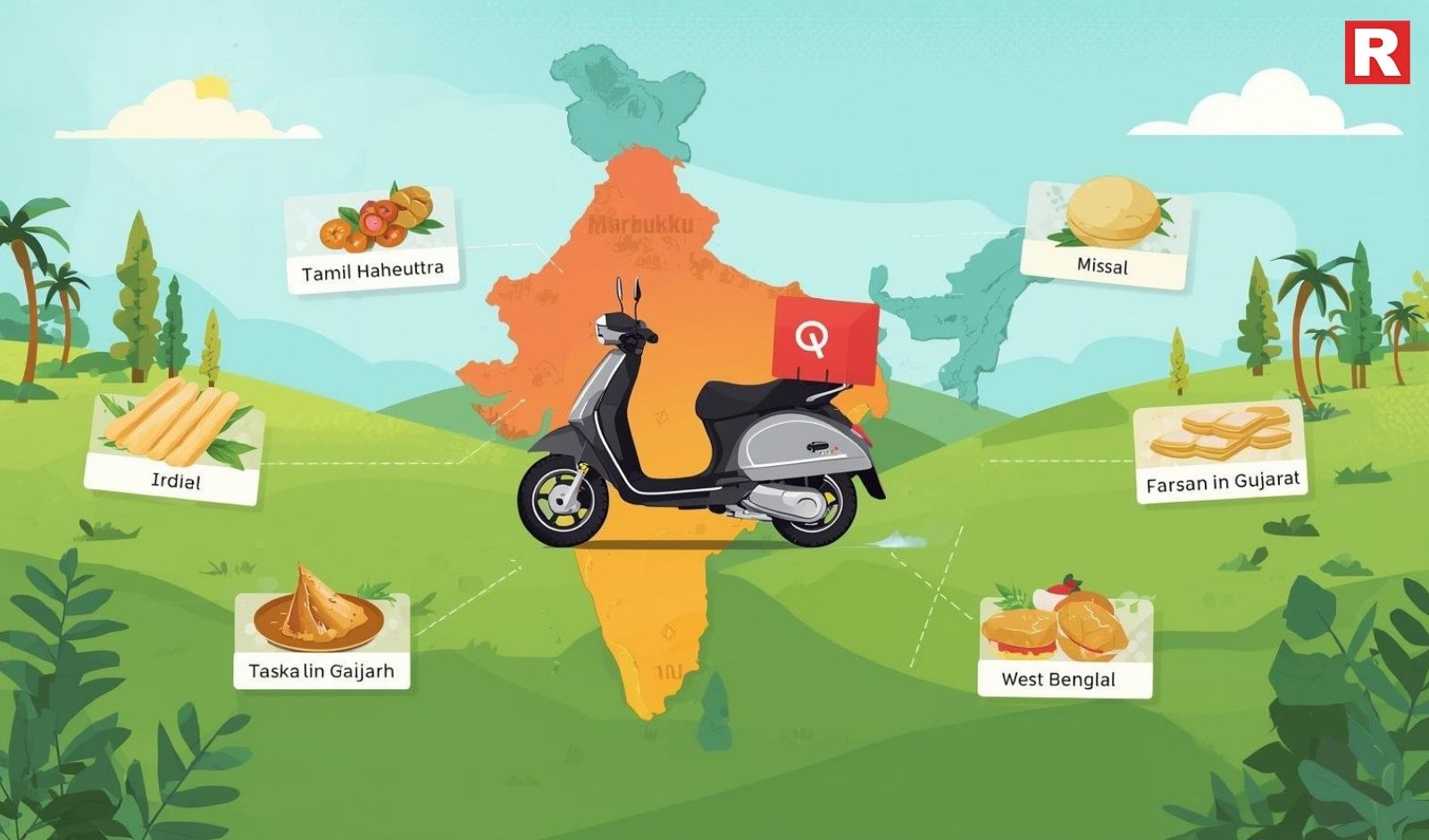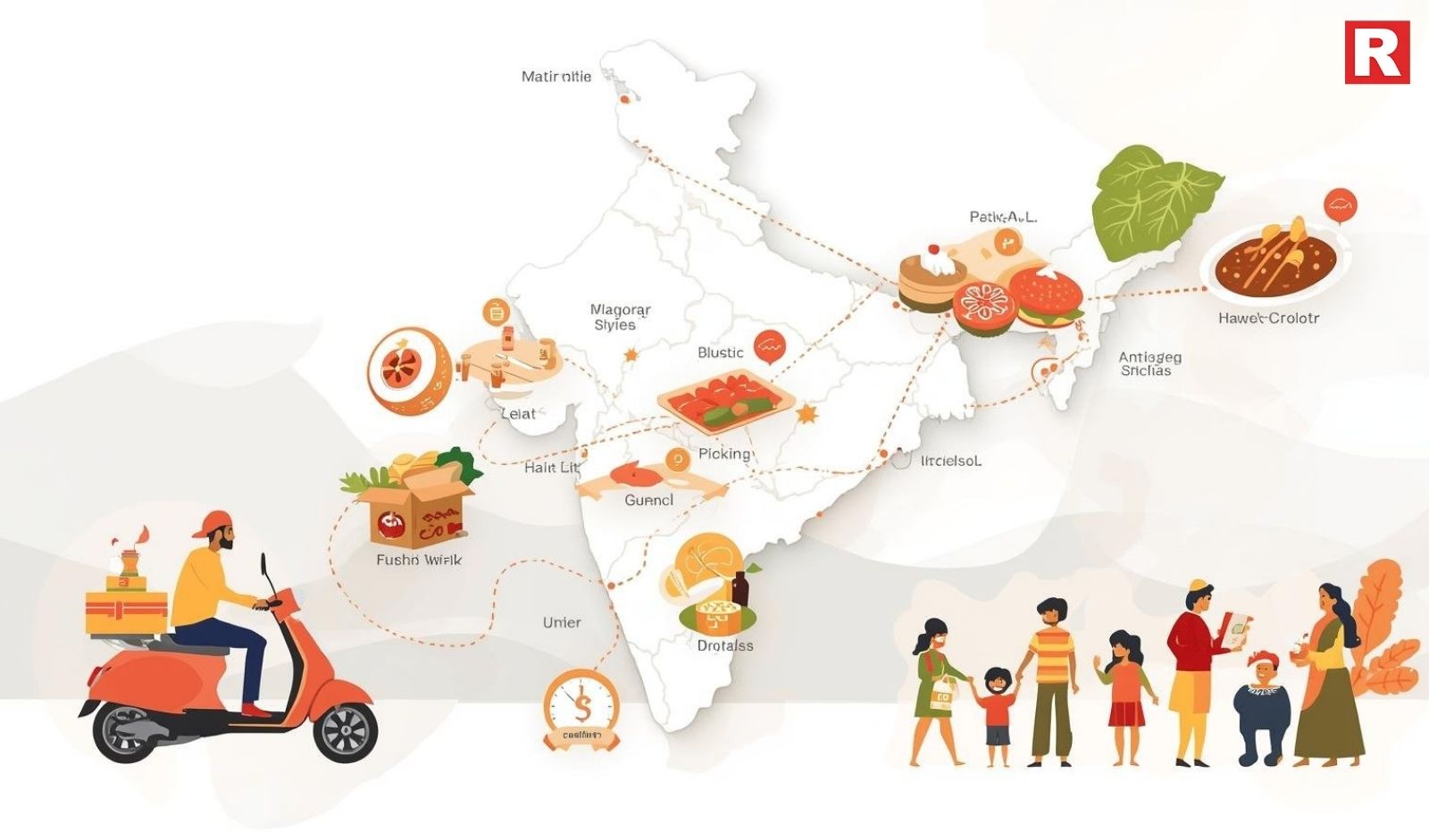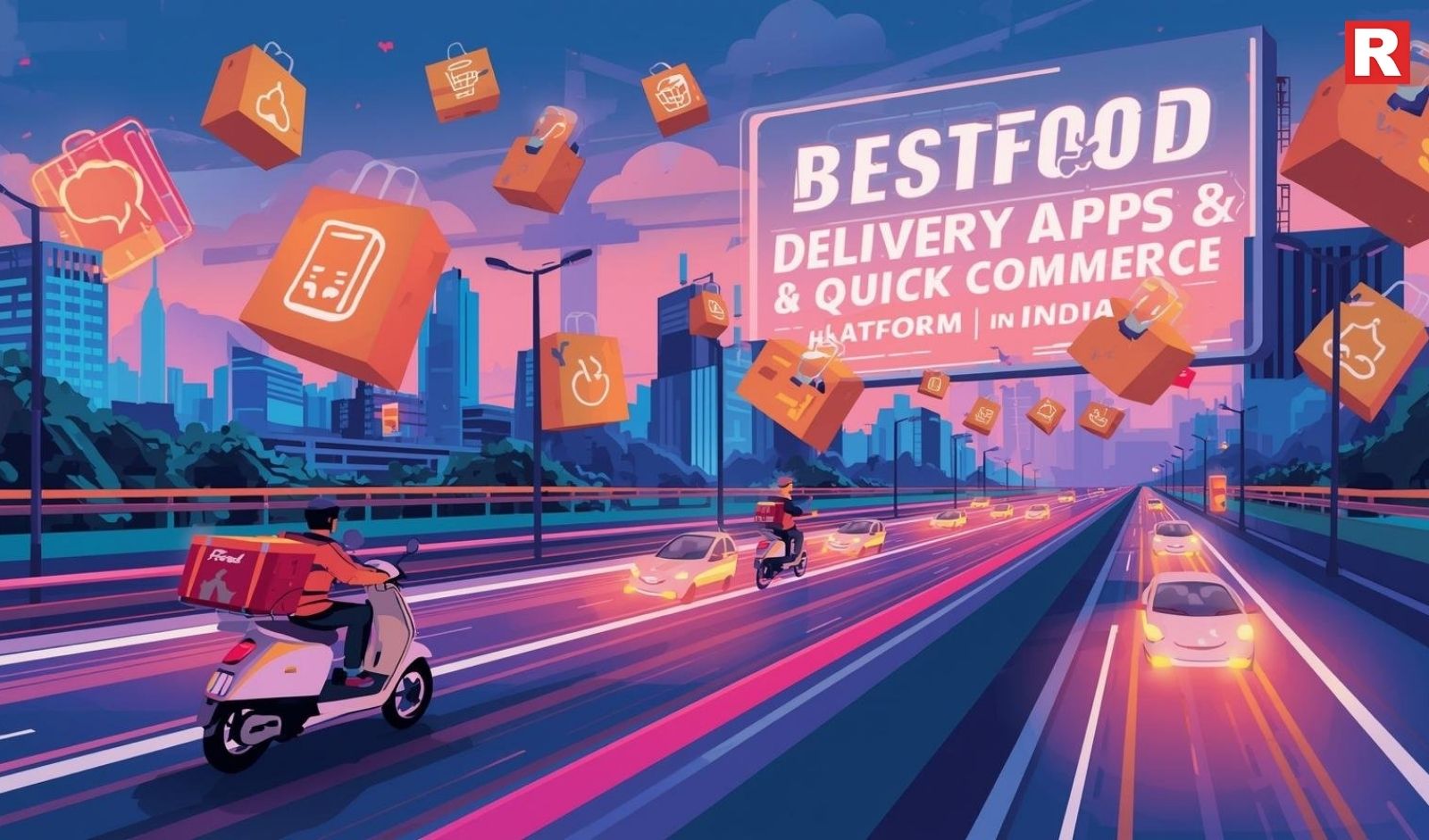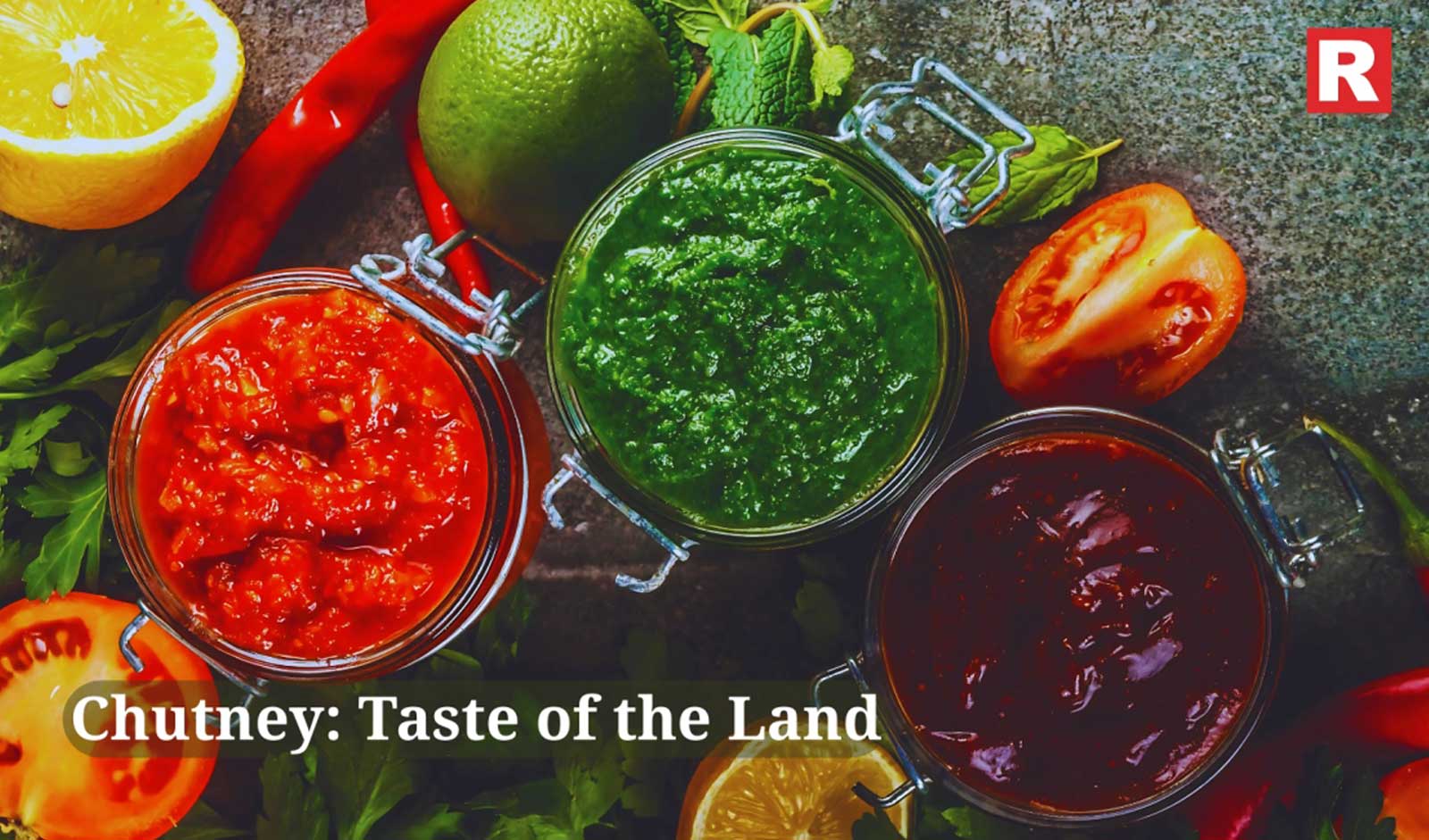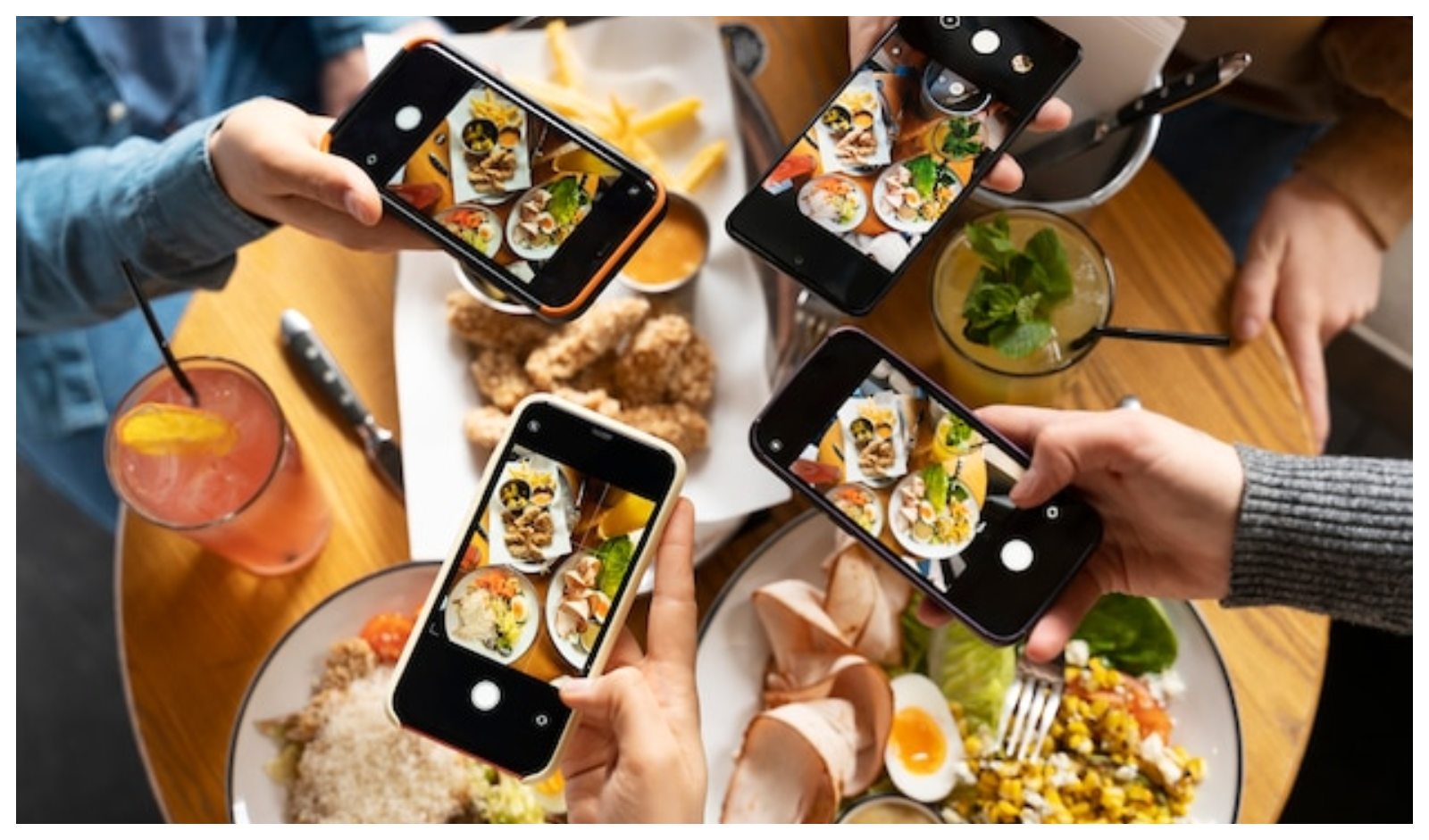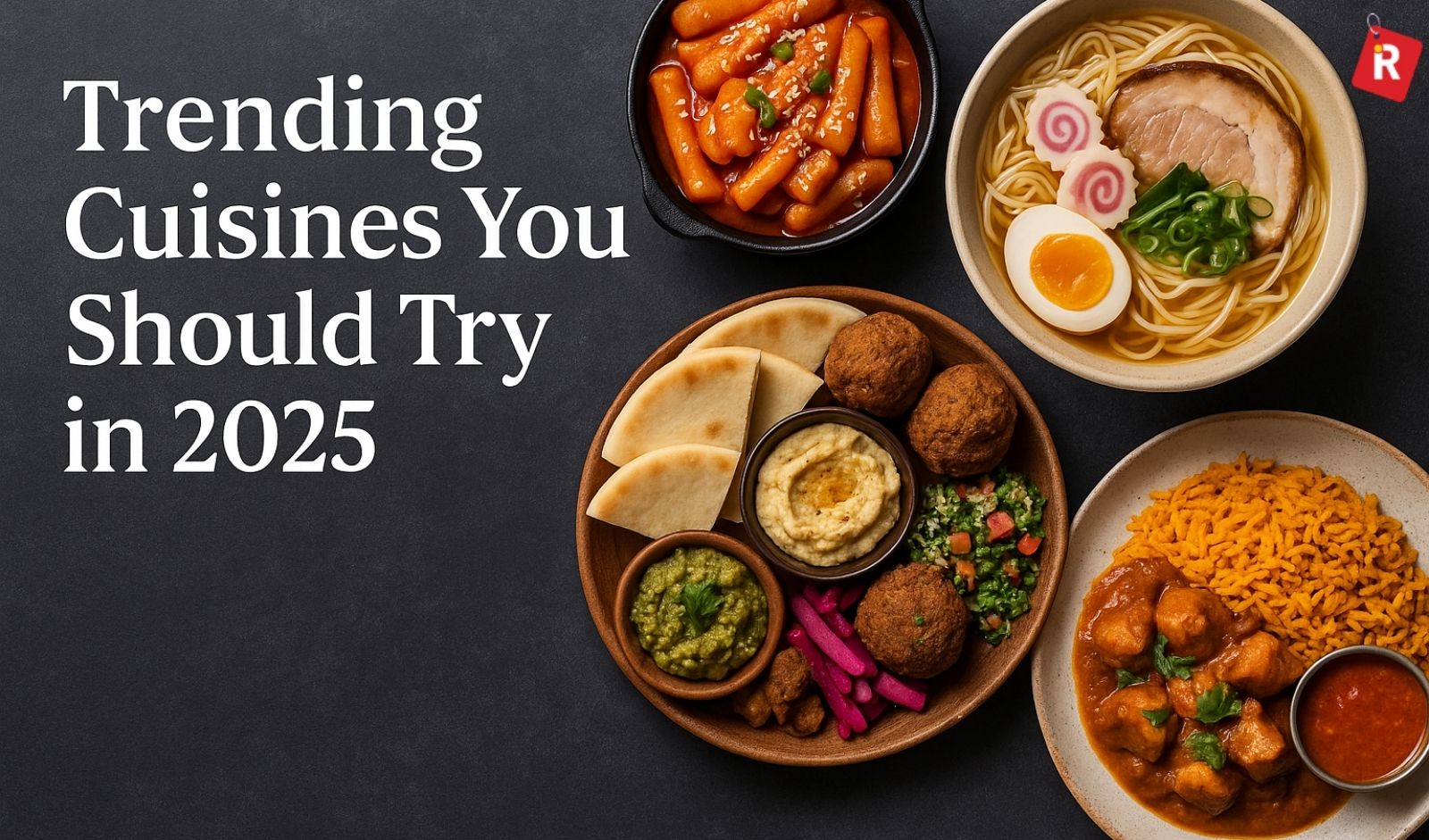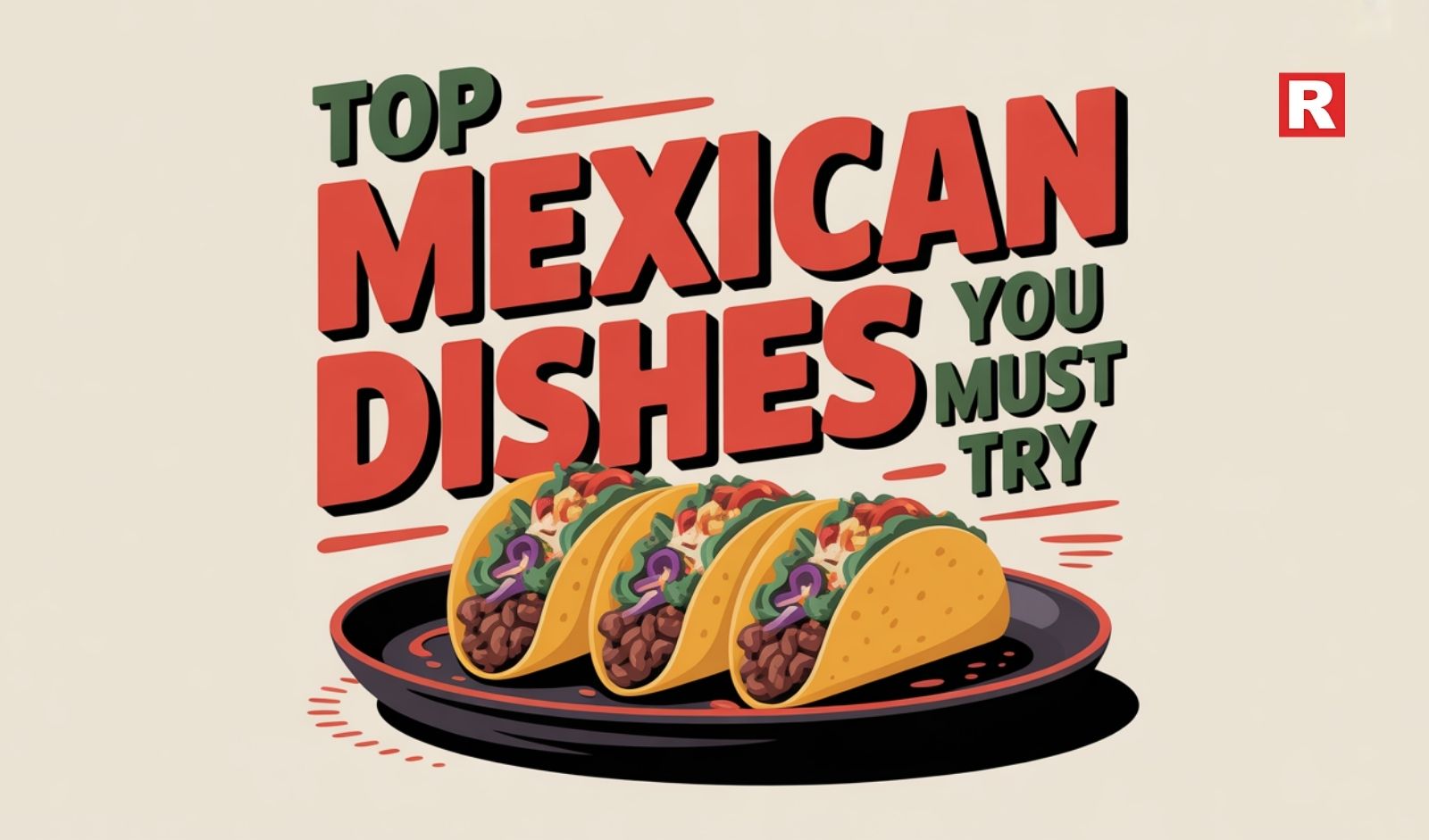
When it comes to frozen food business, one encounters endless options such as selling frozen fruits, vegetables, meat, chicken, fish, sea foods, turkeys and candy etc. It is looked upon as the next most successful business in cities, which are moving far from the villages, where fresh fruits and vegetables are grown.
India’s frozen food market is projected to grow at a CAGR of around 15%, during 2016-2021, on account of increasing number of modern retail chains, rising number of refrigeration facilities in small retail shops and rural households, rapid development of fast food chains, aggressive marketing strategies by major frozen food manufacturers, and longer shelf life and easy availability of frozen food products.
Frozen snacks dominated demand for frozen food in the country and the segment is anticipated to continue dominating the market through 2021, due to wide variety of products available in the segment. India cold chain industry is anticipated to grow at a CAGR of more than 24% in coming years.
Looking at the market, one can clearly see the amount of scopes; this business is throwing lights upon. Hence here are a few tips, if you have determined to start a frozen food business in India:
Market Research:
Before establishing any business, one needs to do a thorough market research. It provides clarity about the locality, customer demands, and makes one aware of the competitors.
Market research helps in knowing what the people in the locality buy, how many competitors you are going to face, how better a service you can provide them.
Moreover it also warns you not to open another store or invest your hard-earned money in an already overcrowded market place, where your store will hardly be acknowledged of its existence.
Target Market:
Based on the market research you will figure out what you want to sell, who your customers are going to be and if you want to add the delivery option in your business.
The ideal location for opening a store will be if there are college students, bachelors or families or canteens or eateries in and around the locality, who will be your target customers.
Adding delivery options will increase your market potential.
Look for Suppliers:
If you select a very interior place, ten it would not be easy for the supplier to supply you the items in time. Also if customers are flooding in your store and you do not have enough to sell, it is a big turn off for the customers as well as to the business.
Thus figure out a place where you can get your supplies in time and which should be easy for the supplier to deliver.
Obtain Permits:
Selling frozen foods without permits makes your business illegal and vulnerable. It gives government to attack you anytime.
In vulnerable situations, one lives in constant fear of being caught or alleged for wrong reasons. Moreover frozen food business is a business which requires constant supply of electricity, if you leave just the important thing, of getting a permit or simply postpone it, what if they disconnect your electricity connection, your business as well as our reputation will go down the rain.
Marketing:
After all the important things, related to opening a frozen food unit in a locality, getting permits, buying all important equipments and hiring people, the only thing remains is marketing, which is like the last link to connect your business with the customers.
Circulate the word through pamphlets, ads, big hoardings and social media, along with the line delivery service too is available as this might give the push to your business.
Gradually the whole of country is running to become the next developed urban, thus make the most of this time and start a frozen food business in India.

Snacks and bites are not only changing the restaurant menus, but they also offer customer convenience and shareable options that meet various tastes and dietary needs. They are moving from the sidelines to the centre of the dining experience. They allow restaurants to be more agile, creative, and responsive to evolving consumer behaviour. Small is beautiful, less is more and that’s what the diner wants. Value is no longer based on volume; it is based on creativity with a sound foundation of classical knowledge.
Convenience and Small Plates
Snacks let restaurants provide smaller, more affordable portions. This allows customers to try different flavors without committing to a full meal.
“Couples or even single diners are no longer limited to savouring just a single dish with over 200 gms of protein but can now have 4-6 dishes with 40-50 gms of protein per dish. This allows them to experiment and try out a much wider range of dishes and also allows convenience, speed, and flexibility living up to the adage – “Less is more”,” says Prashant Issar, MD of Bellona Hospitality.
Many restaurants are creating snack-friendly menus featuring small plates.
“Quick-service restaurants and cloud kitchens are taking advantage of this trend by serving a variety of snacks that can be easily ordered and eaten on-the-go,” adds Chef Chirag Makwana, Corporate Executive Chef at Late Checkout, Chrome Asia Hospitality.
Small plates speak directly to a new kind of diner, one who values flexibility, variety, and ease of sharing. “This makes the format incredibly versatile, allowing us to cater to different consumer journeys without changing the core menu structure,” comments Shikha Nath, Culinary Director, Charcoal Concepts.
Impact on Menu Design and Offerings
Restaurants are mixing global flavors with local ingredients in their snack menus. This leads to unique and interesting fusion options.
“We at Ishaara have been practicing the small bites philosophy for our guests for quite a while now allowing our guest to enjoy more variety. Taking a cue from yesteryears, this is exactly how the royalty used to dine back in the days of yore when smaller portions were served to them allowing their table to have a lavish spread without allowing them to enter into flavour fatigue,” points Issar.
Menus are being crafted to highlight snacks as main offerings, with many restaurants dedicating certain sections to these items.
Nath shares, “At Bombay Brasserie, we lead with strong small plate categories, designed around flavour, storytelling, and discovery, giving guests a sense of India’s regional diversity, one bite at a time.”
Reshaping Dining Experiences
Snacks allow restaurants to create more engaging dining experiences by encouraging customers to share and try different options.
“The growth of snacking culture is also boosting quick-service restaurants and cloud kitchens. These businesses cater to customers who want convenient, high-quality food,” says Makwana.
The dominance of snack or small plates is transforming the dining experience into something more interactive, social, and exploratory.
Nath explains, “Guests are no longer tied to fixed meal formats. Instead, they build their own journey, discovering different regional flavours in a single sitting.”
What’s Challenging
The reliable supply and higher costs present challenges in the snack segment. This is especially true when using seasonal or local ingredients. Nath mentions that the biggest challenge is operational; ensuring speed, consistency, and quality with a larger variety of dishes. A small plate experience has to be based on a solid foundation of classical cookery otherwise it will be a loose fusion which will be quite unfortunate.
“Executing Small plates is not an easy task as they tend to be far more complex than bigger portions. Not only one has to ensure that the dish scores high on presentation, flavour, texture and experience but it also has to ensure that the diner doesn’t face Food Fatigue,” emphasizes Issar.
Business Impact
Snacks can make up a large part of a restaurant’s business, especially in urban areas where customers seek quick, affordable bites.
For Bellona Hospitality’s more casual and premium dining formats, starters and small plates comprise 35-40% of total food sales as they have become a significant part of the guest experience and revenue.
“Industry trends show that snack orders spike during festive seasons. Some restaurants even report a 30-50% increase in snack sales during these times,” notes Makwana.
Furthermore, Nath highlights that snacks & bites currently contribute close to 50% of their overall food business.
And, this is a strong reflection of how consumer behaviour has shifted towards a more fluid and exploratory style of dining, where guests prefer to order multiple dishes to share and sample.

As South Indian flavors capture international attention, two homegrown favorites, Bengaluru’s Rameshwaram Cafe and Chennai’s Namma Veedu Vasanta Bhavan, are among the latest to choose Dubai and the GCC as their launchpads for global expansion.
Indian restaurants and cuisines have long been popular abroad, but for decades, the attention was centered mostly, if not entirely, on North Indian staples like butter chicken, samosa, and naan. These dishes shaped the world’s outlook of “Indian food”, but that landscape is now evolving.
With the growing number of popular South Indian restaurant chains expanding overseas, from Saravanaa Bhavan and Anjappar to Paragon, A2B, and Sangeetha, international audiences are now discovering and appreciating the varied flavors and comfort foods of the South. And if there is one region emerging as the preferred gateway for these brands, it is unmistakably the Middle East, particularly Dubai.
If we look at the numbers, Saravanaa Bhavan alone runs 104 outlets across 21 countries, including 13 in the UAE. Anjappar Chettinad claims more than 150 outlets in 25 countries. A2B has expanded across the US, UK, Singapore, Malaysia, Canada and Australia, while Paragon continues to anchor the Malabar dining scene in the Gulf. Together, these chains run an estimated 300-350 outlets outside India.
India on Globe
In the past few years, countries like US, UK, Singapore, Dubai and other Middle Eastern cities have become a magnet for Indian F&B expansion, and South Indian brands have been leading the charge.
The trend is clearly visible in expansion plans announced by two of popular south-Indian chains: Bengaluru’s Rameshwaram Cafe and Chennai’s Namma Veedu Vasanta Bhavan revealed their international expansion plans, choosing Dubai and the GCC as their launchpads.
“I started in a very small way, from a small town near Coimbatore, with nothing more than a vision and a desire to do something different. Innovation has been my constant companion, and it is this spirit that has carried Indian food to 16 countries across the world,” mentioned M Mahadevan, Chairman, Advantage Foods Pvt Ltd who has took brands like Saravana Bhavan, Sangeetha, Hot Breads amongst other to over 16 countries, globally, all celebrating Indian cuisine.
Their timing reflects a larger pattern. The Gulf, home to over 8.5 million Indians, a significant portion from Tamil Nadu, Kerala, Karnataka, and Andhra Pradesh, offers unmatched familiarity, demand, and scalability. Indian cuisine accounts for nearly 21 per cent of the UAE’s dining landscape, and Dubai alone hosts more than 13,000 restaurants and cafés. With shorter supply chains, easier access to ingredients, flexible franchising, and a multicultural audience, the region has become the ideal first step for South Indian brands testing global waters.
Global dining preferences have also shifted dramatically. There is growing interest in regional Indian cuisines, fuelled by food shows, YouTube Street food videos, and diaspora content creators.
What Dubai as Next Location
Few restaurant chains have grown as explosively within India as The Rameshwaram Cafe, with its high-volume service model, distinct chutneys, and immense social media presence. Its announcement of a Dubai outlet marked one of the most anticipated global moves in the South Indian F&B space this year.
For the brand, Dubai was an obvious choice. “Dubai emerged as the natural choice for our first international outlet because it’s a vibrant, multicultural city with a large Indian community that deeply connects with our cuisine,” said Divya Raghavendra Rao, Managing Director and Co-Founder.
For Rao, Dubai was not simply an international market, but a gateway to the world, the first step in a larger plan. “This expansion marks the first step in our long-term vision of making The Rameshwaram Cafe a globally recognized name. We are currently exploring opportunities in Singapore, London, and the United States regions with a strong Indian presence and a growing appreciation for authentic, vegetarian Indian food,” she said.
The brand’s strategy maintains a clear balance: the authenticity of dosa, idli, pongal, and filter coffee will remain untouched, while certain formats, such as grab-and-go tiffin boxes, lighter wraps, and portion-size variations, may be introduced to suit lifestyle needs abroad.
“Our international outlets will largely retain the core menu and signature flavors that define The Rameshwaram Cafe experience. That said, we do plan a few subtle regional adaptations to suit local preferences and dining habits. We believe classics like our crispy dosas, kempu chutney, and authentic filter coffee will become our strongest ambassadors globally. They represent everything we stand for: tradition, warmth, and the unmistakable taste of home,” she added.
Chennai’s NammaVeeduVasanta Bhavan, meanwhile, approaches global expansion from a place deeply rooted in memory and emotional connection. With established presences in Singapore, Dubai, and Doha, and new outlets planned in London and Canada, the brand’s journey has been shaped by what its customers abroad missed most.
“Over the years, many of our loyal customers who moved abroad told us how much they missed the comforting flavors… that nostalgia inspired us to take our cuisine beyond borders,” reflected Managing Director Swarnalatha Ravi.
Authenticity, she said, is non-negotiable. Their international kitchens replicate traditional recipes, spice mixes, and cooking techniques exactly as in India. At the same time, the brand recognizes the need for sensitive adaptation.
“Our international menus are designed to bring the true essence of South Indian cuisine to global audiences. They largely mirror our offerings in India. But we also recognize the importance of connecting with local audiences. In every international outlet, we thoughtfully curate selective adaptations, for instance, introducing Jain-friendly options or subtle fusion variations, to cater to diverse dietary needs and regional palates,” she added.
The lesson is simple: find your market, position yourself smartly, and price right.

India’s food and beverage industry reflects the country’s diversity and changing lifestyle. From small tea stalls on busy streets to elegant restaurants in five-star hotels, every outlet adds to India’s dynamic dining culture. The sector serves millions daily, offering food for every taste, budget, and mood. Over the years, eating out has become more than just a meal — it’s an experience shaped by tradition, innovation, and community.
Each type of food outlet has its own purpose and personality. Street food stalls bring local flavors to life, while fine dining restaurants focus on luxury and detail. Cafés create cozy corners for conversations, and quick service restaurants meet the pace of modern life. Food courts in malls, cloud kitchens delivering meals at home, and bakeries filling cities with aroma — all form part of this vibrant network. India’s F&B landscape continues to expand with new trends, global influences, and digital innovation. Whether it’s a family dinner, a coffee break, or a late-night snack, food connects people across cultures and cities. The industry truly represents how India eats, celebrates, and evolves.
Explore 16 Types of Food and Beverage Service Outlets
1. Fine Dining Restaurants
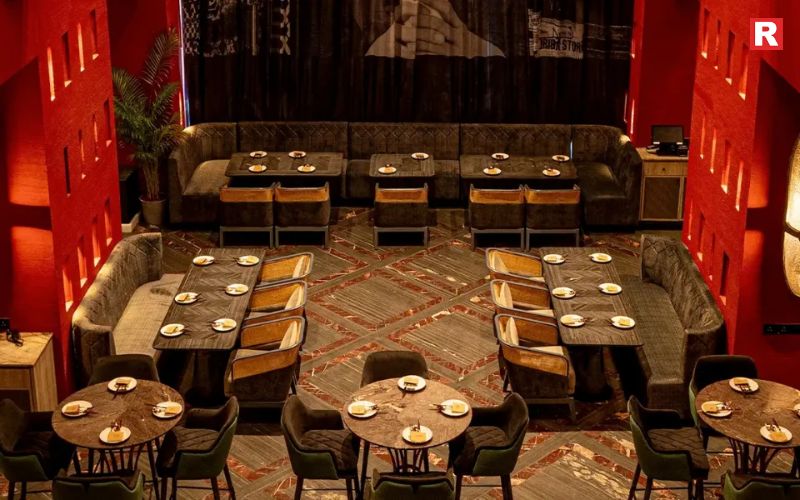
Fine dining restaurants represent the highest standard of culinary excellence. They are known for elegant interiors, professional service, and premium ingredients. These restaurants usually offer multi-course meals with detailed plating and international presentation. The staff are formally trained, and the atmosphere is refined. In India, restaurants like ITC Bukhara in Delhi and The Table in Mumbai set benchmarks for luxury dining. Fine dining is ideal for formal events, celebrations, or business dinners where the focus is on quality and experience.
2. Casual Dining Restaurants
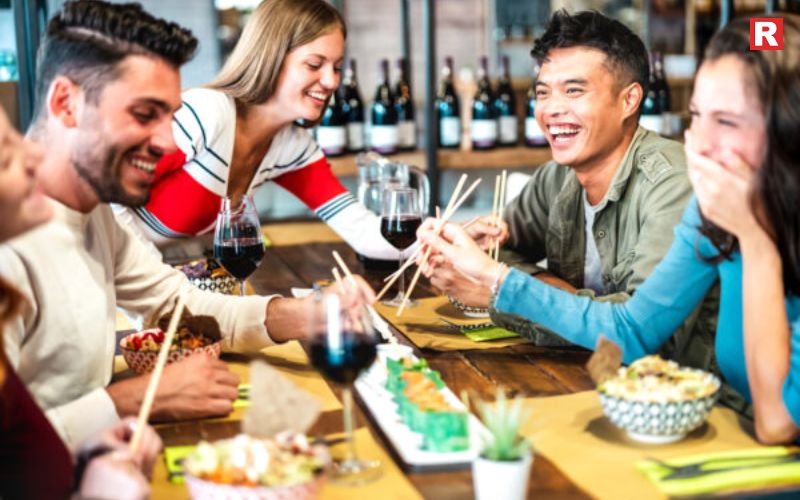
Casual dining outlets combine comfort with great food at mid-range prices. They are perfect for families, friends, and corporate groups looking for a relaxed dining experience. The menus are diverse, ranging from Indian and continental to fusion cuisines. Examples include Barbeque Nation, Mainland China, and Olive Bistro. These restaurants focus on ambience and friendly service without the formality of fine dining.
Read more: 8 Famous Vegetarian Dishes of Uttar Pradesh and Their Timeless Legacy
10 Awadhi Cuisine Classics You Must Try at Least Once
3. Quick Service Restaurants (QSRs)
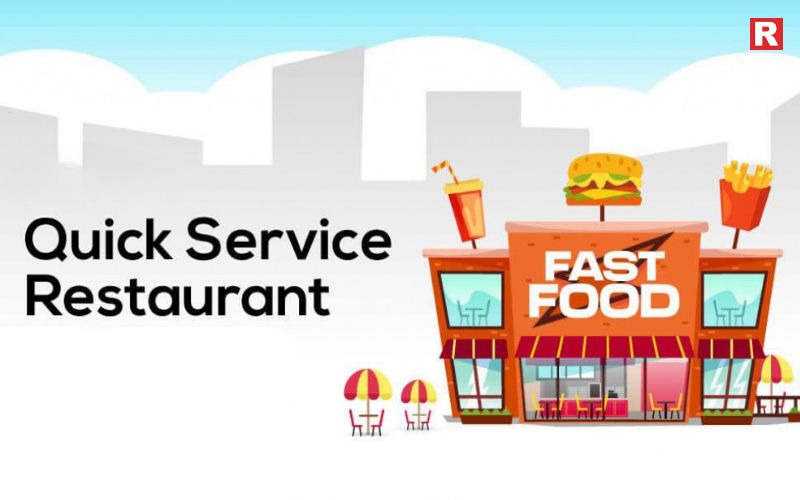
Quick Service Restaurants are designed for speed and convenience. They cater to people who prefer quick, affordable, and hygienic meals. The service is fast, often self-serve or takeaway-based. Popular QSR chains in India include McDonald’s, Burger King, and Wow! Momo. The rise of delivery apps like Zomato and Swiggy has further boosted this segment, especially among working professionals and students.
4. Cafés and Coffeehouses
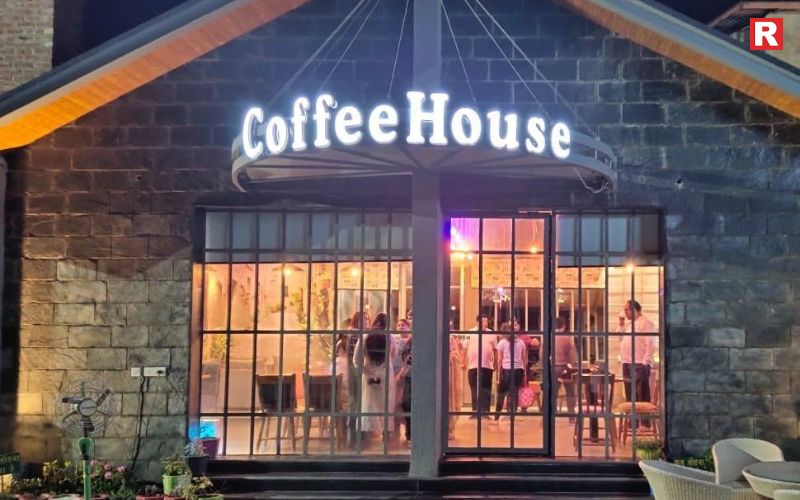
Cafés have become an essential part of India’s urban culture. They serve coffee, tea, sandwiches, and desserts in a casual and cozy environment. These outlets are ideal for work meetings, study sessions, or casual hangouts. Popular Indian cafés include Blue Tokai, Third Wave Coffee, and Café Coffee Day. Many cafés also double as creative spaces, hosting music nights and community events.
5. Pubs and Bars

Pubs and bars are social spaces where people come to unwind with drinks, snacks, and good music. They focus on beverages—especially cocktails, craft beers, and spirits—served with light food options. Outlets like The Beer Café, Social, and Toit have popularized the pub culture in cities like Bengaluru, Mumbai, and Pune. They attract young professionals looking for casual evening entertainment.
6. Lounges
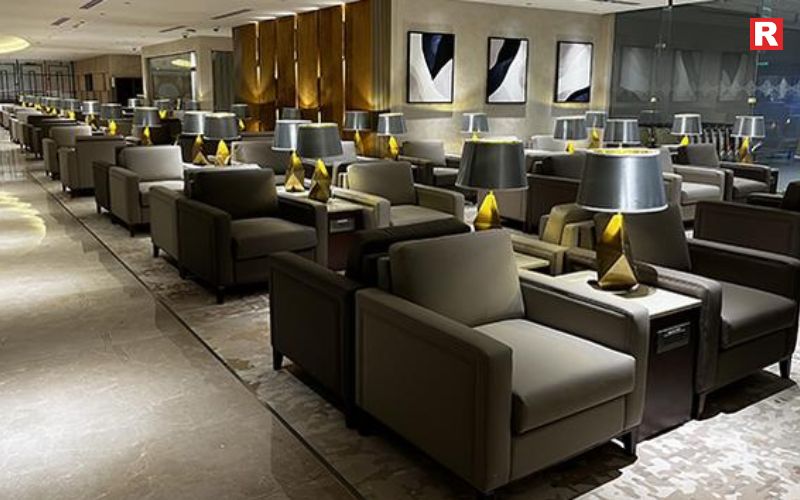
Lounges are more sophisticated than pubs, offering premium cocktails, soft lighting, and comfortable seating. They cater to those seeking an upscale experience with music and gourmet food. Lounges like Aer in Mumbai or PVR Home in Delhi blend fine drinks with a luxurious atmosphere. They are often part of hotels or standalone premium establishments.
Know more: Top 5 States With the Spiciest Food in India
7. Buffets and Multi-Cuisine Restaurants
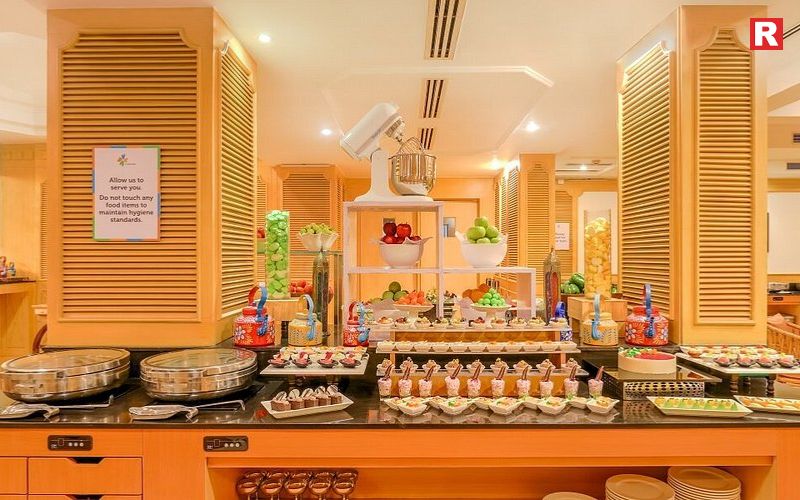
These outlets offer a wide variety of cuisines in a single location. Customers can try multiple dishes at one fixed price. Restaurants like Sigree Global Grill and Barbeque Nation have made buffet dining a favorite among families. The variety, unlimited servings, and value-for-money approach make them popular for group outings and celebrations.
8. Cloud Kitchens
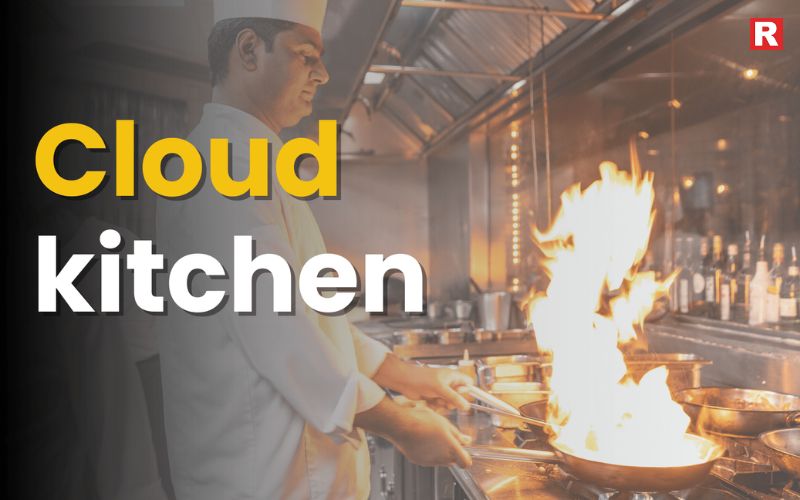
Cloud kitchens are delivery-only outlets that operate without a dine-in space. Orders are placed online through food delivery platforms. This model minimizes costs while allowing brands to expand quickly. Companies like Rebel Foods (Faasos), EatSure, and Biryani By Kilo have revolutionized the Indian food delivery space. With growing digital adoption, cloud kitchens are expected to dominate the future of food service in India.
9. Food Courts
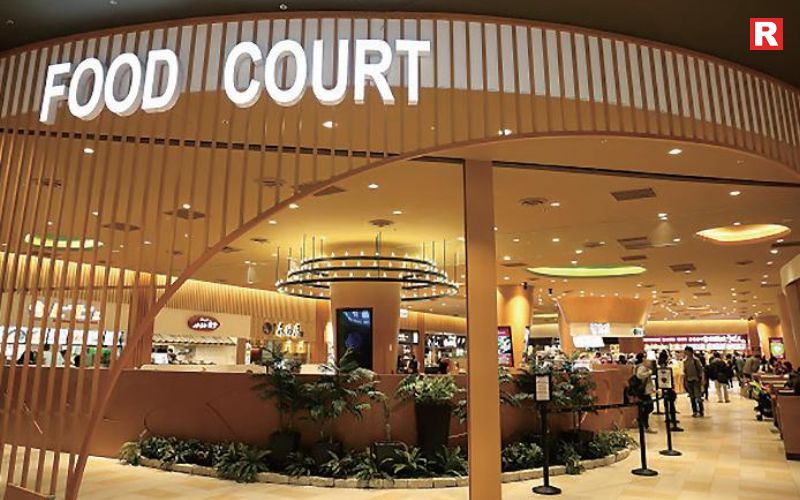
Food courts are commonly found in malls, airports, and large commercial complexes. They house multiple food brands under one roof, allowing customers to choose from a range of cuisines. Each outlet has a counter service format. Examples include food courts in Inorbit Mall, Phoenix Marketcity, and DLF Mall of India. They are convenient for groups with varied preferences.
Also read: 8 Different Types of Kebabs from Lucknow and Why They’re Famous
10. Street Food Stalls

Street food is the soul of India’s culinary culture. Affordable, flavorful, and quick, these stalls serve everything from pani puri and vada pav to chaat and kebabs. Cities like Delhi’s Chandni Chowk, Mumbai’s Khau Galli, and Kolkata’s Park Street are famous for their street food culture. These outlets highlight India’s diversity and authenticity, offering local specialties that define regional cuisines.
11. Bakeries and Confectioneries
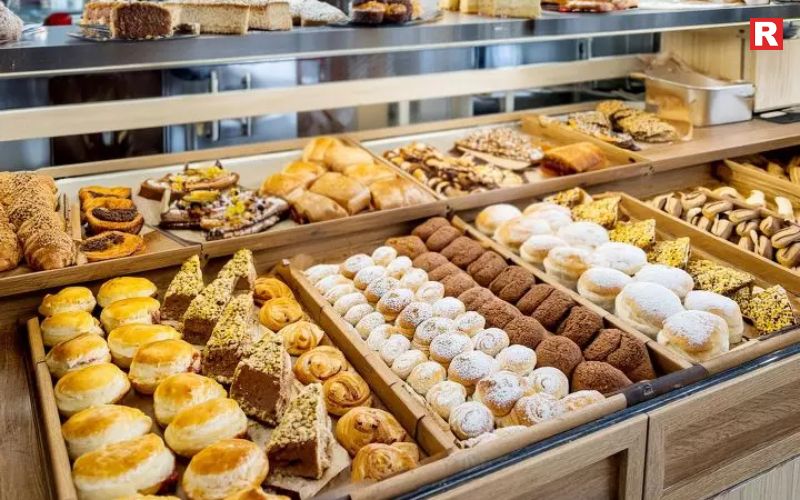
Bakeries focus on baked goods like bread, cakes, pastries, and cookies. Many now also serve beverages and snacks. Brands like Theobroma, Monginis, and L’Opéra are popular for their quality desserts and European-inspired offerings. Bakeries are often a go-to for celebrations, gifting, and quick bites.
12. Canteens and Messes

Canteens and messes provide affordable, home-style meals in offices, schools, colleges, and factories. They focus on nutritious and simple food at minimal cost. Examples include IIT campus messes, railway canteens, and ISRO canteens. These outlets are vital for daily meal needs, especially in institutional setups.
13. Food Trucks and Pop-Ups
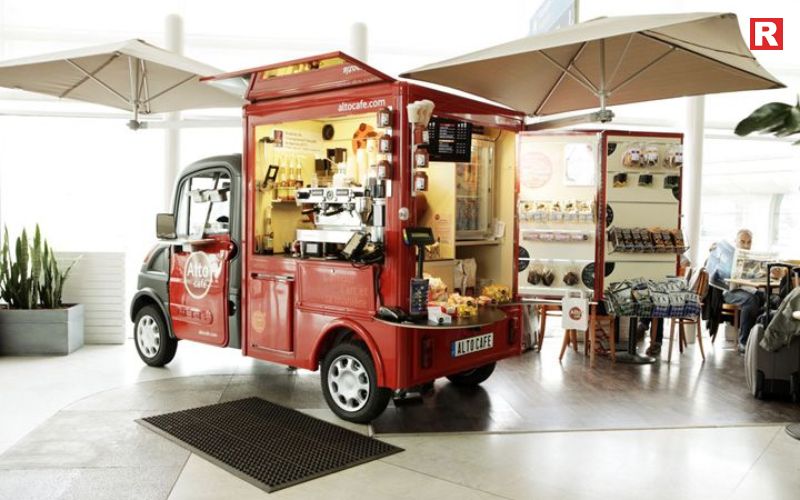
Food trucks have become trendy in Indian metros, offering freshly prepared food on wheels. They are flexible, mobile, and perfect for experimental cuisines. Brands like The Rolling Kitchen and Frugurpop are examples. Pop-up restaurants, on the other hand, are temporary setups that introduce new food concepts and experiences for limited periods.
Check more: Spice Up Your Meals with These 10 Authentic Indian Chutneys That Add a Burst
5 Cities That Serve the Best Non-Vegetarian Street Food
8 Famous Street Foods of Agra You Can’t Miss
14. Specialty Restaurants
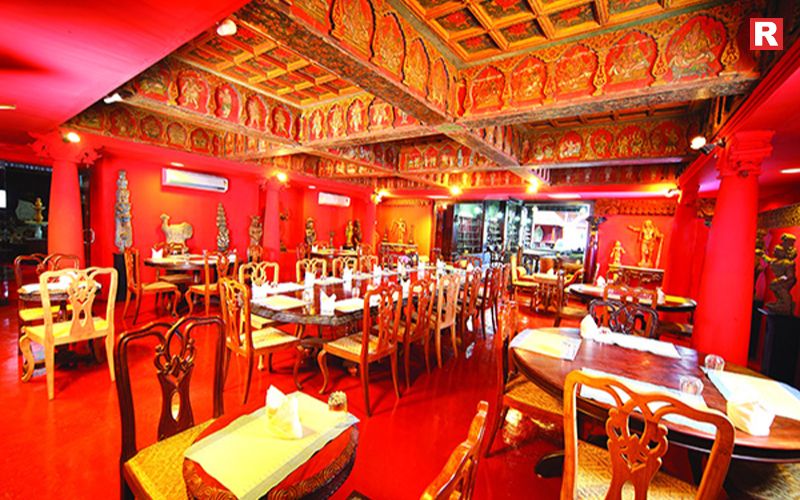
Specialty restaurants focus on a single cuisine or a niche dining concept. They bring authenticity and expertise to their menus. Examples include Mainland China for Chinese cuisine, Saravana Bhavan for South Indian food, and Punjab Grill for North Indian delicacies. These outlets often highlight regional or global culinary traditions.
15. Theme Restaurants
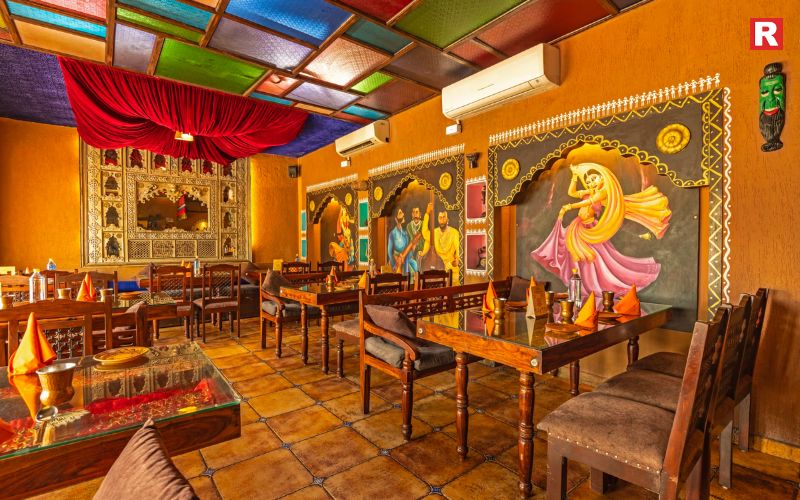
Theme restaurants combine food with a storytelling experience. They are designed around unique interiors, music, and menu concepts. For instance, Village – The Soul of India recreates the feel of a rural setting, while Rainforest Café offers a jungle-inspired atmosphere. These restaurants attract families and tourists seeking immersive experiences.
16. Clubs and Resort Dining
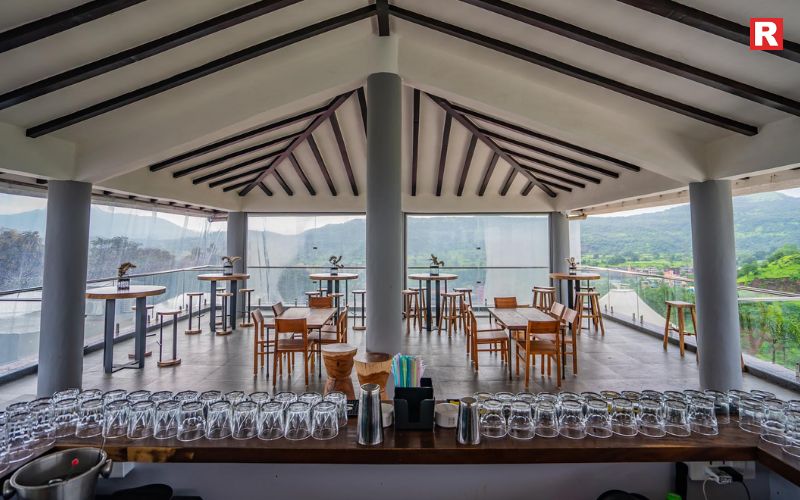
Exclusive clubs and resorts offer premium dining as part of their leisure and hospitality services. Members and guests enjoy gourmet food, curated menus, and scenic settings. Examples include Taj Fort Aguada Resort & Spa in Goa and Bombay Gymkhana Club. These outlets combine recreation, luxury, and dining in one experience.
The Evolution of India’s F&B Industry
India’s dining culture has evolved rapidly in the past decade. Rising disposable income, urban lifestyles, and exposure to global cuisines have changed how people eat out. According to industry reports, the Indian food service market is valued at over ₹5 lakh crore and continues to grow at a steady pace. The expansion of delivery platforms, digital payments, and health-conscious dining has reshaped the F&B ecosystem.
Several factors are fueling this transformation:
- Increased urbanization and working professionals
- Growth of organized retail and mall culture
- Influence of social media and food blogging
- The convenience of online ordering and delivery apps
- Shift toward experiential dining and local sourcing
The Road Ahead!
The next phase of the Indian F&B industry will focus on sustainability, technology, and personalization. Consumers are becoming more conscious of ingredients, waste, and eco-friendly operations. Plant-based menus, contactless dining, and regional Indian cuisines are gaining popularity. The industry is expected to blend tradition with innovation while offering diverse, inclusive dining formats. From luxury dining rooms to vibrant street stalls, India’s food and beverage outlets reflect its cultural and economic diversity. Each type of outlet serves a unique purpose—some focus on speed and convenience, while others create memorable culinary journeys. Together, they form an ecosystem that celebrates India’s love for food, community, and innovation.

The Food Business Industry in India is growing bigger day by day. This has given rise to several new restaurants popping up every day. But let’s be real. Not every new restaurant works well, and most new startups fail just after two to three months of opening. For people who want to work in the food industry someday, this will seem quite disheartening. After all, using your skills to run a successful business where people enjoy your food is a dream of many young cooking enthusiasts. But there are several other options to enter the food industry besides restaurants.
And in this article, we will be talking about just this. As the food industry has grown, many new and innovative types of food business ideas have come forward. Ranging on the resources you have, you can open your choice of business where you do not need to pay any overhead costs or sign any lease contracts. This article will introduce you to five food business ideas that do not require much capital and can help you achieve your culinary dream without opening a fully fledged restaurant.
Read more: Beyond the Kitchen: 5 Essential Qualities Required to Start a Food Business
1. The Ghost Kitchen: The Invisible Empire
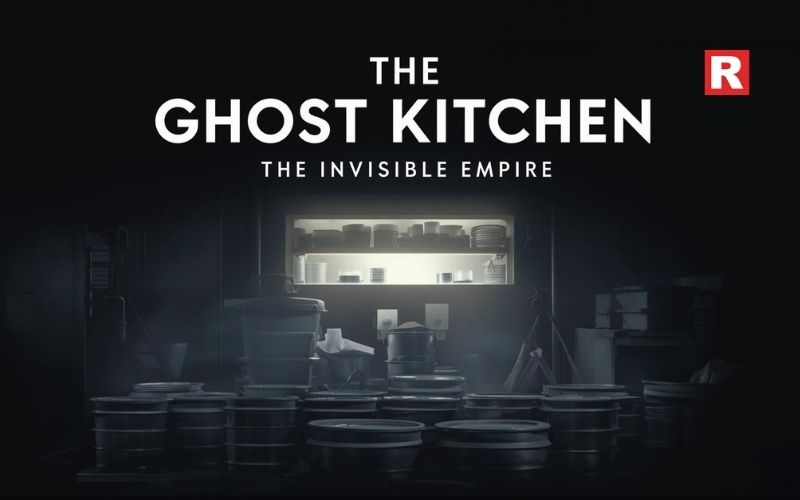
Startup Costs: ₹3 Lakhs - ₹15 Lakhs
A ghost kitchen is a delivery-only food business. There is no physical store, dining room, or waitstaff. Your entire operation is from your kitchen, where you cook the dishes that are ordered through apps like Swiggy, Zomato, or Dunzo and deliver them personally or via these third-party food aggregators.
What’s the Benefit: You have cut down on the single biggest cost in the food industry: prime real estate. Your entire focus and budget can go into the quality of your ingredients and mastering the delivery experience. You can operate from a licensed commercial kitchen, a shared commissary, or even from a home kitchen, wherever the regulations allow.
How to Make It Work:
- Niche Down to Stand Out: Don’t try to cook everything. Firstly, try to master a few dishes from the niche you’re good at. Are you the best at loaded gourmet fries? The pizza parlor with the perfect sourdough crust? The go-to for authentic, regional Thai curries? A focused menu means less waste, lower costs, and a brand that is easy to remember.
- Good Packaging: In a ghost kitchen, your packaging is your greatest problem. You should choose a packaging that can keep food hot, crisp, and secure. A soggy pakora or a leaked gravy will only give you a one-star review. Invest in high-quality, functional, and eco-friendly containers that keep the food secure during travel.
- Market in the Digital World: For a ghost kitchen, the best way to meet with potential customers is via social media. Use Instagram Reels and TikTok to show close-ups of your cooking process. Run "limited time only" specials. Collaborate with local food influencers. Your digital presence is your storefront.
Know more: How “Food Near Me” & “Open Now” Searches are Changing Restaurant Business Models
2. The Food Truck: Your Restaurant on Wheels
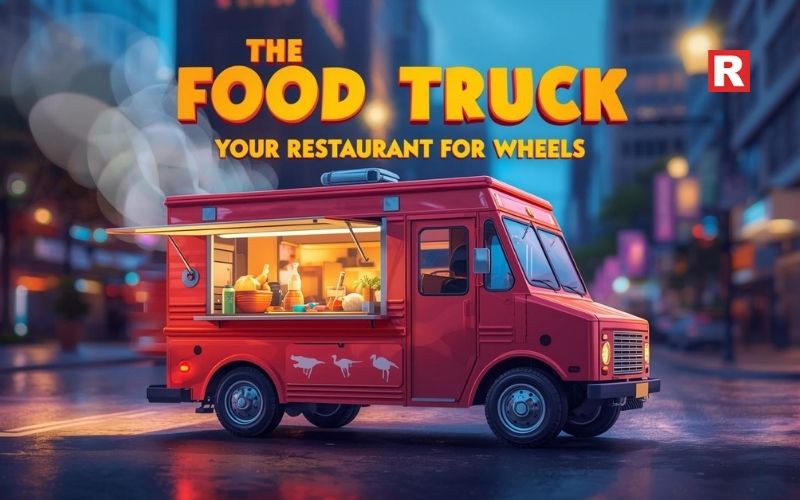
Startup Costs: ₹8 Lakhs - ₹25 Lakhs
This is a mobile kitchen that brings your food directly to your customers. You can park it at office parks during lunch, at breweries in the evening, and at festivals on the weekend.
What’s the Benefit: A food truck offers incredible flexibility and a lower startup cost than a one-spot business. You can test different neighborhoods to find your perfect customer base. Follow what the customers of different areas demand, and also create a "destination" buzz wherever you park.
How to Make It Work:
- Create a Signature Star: Your menu needs a main dish that will be your food truck’s signature. Think of the most successful food trucks. Do your research on them. All food trucks had one amazing thing they were especially known for. What’s your star? Try to find that and brand your food truck according to that.
- Master Location Scouting: Your success is tied to your parking spot. Build relationships with business parks, event organizers, and breweries. A consistent weekly spot builds a loyal customer base.
- Be the Social Butterfly: Your customers need to know where you are! Use social media relentlessly. Post your weekly schedule every Monday. Use Instagram Stories with geotags to show your real-time location. A hungry customer should be able to find you in minutes.
3. The Kitchen Lunch Service: The Office Hero
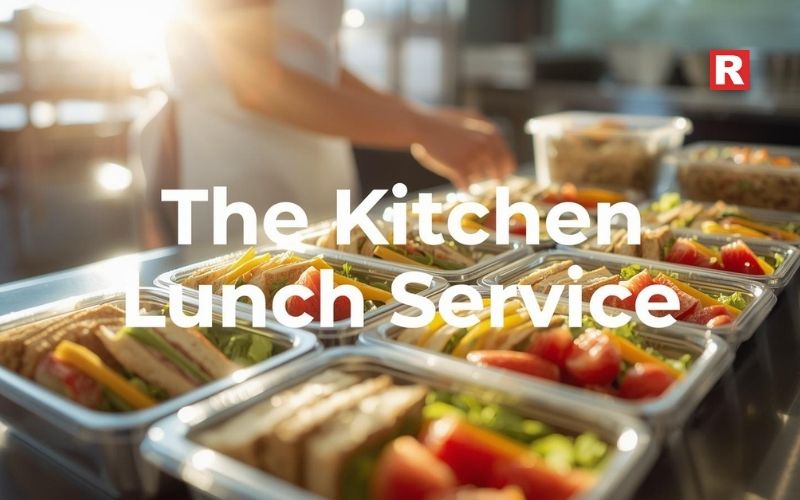
Startup Costs: ₹50,000 - ₹5 Lakhs
Preparing home-cooked lunch for busy office workers who do not have the time to make one themselves is what we call a kitchen lunch service. You prepare fresh, homestyle lunches and deliver them directly to offices or a central pickup point. You’re solving the daily "what’s for lunch?" dilemma for busy professionals.
What’s the Benefit: This model creates predictable, recurring revenue. You get large, bulk orders, which are more efficient than cooking for individual, one-off customers. Also, you become an essential service for your customers.
How to Make It Work:
- Find Your First Clients: Start with your own network. So, try to find office workers or contact offices that can make use of your service. Word-of-mouth is powerful here.
- Create a Simple, Rotating Menu: Offer a weekly menu with 2-3 options per day (e.g., one vegetarian, one non-vegetarian). You can also create a Thali-style system. This simplifies ordering for you and gives customers variety.
- Perfect the Subscription Model: The goal is to move from one-off orders to weekly or monthly subscriptions. Offer a discount for offices that commit to a monthly plan. This gives you financial stability and makes planning a breeze.
What's new: How Taglines and Slogans Affect Your Restaurant Business
4. The Food Stall: The Community Cornerstone
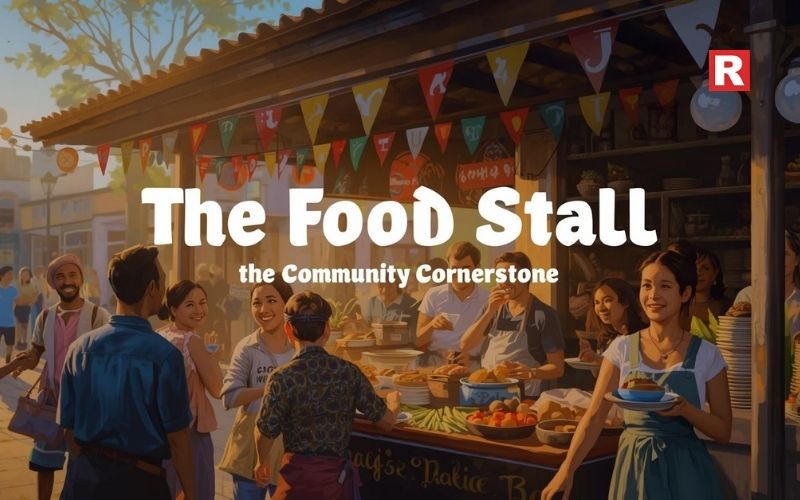
Startup Costs: ₹1 Lakh - ₹8 Lakhs
This business model makes a semi-permanent stall in a high-foot-traffic area like a weekend flea market, a permanent food court, or a mall food hall.
What’s the Benefit: The startup costs are relatively low, and it’s a fantastic way to build a brand and get immediate customer feedback. Also, it offers the vibe of a restaurant without the big rent. You can also benefit from the collective footfall of the market or hall.
How to Make It Work:
- Create an Irresistible, Quick Bite Menu: Your food should be easy to eat while walking. Think about food items like sliders, momos, dosa rolls, loaded nachos, or single-serving desserts. Visual appeal is crucial. As they say, people eat with their eyes first.
- Design a Vibrant, Creative Stall: Your stall is your brand’s face. Invest in a great banner, clear menu boards, and warm lighting. A clean, attractive stall draws people in.
- Engage and Build a Following: Talk to your customers. Offer samples. Ask what they think about your food, the environment, or anything they want to point out. This business requires you to engage with the customers more, so you can turn a one-time buyer into a repeat fan.
Check out: 7 Strategies Restaurants Can Use to Triple Karwa Chauth Revenue
GST Registration for A Restaurant Business: How It Works
5. Cooking Classes: Share Your Secret Recipe

Startup Costs: ₹20,000 - ₹3 Lakhs
Several others like you might like cooking, but don’t know how to cook professionally. Or, maybe a person wants to learn how to cook. Some might even want to learn as a hobby. This is what you’ll do: teach them. You can teach small groups how to cook at the start. This can be done in your own home kitchen, a rented community space, or even virtually.
What’s the Benefit: This business sells an experience, not just a meal. The profit margins on ingredients are high, and people are willing to pay a premium for a fun, social, and educational night out. It requires your knowledge, not just your cooking speed. You need to be slow and teach your students the right way to “cook”
How to Make It Work:
- Pick a Theme: Don’t just offer a "general cooking class." Get specific. Host a "Perfect Pasta from Scratch" night, a "Street Food of Delhi" workshop, or a "Vegan Baking 101" class. Themes are easier to market to the people.
- Create a Seamless Experience: From the welcome drink to the printed recipes they take home, every detail matters. Provide all the ingredients, pre-measured where possible, and high-quality equipment.
- Market to Your Audience: Partner with local companies for corporate team-building events. Promote "Date Night" classes for couples. Offer parent-child baking sessions on weekends. Use platforms like Airbnb Experiences to reach a travel-savvy audience.
Learn more: How to Turn Cricket Fever into Restaurant Revenue
Your Recipe for Success Starts Now
What’s the common ingredient in all of these ideas? They do start small, stay slow for a while, but they can grow big eventually if you make the right business decisions. Also, they help you make genuine connections with the customers. Remember, you’re not just selling any product; you’re selling your skills, your story, your food, and most of all, a solution to their needs.
So, before you decide which food business you want to go for, take a look at your skills and the resources you have. Choose whichever business is right with you, as in the end, your main goal is to show your culinary skills. And take this article as a guide that will help you in deciding the business that is best for you. Good luck!

Carvel, the iconic American brand credited as the inventor of soft serve, is making its highly anticipated entry in India. With a Rs 40 crore investment planned over the next five years, the company aims to open 100 stores across key metros and tier-2 cities. But rather than merely replicating its international model, Carvel is taking a carefully localized approach to carve out its space in India’s competitive dessert market.
“In a QSR ice cream business, we need to have the right ratio of localization while still ensuring that the heritage is adapted and executed,” said Sumer Sethi, CEO & Founder at UNIFY Foodworks, who has partnered with the brand for India expansion. Excerpts:
Localisation as Key
The thought process has gone into who the consumer is while still retaining the heritage, international DNA of the brand. In India, if you do not have anything with gulab jamun or Indian filter coffee or a kasata, we felt it was an incomplete offering. This localization strategy comes to life through innovative menu offerings that blend Carvel’s signature soft serve with Indian flavours. Some of the highlights include Indian Filter Coffee Dasha, Kasata Dasha, and a Gulab Jamun Lava Sundae.
Heritage Meets Innovation
India’s quick-service dessert segment has witnessed rapid growth in recent years, with both homegrown and international players vying for market share. Carvel’s strategy hinges on leveraging its heritage, product defensibility, and offline experiential strength. I look at competition in a very positive way. Competition means the category is growing. It’s very difficult to imitate our product. We also saw that there were a lot of B2C brands coming up online, but there were not enough offline players trying to elevate the offline experience. By focusing on physical retail experiences, Carvel aims to stand apart in a market where many dessert brands are heavily digital-led. We are the ones innovating in the offline space where everyone else is innovating on the digital side of things.
Consistency in focus
To maintain consistency across multiple cities, Carvel has invested significantly in supply chain integration and logistics infrastructure. We’ve invested heavily in core logistics, backend integration of supply chain to ensure that this product comes to life in the store with this texture, consistency and price. Human capital is another key pillar. The company aims to create over 1,000 jobs through its store network and has developed digital SOP training modules from the outset. There’s a lot of investment that has gone into creating a digital SOP training module that will be translated into service and the product experience.
Road Ahead
Currently self-funded, Carvel is open to institutional funding as the brand scales. The business would require institutional funding at some point in time. When is that time and what scale will differ from person to person. Right now, we’re self-funded and we’re good to go with that. The brand also plans to build a strong digital presence through heritage-led storytelling and loyalty programs. Carvel’s India entry isn’t just about bringing an American dessert brand to new consumers—it’s about thoughtfully adapting a heritage concept to local preferences while maintaining global standards. By combining flavour innovation, operational discipline, and strategic expansion, Carvel aims to redefine how Indians experience quick-service desserts. With its heritage as its backbone and India’s evolving dessert culture as fertile ground, Carvel seems poised to create a unique niche in the market.
Carvel’s India expansion will focus first on metros like Bengaluru, Hyderabad, Mumbai, and Delhi before entering tier-2 cities. The brand has earmarked Rs 40 crore to set up 100 stores over the next five to six years, signaling a steady and strategic rollout.

Awadhi cuisine stands as a royal legacy that has deeply influenced North Indian food culture for centuries. It was born in the kitchens of the Nawabs of Lucknow, where food was treated as an art form. The cuisine blends Persian cooking methods, Mughal elegance, and Indian spices with unmatched finesse. Every dish reflects the grandeur of the Nawabi era. Chefs mastered slow-cooking methods, known as dum pukht, to lock in flavors and create soft textures. The use of saffron, kewra water, rose water, ghee, and mild spices gives each dish a unique identity.
Awadhi food is known for its balance. It doesn’t rely on excess heat but focuses on layers of aroma and taste. From soft kebabs that melt in the mouth to biryanis that fill the air with fragrance, each preparation tells a story of skill and tradition. Desserts like Shahi Tukda and Kesar Phirni add a royal finish to the feast. This cuisine is more than just food. It is a journey through history, culture, and timeless flavors. Here are ten iconic Awadhi dishes that no food lover should miss.
Read more: Top 7 Regional Indian Thali Platters That Showcase Culinary Diversity
10 Steamed Indian Dishes Beyond Idli & Dhokla
What Makes Awadhi Cuisine Unique
Awadhi food is known for its dum pukht style of cooking. In this method, dishes are slow-cooked in sealed containers, allowing the ingredients to blend and release their natural aromas. Key ingredients like saffron, kewra water, ghee, rose water, dry fruits, and delicate spices give the food its signature royal touch.
Unlike many fiery Indian dishes, Awadhi cuisine focuses on subtle flavors, balance, and richness without overwhelming the palate. It’s about layering spices, not overpowering them. The result is food that is aromatic, refined, and deeply satisfying.
1. Galouti Kebab – The Nawab’s Favorite
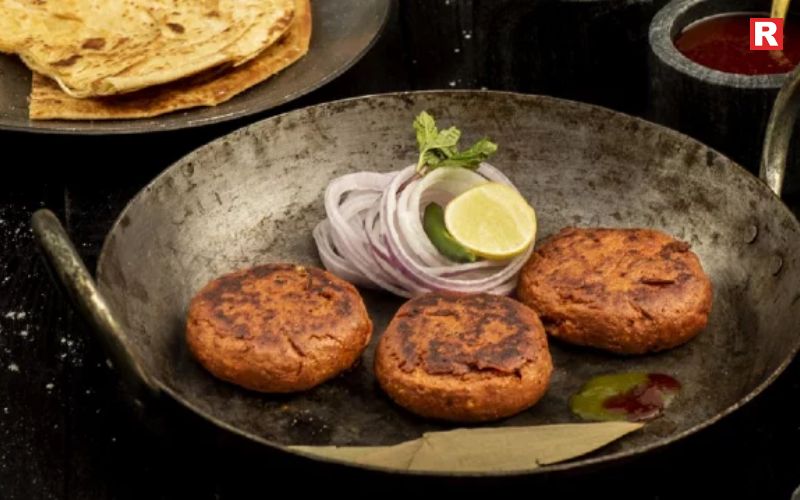
Galouti means “soft” in Hindi, and this kebab lives up to its name. Legend says it was created for a toothless Nawab who didn’t want to give up meat. The chefs crafted a kebab so tender that it would melt in the mouth without chewing. Made with finely minced meat, a secret blend of spices, and cooked on a flat griddle, Galouti Kebabs are famous for their texture and flavor. They’re often served with ultra-thin Roomali Roti or Sheermal.
2. Kakori Kebab – Royal Perfection on Skewers

Kakori Kebabs are named after the town of Kakori near Lucknow. These skewered kebabs are prepared with finely minced meat, often mixed with raw papaya to make them soft. The spices are carefully balanced to enhance, not overpower, the meat’s flavor. The kebabs are grilled on skewers over charcoal, giving them a smoky aroma that’s hard to resist. They’re a symbol of refinement and are often served at royal-style feasts.
3. Awadhi Biryani – Fragrance in Every Grain

Unlike Hyderabadi biryani, which is spicier, Awadhi Biryani is known for its subtle aroma and layers. Rice and meat are cooked separately and then layered together in a sealed pot to slow-cook. This allows the rice to absorb the juices of the meat without losing its delicate texture. Fragrant with saffron, kewra, and ghee, Awadhi Biryani is less about heat and more about flavor. Each bite carries a perfect mix of meat and rice, making it a dish you can never forget.
Know more: Pani Puri Has Different Names in Different Indian States—Know Them All
4. Nihari – A Slow-Cooked Morning Delight
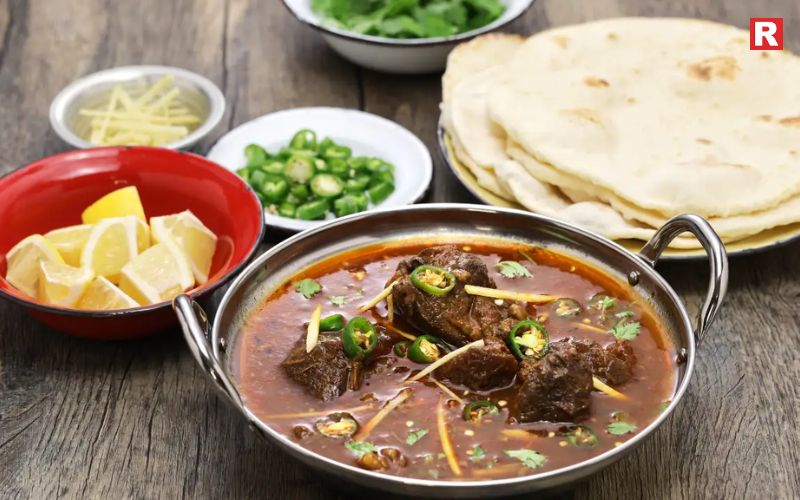
Nihari is a rich, slow-cooked meat stew that was traditionally eaten early in the morning by royal households. The meat, usually lamb or beef, is cooked overnight with spices until it reaches a soft, fall-off-the-bone consistency. Served with warm naan or kulcha, Nihari has a deep, comforting flavor. Even today, in Lucknow, many old eateries start cooking Nihari at night to serve it fresh in the morning.
5. Shami Kebab – A Blend of Meat and Lentils

Shami Kebabs are made by blending minced meat with soaked chana dal (Bengal gram), spices, and herbs. The mixture is shaped into small discs and pan-fried until golden. The combination of lentils and meat gives these kebabs a unique texture. They’re crisp on the outside and soft inside, making them a popular snack or starter in Awadhi homes.
6. Sheermal – Saffron-Infused Sweet Bread

Sheermal is a saffron-flavored, slightly sweet naan that pairs beautifully with kebabs and kormas. Made with flour, milk, ghee, and sugar, it’s baked in a tandoor until soft and golden. In royal times, Sheermal was served as part of elaborate feasts to balance the rich and spicy dishes. Today, it remains a special bread that elevates any meal it accompanies.
7. Roomali Roti – The Delicate Companion

Roomali Roti translates to “handkerchief bread” because of its thin, soft texture. It’s stretched expertly by hand and cooked on an inverted griddle. This roti is light, airy, and perfect for wrapping around kebabs or scooping up kormas. Its elegance lies in its simplicity, making it an indispensable part of an Awadhi feast.
Also check: Top 5 States With the Spiciest Food in India
8. Yakhni Pulao – Subtle and Sophisticated

Yakhni Pulao is made by cooking rice in a flavorful meat broth (yakhni). Unlike biryani, this dish focuses on delicate flavors rather than heavy spices. The meat is simmered with whole spices, and the stock is then used to cook the rice, resulting in a pulao that is fragrant and light. It’s often served at family gatherings and special occasions, where its gentle aroma fills the air.
9. Korma – A Rich Mughal Legacy
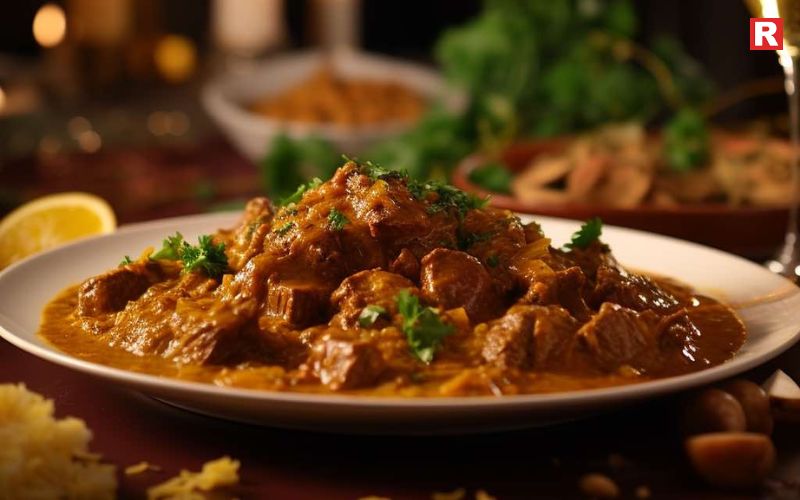
Awadhi Korma is a luxurious curry made with meat, yogurt, nuts, and aromatic spices. The meat is slow-cooked until tender, and the gravy is thick, creamy, and subtly spiced. Korma reflects Mughal influences and was a centerpiece in royal banquets. It’s usually paired with Sheermal or Roomali Roti, allowing the gravy to shine.
10. Shahi Tukda – A Dessert Fit for Royalty

No Awadhi feast is complete without a royal dessert. Shahi Tukda is made by deep-frying bread slices in ghee, soaking them in sugar syrup, and topping them with thickened milk, saffron, and nuts. The result is a dessert that’s rich, aromatic, and indulgent. Another popular option is Kesar Phirni, a creamy rice pudding flavored with saffron and cardamom. Both desserts offer a sweet end to a royal meal.
Awadhi Culinary Traditions: More Than Just Food
In Awadhi culture, meals were not just about eating—they were about experience. The Dastarkhwan, or royal dining spread, brought people together to share food, stories, and traditions.
The royal chefs, known as Rakabdars, guarded their recipes closely and passed them down through generations. Many of today’s Awadhi dishes still follow these age-old methods.
Check more: 5 Ways to Use Garden Cress Seeds (Halim) for Stronger Hair and Bones
5 Foods to Avoid for Better Cholesterol
High Protein Indian Meals You Should Try
Where to Experience Authentic Awadhi Cuisine
To taste Awadhi cuisine at its best, Lucknow remains the top destination. Iconic places like Tunday Kababi, Royal Café, and local street stalls keep traditions alive. Many modern fine-dining restaurants across India are also reviving Awadhi dishes with contemporary presentations while staying true to the original flavors.
A Culinary Journey Worth Taking
Awadhi cuisine represents history, culture, and royal traditions on a single plate. Each dish carries the essence of centuries-old cooking methods and the refined tastes of the Nawabs. The cuisine reflects a deep respect for ingredients, slow cooking, and balanced flavors. Trying a Galouti Kebab in the streets of Lucknow or preparing a Yakhni Pulao at home connects one to this rich heritage. These dishes are not just meals; they are experiences shaped by time and tradition. The aromas, textures, and techniques speak of a royal past that still lives on through every recipe. Awadhi cuisine blends flavor with elegance, making it unique among regional cuisines. It is for those who appreciate both taste and history. For anyone who values culinary artistry and cultural depth, Awadhi food deserves a special place on their list. It remains a timeless journey through India’s royal kitchens.

Noodles hold a special place in everyday life. From the quick 2-minute Maggi cooked at home to the spicy chowmein served at busy street stalls, noodles have become a comfort food for millions. For many, noodles are linked to personal memories. They remind people of late-night hostel meals, rainy evenings with friends, and quick snacks during study breaks. Families enjoy them at home, while restaurants give them a flavourful twist. Street vendors add their own style, making each plate unique.
The noodle market in India has grown rapidly over the years. Reports show that the instant noodles industry is valued at over Rs 6,500 crore and continues to expand every year. New brands, flavours, and healthier options are adding more variety. From classic instant packets to hot plates of hakka noodles, the options keep increasing. This growing love for noodles shows how a simple dish has adapted to Indian tastes. It has become part of daily life, offering comfort, convenience, and a taste that connects people across regions.
Read more: Raise a Toast: Best Whiskies to Celebrate This Festive Season
Top 5 States With the Spiciest Food in India
Ready To Slurp!
Let’s take a nostalgic and tasty journey through the 6 most iconic noodles from India that define our food culture.
1. Maggi – The 2-Minute Legend
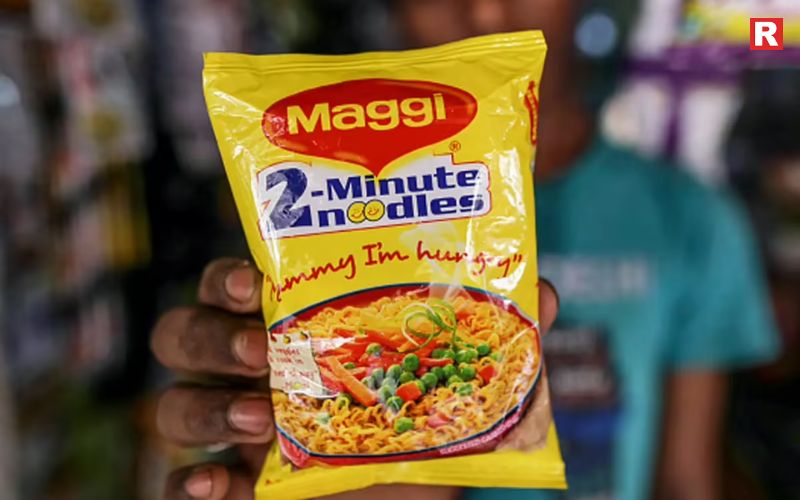
If there is one name that defines noodles in India, it is Maggi. Introduced by Nestlé in the 1980s, Maggi became more than just a product—it became a household name. Almost every Indian has a memory tied to Maggi. For students in hostels, it was the cheapest and quickest meal. For families, it was a rainy-day snack. For trekkers in the Himalayas, Maggi became a warm bowl of comfort at roadside dhabas.
The masala flavor remains the most loved, but Maggi has experimented with over 20 flavors in India. Variants like Maggi Atta noodles, Chicken noodles, and even Maggi Oats have kept it relevant for decades. If you ever visited a hill station, chances are you enjoyed a hot plate of Maggi while looking at the mountains. That memory is what makes Maggi iconic—it is not just food, it is nostalgia.
2. Chowmein – The Street-Style Superstar
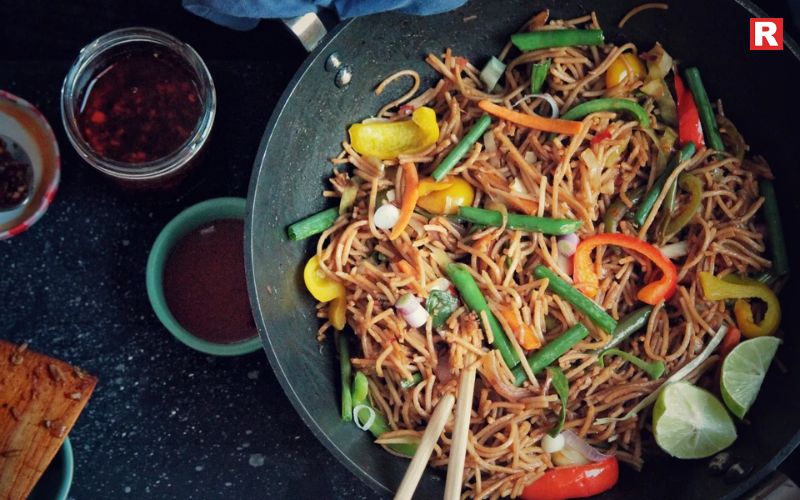
Walk down any busy Indian street in the evening, and you will catch the unmistakable smell of chowmein frying in a large iron wok. Chowmein is the king of Indian street noodles and one of the most affordable snacks for all age groups. Originally influenced by Chinese cuisine, chowmein took on its own desi identity in India. Tossed with crunchy vegetables, spicy sauces, and sometimes scrambled eggs or chicken, it is a quick, filling, and delicious meal. Street chowmein is not just about taste—it is about experience. Watching the vendor toss the noodles in fire, hearing the sizzle, and getting a plate loaded with chili sauce and vinegar is an experience every Indian has had.
Interesting Fact: In many small towns, chowmein carts outsell bigger fast-food outlets. For just Rs 20, you can get a plate that fills you up and keeps you coming back for more.
Know more: India’s Top 5 Vegetarian Restaurant Brands You Can’t Miss
3. Top Ramen – Maggi’s Challenger
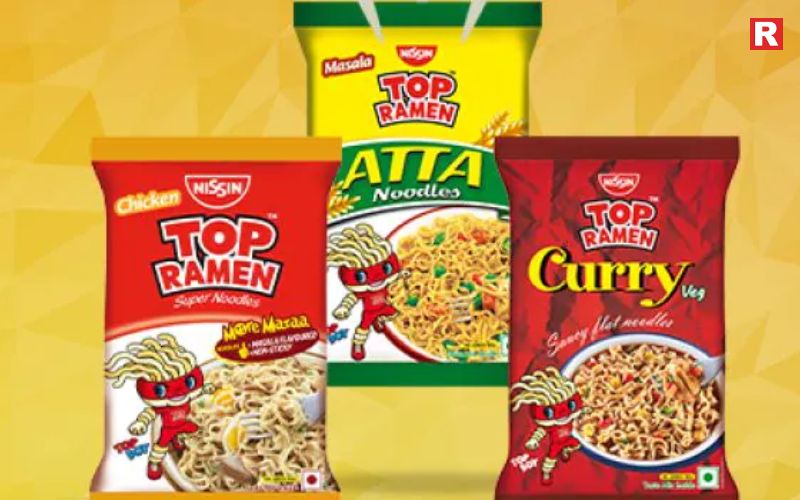
In the 1990s, Top Ramen entered the Indian market as a strong competitor to Maggi. Marketed as “Smoodles” or smooth noodles, Top Ramen quickly built its loyal fan base. Its Curry Masala flavor became a cult favorite, especially in South India. Unlike Maggi, Top Ramen had a slightly different texture and spice mix, which appealed to many households. Though it never beat Maggi in overall sales, Top Ramen remains a nostalgic brand. Many families who grew up eating it in the 1990s still pick it over other brands.
Fact: If Maggi was the hostel king, Top Ramen was the family choice. Mothers loved that it was smooth and easy to cook, while kids loved its different taste.
4. Yippee! Noodles – The Orange Spiral Favorite
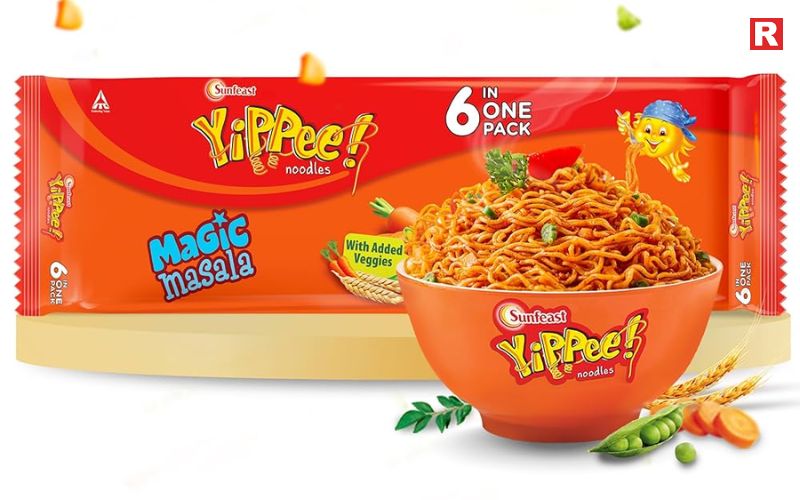
In 2010, ITC launched Sunfeast Yippee! Noodles, positioning it as a modern alternative to Maggi. Its biggest selling point was that the noodles did not stick together after cooking. The long, spiral noodles and tangy flavors like Magic Masala gave it a distinct identity. Yippee! rose to fame during the Maggi ban in 2015, when consumers started looking for alternatives. Today, Yippee! enjoys strong popularity, especially among children who prefer its slightly less spicy taste.
Fun Detail: Parents often choose Yippee! because it is marketed as having no lumps and staying fresh for longer, making it easier for kids to enjoy without the mess.
5. Hakka Noodles – The Restaurant Hero
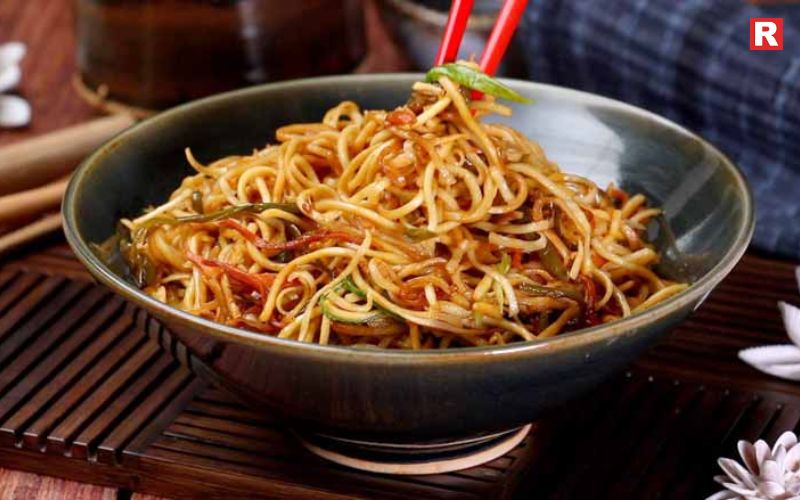
If you go to an Indian-Chinese restaurant, one dish will always be on the menu—Hakka Noodles. Soft, long noodles tossed with soy sauce, vinegar, spring onions, and vegetables, Hakka noodles are the backbone of Indo-Chinese cuisine in India. The dish is said to have originated in Kolkata’s Tangra region, where Chinese immigrants introduced their style of cooking. Over time, the Indian palate made it spicier, tangier, and more flavorful. Hakka noodles are not just eaten plain—they form the base for countless other dishes like Schezwan Noodles, Chilli Garlic Noodles, and Manchurian Noodles.
Fun Detail: Family dinners at Chinese restaurants are incomplete without a big plate of Hakka noodles. Paired with chili chicken or gobi manchurian, it is comfort food for every age group.
Also check: 5 Delicious Snacks to Enjoy This Navratri Season
6. Instant Cup Noodles – The On-the-Go Revolution
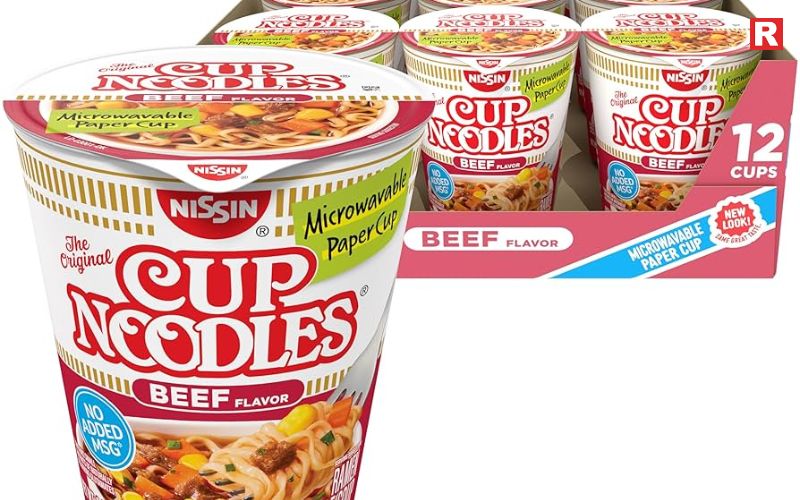
In today’s fast-paced world, cup noodles have changed the way people eat. Introduced by brands like Nissin Cup Noodles and Maggi Cuppa, these are designed for convenience. Just add hot water, and your noodles are ready in a few minutes. Cup noodles are especially popular among office workers, college students, and travelers. They are portable, require no stove, and come in multiple flavors.
Interesting Fact: During train journeys and in offices without kitchens, cup noodles have become a lifesaver. They combine taste, convenience, and affordability all in one.
Why India Loves Noodles So Much
Noodles are affordable, quick to make, and versatile. They fit every occasion—from a child’s after-school snack to a family dinner or a midnight craving. Unlike traditional Indian meals that take time to prepare, noodles are instant comfort food. The flavors are also customizable. Some like it plain, others add vegetables, eggs, cheese, or even butter chicken to make it unique.
Health-conscious consumers are looking for baked, multigrain, and gluten-free options. Brands are innovating with local flavors—think masala oats noodles, sambar noodles, and even millet noodles. Restaurants are also experimenting with fusion dishes like noodle dosas, noodle samosas, and noodle pizzas, showing how adaptable this dish can be.
Check more: Top 7 Regional Indian Thali Platters That Showcase Culinary Diversity
Pani Puri Has Different Names in Different Indian States—Know Them All
7 Chinese Dishes That Can Be a Healthy Option for Your Diet
The Business of Noodles in India
The instant noodle market in India has seen exponential growth. According to industry reports, the market size is valued at more than Rs 6,500 crore and is expected to grow at a steady pace.
Maggi still holds the largest share, but brands like Yippee! and Top Ramen are catching up. With healthier alternatives like millet noodles and oats noodles now entering the market, the future looks even more promising.
Enjoy The Slurp!
Noodles in India are connected to the people of India; they have created stories, memories, and emotions. Whether it is the 2-minute Maggi that reminds you of childhood, chowmein from a street stall after school, or a hot cup of noodles during a late-night study session, these dishes stay close to the heart.
The 6 iconic noodles of India—Maggi, Chowmein, Top Ramen, Yippee!, Hakka Noodles, and Cup Noodles—show how deeply this simple dish has become part of Indian culture. And with new varieties and healthier versions entering the market, the love story between India and noodles is only getting stronger.

Steaming is one of the healthiest ways to cook. It uses heat and water to cook food gently. This method keeps the natural flavors intact. It also preserves nutrients better than frying or roasting. In India, steaming is often associated with idli and dhokla. However, it is used in many other dishes across the country. Indian cuisine has a long tradition of steaming. Each region has its own unique dishes made this way. These dishes are light, soft, and full of flavor. They are easy to digest and often low in oil. Steamed foods are served for breakfast, as snacks, or during festivals. Steamed dishes are not only healthy but also rich in culture. They show how simple ingredients can be turned into something special. Many of these recipes have been passed down through generations. They reflect local ingredients, flavors, and traditions.
For those who think steaming is plain, these dishes offer a surprise. They are vibrant, tasty, and satisfying. From sweet treats to savory snacks, Indian steamed foods are diverse and full of character. Here are ten steamed dishes from India beyond the usual idli and dhokla.
Read more: Top Rajasthani Dishes to Try This Festive Season
Pani Puri Has Different Names in Different Indian States—Know Them All
1. Patra (Alu Vadi) – Gujarat

Patra, also called Alu Vadi in Maharashtra, is a dish made from colocasia leaves. The leaves are smeared with a spicy gram flour paste. Then they are rolled up, steamed, and sliced. Sometimes, slices are lightly pan-fried for extra crunch.
Patra is soft, flavorful, and slightly tangy. It is a popular snack in Gujarat and Maharashtra. It is often served with green chutney or sweet tamarind sauce. Patra is also healthy, packed with fiber and antioxidants from the leaves.
2. Pitha – Assam, Odisha, West Bengal

Pitha is a steamed rice dumpling that comes in many varieties across eastern India. Some pithas are sweet, filled with coconut and jaggery, while others are savory with lentils or vegetables.
In Assam and Odisha, pithas are a must during festivals like Makar Sankranti. In West Bengal, the bhapa pitha is popular, where rice flour dough is steamed with a filling of jaggery and coconut. Soft and aromatic, pithas pair perfectly with tea or milk.
3. Modak – Maharashtra
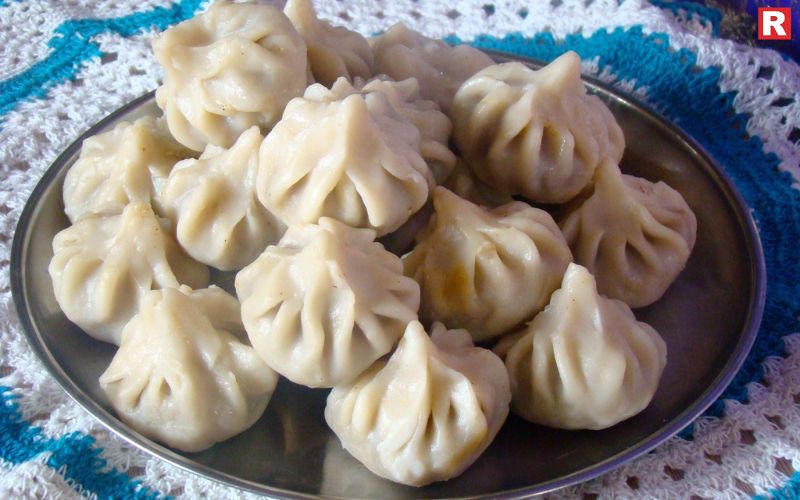
Modak is famous in Maharashtra as an offering to Lord Ganesha. It is a small dumpling made with rice flour and stuffed with jaggery and coconut. The dumplings are steamed until soft and slightly sticky.
Modaks have a unique texture – soft on the outside, sweet on the inside. They are made especially during Ganesh Chaturthi. Apart from festivals, modaks are also enjoyed as a healthy sweet snack at home.
Know more: 10 Different Types of South Indian Rice Dishes
4. Kharvas – Maharashtra

Kharvas is a traditional Maharashtrian dessert. It is made with fresh calf’s milk, flavored with cardamom, saffron, or nutmeg. The mixture is poured into small cups and steamed to set into a smooth pudding.
Kharvas is rich, creamy, and naturally sweet. It is often served chilled and eaten as a dessert after meals. Despite being indulgent, it is lighter than regular milk-based sweets because it is steamed, not boiled with sugar.
5. Undhiyu Muthiya – Gujarat

Undhiyu is a popular Gujarati winter dish. A key part of it is muthiya, which are steamed dumplings made from gram flour, fenugreek leaves, and spices. The name “muthiya” comes from the way the dough is shaped by hand, like a fist.
These dumplings are steamed first and then added to a mix of seasonal vegetables in Undhiyu. They give the dish a soft, hearty bite and soak up the flavors of the spices. Muthiya can also be eaten on their own as a snack, paired with chutney. They are rich in fiber, filling, and easy to digest. This steamed treat shows how Gujarati cooking turns simple ingredients into something wholesome and delicious.
6. Hando – Gujarat

Hando is a traditional Gujarati steamed dish often prepared during festivals and family gatherings. It is made from gram flour mixed with yogurt, spices, and sometimes fresh greens. The batter is poured into a steamer and cooked until firm and fluffy. Once steamed, Hando is cut into square or diamond pieces and tempered with mustard seeds, curry leaves, and sesame seeds. The result is soft, spongy pieces with a light tangy taste. It is usually enjoyed with green chutney or a drizzle of oil.
Hando is rich in protein, light on the stomach, and naturally low in oil. Many families prepare it as a snack or breakfast dish. Its soft texture and balanced flavors make it a favorite across Gujarat.
7. Sidu – Himachal Pradesh
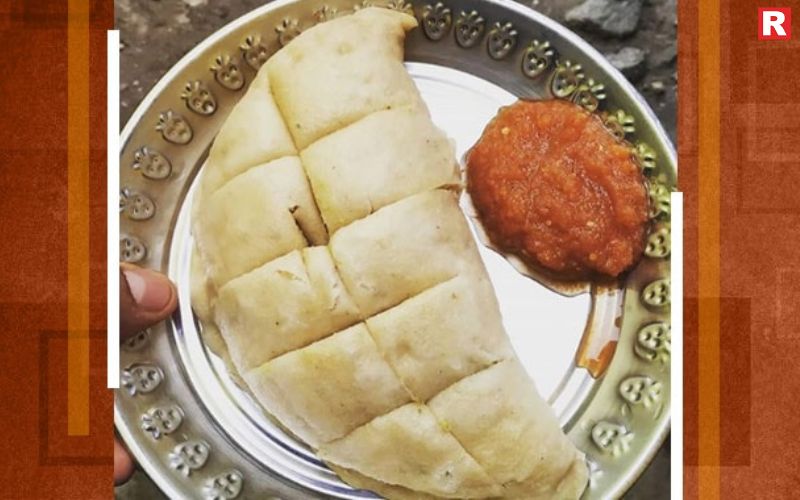
Sidu is a traditional bread from Himachal Pradesh, cooked by steaming instead of baking. It is made with wheat flour dough that is allowed to ferment, giving it a light and airy texture. The dough is then stuffed with fillings like walnut paste, poppy seeds, or sometimes spiced lentils before being steamed. Sidu has a soft inside and a slightly firm outer layer. It is usually served with ghee, dal, or green chutney. Locals enjoy it during winters as it is hearty and keeps the body warm.
This dish is rich in flavor and nutrition. The fermentation makes it easy to digest, while the fillings add protein and healthy fats. Sidu reflects the simple yet wholesome cooking traditions of the Himalayan region.
Also check: These 7 Foods Can Help You Cool Your Stomach in Summer
8. Steamed Momo – Himalayan Regions
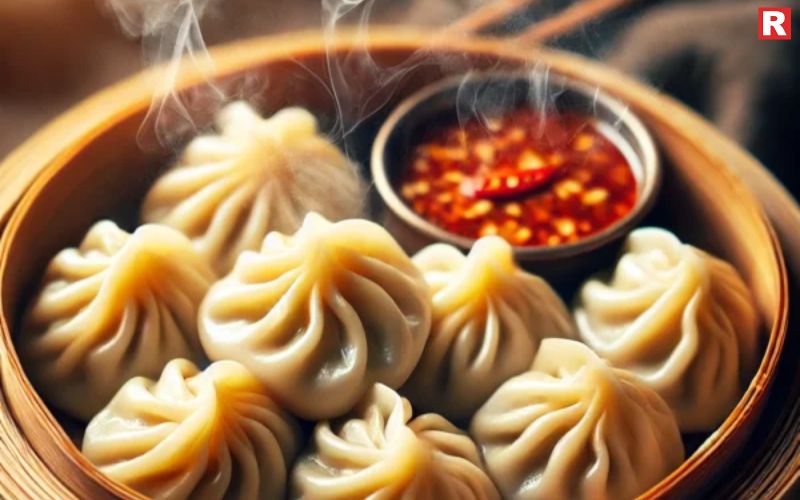
Momos are popular in Himalayan states like Sikkim, Himachal Pradesh, and Arunachal Pradesh. These dumplings are made with wheat or rice flour and stuffed with vegetables, paneer, or meat.
Steaming keeps momos soft and juicy. They are often served with spicy chili sauce or sesame chutney. Momos are a favorite street food but can also be prepared at home as a light, satisfying meal.
9. Puttu – Kerala
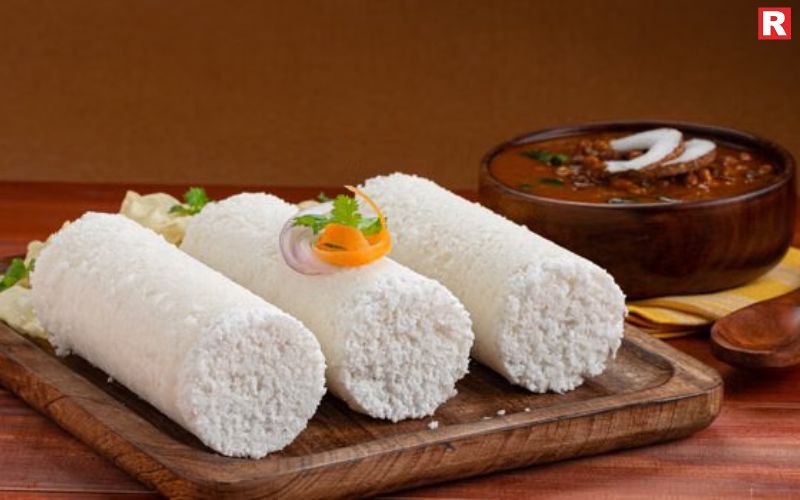
Puttu is a traditional Kerala breakfast made from rice flour layered with grated coconut. It is steamed in a cylindrical mold until soft. Puttu is usually served with ripe banana, jaggery, chickpea curry, or a drizzle of ghee.
Puttu is light, filling, and easy to digest. It can also be made with wheat flour or ragi for healthier versions. Kerala families often enjoy puttu as a hearty breakfast, especially on weekends.
10. Patra Ni Machi – Parsi Cuisine
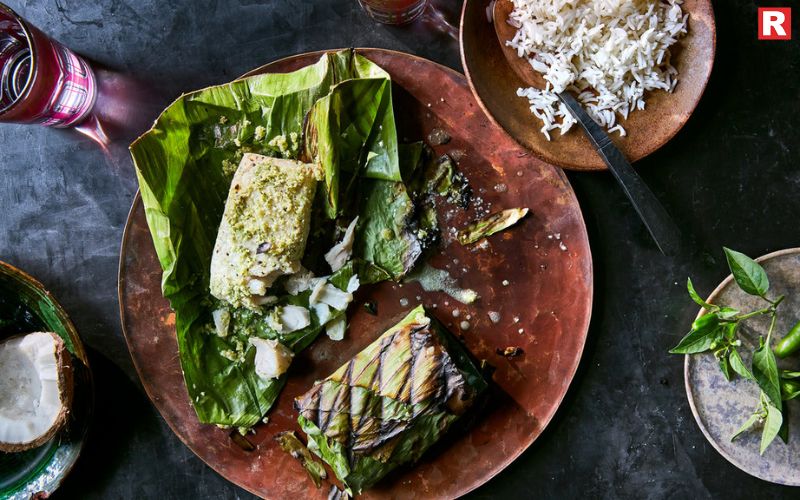
Patra Ni Machi is a famous steamed fish dish from Parsi cuisine. Fresh fish fillets are marinated with a tangy and spicy green chutney made of coconut, coriander, and mint. The fish is then wrapped in banana leaves and steamed until tender. The banana leaves lock in the moisture and aroma, making the fish juicy and full of flavor. This dish is often prepared during weddings, festivals, and family celebrations in Parsi households.
Patra Ni Machi is healthy because it uses minimal oil and relies on steaming to cook the fish. The combination of fresh herbs and soft fish gives it a refreshing and light taste. It is usually served with rice or enjoyed on its own as a delicacy.
Why You Should Try These Dishes
Steaming is a healthy cooking method that requires little or no oil. These dishes are low in calories but high in flavor. They preserve the nutrients of vegetables, grains, and dairy. They are also light on the stomach and suitable for all age groups.
Trying these dishes also gives you a glimpse of India’s diverse culinary culture. Each dish tells a story of tradition, festivals, and regional flavors. Beyond the well-known idli and dhokla, these steamed delights bring something new to your table.
Check more: The Top 7 Sweet Dishes You Can’t Miss This Durga Puja
12 Delicious High-Protein Foods to Eat Daily for a Healthier You
Must-Try Sweet Dishes on Dandiya Night
Tips for Cooking Steamed Indian Dishes at Home
- Use fresh ingredients for the best taste.
- Line the steamer with banana leaves or parchment paper to avoid sticking.
- Steam at medium heat to cook evenly.
- Serve with chutneys, curries, or ghee to enhance flavors.
- Experiment with millets, rice, or lentils for healthy variations.
A Healthy Treat!
Each dish, from Gujarat to Kerala, has a unique taste and texture. Steaming highlights the natural flavor of ingredients. It also keeps nutrients intact. These dishes are light, easy to digest, and healthy. Many are passed down through generations. They are served at festivals, family gatherings, and daily meals. Steamed foods can be sweet or savory. They often use local grains, vegetables, or dairy. Steaming is quick and simple. It is a gentle way to cook without losing taste. For anyone who enjoys healthy food and exploring regional recipes, these dishes are ideal. The next time a light, wholesome meal is needed, one of these ten steamed Indian dishes will offer flavor, nutrition, and a touch of tradition.

Dandiya night is one of the most fun and lively parts of Navratri. People dress in colorful clothes. The music is energetic and full of beats. Everyone gathers to dance in groups. It is a time to enjoy and celebrate together. After dancing for hours, people feel tired but happy. They look forward to eating snacks and sweets. Sweet dishes are an important part of the celebration. They give energy and refresh the body. They also bring a smile to everyone’s face. Sweets are often shared with family and friends. They create moments of togetherness and joy.
The sweets served on Dandiya night are special. They are full of tradition and flavors. Most of these sweets are easy to make at home. They do not need fancy ingredients. Many of these recipes have been passed down through generations. People love these sweets for their taste and comfort. Whether it is creamy, soft, or crunchy, every sweet has its own charm. These must-try sweets make Dandiya night even more memorable. They add sweetness to the music, dance, and festive spirit. Everyone looks forward to enjoying them after a night of celebration.
Read more: The Secret Health Benefits of Matcha Tea You Probably Didn’t Know
Pani Puri Has Different Names in Different Indian States—Know Them All
Why Sweets Are Important on Dandiya Night
On Dandiya night, sweets are more than just food. They are a part of celebration. After hours of dancing, the body needs energy. Sweets give instant strength. They also cool the body, especially during long nights of celebration. In many homes, sweets are prepared as an offering to Goddess Durga. Sharing them with friends and family makes the festival more special.
Sweets also help balance the flavors of other festival snacks. Dandiya night is full of spicy and salty foods. Adding a sweet dish brings harmony to the meal. It gives a perfect end to the festive evening.
Top Sweet Dishes to Try on Dandiya Night
Here are some traditional and popular sweets that everyone must try. They are simple, tasty, and perfect for sharing during the festival.
1. Shrikhand

Shrikhand is a creamy and soft dessert made with thick yogurt. It is flavored with saffron, cardamom, and nuts. The taste is mild but rich. It is not too sweet, which makes it perfect after eating spicy foods. Shrikhand is a favorite in Gujarat and Maharashtra. Many families prepare it at home during festivals. It is served chilled and looks beautiful in bowls with dry fruits on top. It is also a healthy option as yogurt is good for digestion.
- How to make it: Hang curd in a muslin cloth for a few hours to remove excess water. Beat it until smooth. Add powdered sugar, saffron strands soaked in warm milk, cardamom powder, and chopped nuts. Mix well and chill for a few hours before serving.
2. Mohanthal

Mohanthal is a rich sweet made from gram flour (besan), ghee, and sugar. It has a deep, warm flavor with hints of cardamom and nutmeg. It is soft but has a crumbly texture. Mohanthal is considered an offering to Goddess Durga during Navratri. This sweet is easy to make but requires patience while stirring the mixture. The aroma of ghee and spices fills the kitchen while it is being prepared. It can be stored for a few days, making it a practical choice for festive nights.
- How to make it: Roast gram flour in ghee until it smells nutty. Boil sugar with water and make a syrup. Add it to the roasted flour along with cardamom powder, saffron, and nuts. Cook until it thickens. Pour into a tray, let it cool, and cut into squares.
Know more: 10 Must-Try Gujarati Dishes That Will Delight Your Taste Buds
3. Malpua

Malpua is a soft and fluffy pancake soaked in sugar syrup. It is crisp on the edges and soft in the center. Many people enjoy it with thick rabri (sweet condensed milk). It is a festive favorite across many regions of India. During Dandiya night, malpua is often served with warm milk or rabri, making it more indulgent. Kids especially love this sweet.
- How to make it: Mix flour, milk, sugar, fennel seeds, and a pinch of cardamom powder to form a smooth batter. Let it rest for 30 minutes. Deep fry small portions until golden. Soak them in warm sugar syrup for a few minutes before serving.
4. Kesari / Saffron Halwa

Kesari, also called saffron halwa, is a quick and festive dessert. It is made with semolina, ghee, sugar, saffron, and dry fruits. The vibrant orange or yellow color makes it visually appealing. It is easy to prepare and can be made in under 20 minutes. The taste is rich, nutty, and fragrant. This dish is perfect for people who want something sweet but light after hours of dancing.
How to make it: Heat ghee in a pan. Roast semolina until aromatic. Add hot water and stir to avoid lumps. Add sugar, saffron strands, cardamom powder, and chopped dry fruits like cashews and almonds. Cook until the mixture thickens and is soft.
5. Coconut Ladoo

Coconut ladoo is a simple but tasty sweet. It is made with fresh grated coconut and jaggery or sugar. It has a natural sweetness and a chewy texture. It does not need baking or complicated steps, making it a quick option. These ladoos are portable and easy to share with friends. They are also light, so they don’t feel heavy after a long night of celebration.
- How to make it: In a pan, melt jaggery with a little water. Add grated coconut and cook until it thickens. Add cardamom powder and mix well. Shape into small balls while warm and let them cool.
Also check: Best Newly Launched Ice Cream Flavour to Try in 2025
Extra Tips for Serving Sweets on Dandiya Night
- Mix flavors – Pair rich sweets like mohanthal with lighter options like shrikhand to offer variety.
- Add garnishes – Sprinkle dry fruits, edible silver leaf, or saffron strands for extra flair.
- Keep portions small – Since many other dishes are served, small portions of sweets help balance the meal.
- Use homemade ingredients – Freshly made sweets taste better and give a personal touch to the celebration.
- Presentation matters – Arrange sweets in colorful bowls or plates. Add flowers or festive decor to create a beautiful setup for guests.
Facts You Should Know
- Shrikhand has roots in both Gujarat and Maharashtra. It is known as a cooling dessert during summer.
- Mohanthal is offered to Goddess Durga and is considered an auspicious dish.
- Malpua dates back to ancient times and is linked to royal kitchens.
- Kesari is popular during many festivals, including Navratri and Diwali, because of its saffron aroma.
- Coconut ladoo is a favorite for quick festive snacks and is loved by both kids and adults.
Check more: 6 Common Fruits That Have the Highest Amount of Fibre: Your Tasty and Simple
10 Benefits of Having One Teaspoon of Honey in the Morning
12 Delicious High-Protein Foods to Eat Daily for a Healthier You
Shubh Navratri
Sweet dishes bring charm and warmth to Dandiya night. They are more than just tasty treats. They are a way to celebrate tradition and family. Sharing sweets with loved ones makes the festival more special. These sweets are a part of many people’s lives during Navratri. Creamy shrikhand, rich mohanthal, and soft malpua are some of the popular choices. Each of them has a unique taste and texture. They add sweetness to the festive mood. Preparing these sweets at home is simple and fun. It allows families to spend time together. The smell of ghee, saffron, and cardamom fills the kitchen, making it feel even more festive. Serving these sweets after dancing and music brings smiles to everyone’s faces. They create happy memories that people cherish for a long time. This Navratri, trying these sweets at home will make the celebrations even more joyful and meaningful.

Food is emotion for everyone. For some, it’s a connection to home, family, and tradition. This is especially true when it comes to snacks. Across India, every state has its own special snacks. These are not just tasty treats—they carry memories, flavors, and culture. Now, thanks to quick commerce (Q-commerce) platforms like Swiggy Instamart, Blinkit, Zepto, and others, these regional favorites are reaching people faster than ever before.
Whether you miss the crunchy murukku from your hometown or the spicy misal that reminds you of weekend breakfasts, these snacks are helping you feel closer to home. Q-commerce platforms are making it possible to order them in minutes, even if you live in a big city far from your roots. In this article, we will explore how these regional snack stars are becoming a hit and why more people are turning to them.
Read more: Kootu Curry Recipe: Traditional Kerala-Style Curry for Your Festive Menu
Pani Puri Has Different Names in Different Indian States—Know Them All
Why Are Regional Snacks Trending on Q-Commerce?
There are many reasons why regional snacks are becoming popular on Q-commerce platforms.
- First, people are always looking for comfort food. Snacks from childhood or family gatherings offer a sense of familiarity. When you are away from home, these snacks bring back memories.
- Second, Q-commerce platforms make it very easy to order them. Earlier, you had to visit local shops or wait for family members to send them from home. Now, you can order them through your phone and get them delivered in 30 minutes or less.
- Third, many platforms are working with local vendors. They ensure that the snacks are authentic and of high quality. Some even offer homemade or artisanal versions that taste just like home-made snacks.
- Lastly, regional snacks are affordable and loved by all age groups. They are perfect for tea time, quick bites, or celebrations. This makes them a great choice for daily snacking.
Popular Regional Snacks Winning Big
Let’s take a closer look at some of the most popular snacks that are winning hearts across the country.
1. Murukku – South India’s Crispy Delight
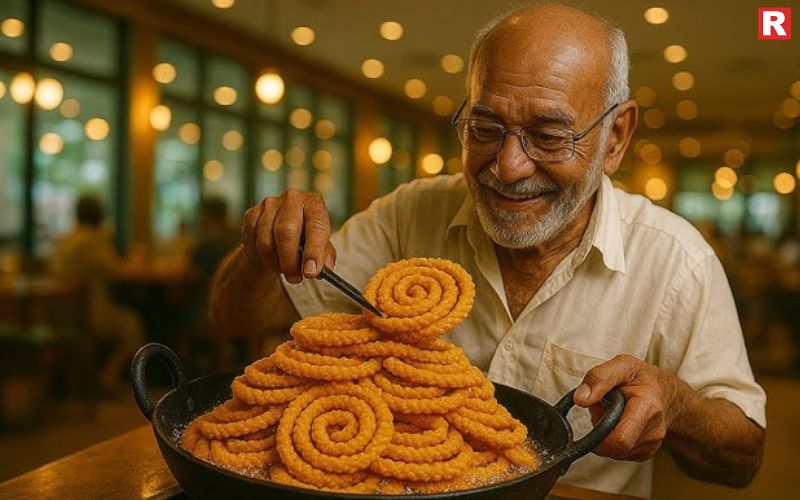
Murukku is a crunchy snack made from rice flour and spices. It is mostly enjoyed in states like Tamil Nadu, Andhra Pradesh, and Karnataka. Traditionally, people make it at home during festivals like Diwali or other family celebrations. Now, you can easily order murukku from Q-commerce platforms. Many brands offer homemade flavors that remind people of their mothers’ or grandmothers’ cooking. The snack’s light, crispy texture and savory spices make it perfect for tea time. People living in metros like Bangalore or Chennai especially order murukku when they miss the festive spirit.
2. Misal – Maharashtra’s Spicy Favorite
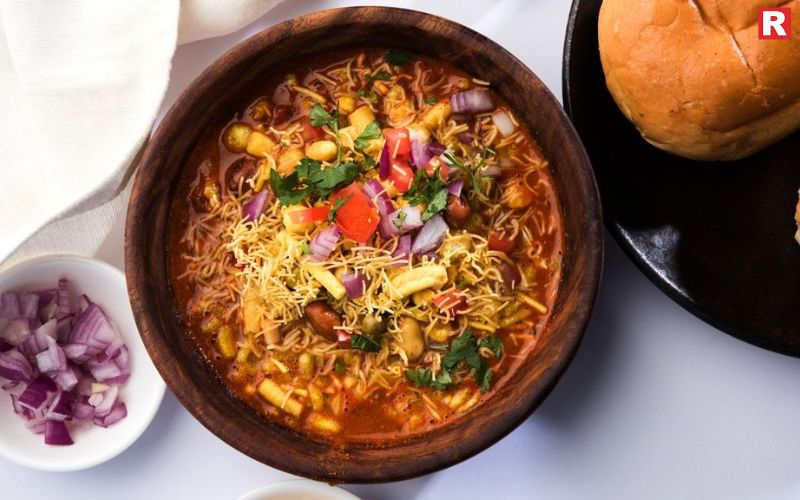
Misal is a spicy dish from Maharashtra made with sprouts, farsan, onions, and tangy gravy. It is mostly eaten as a breakfast or brunch dish. The bold flavors and heat make it a favorite among spice lovers. With Q-commerce platforms, misal is now available as ready-to-eat kits. You can order it without worrying about preparation time. Many professionals in Mumbai or Pune order misal on weekends when they want something filling and flavorful. Some platforms even offer “restaurant-style” misal that tastes just like the versions served at local stalls.
3. Bhel Puri – A Light, Tangy Treat
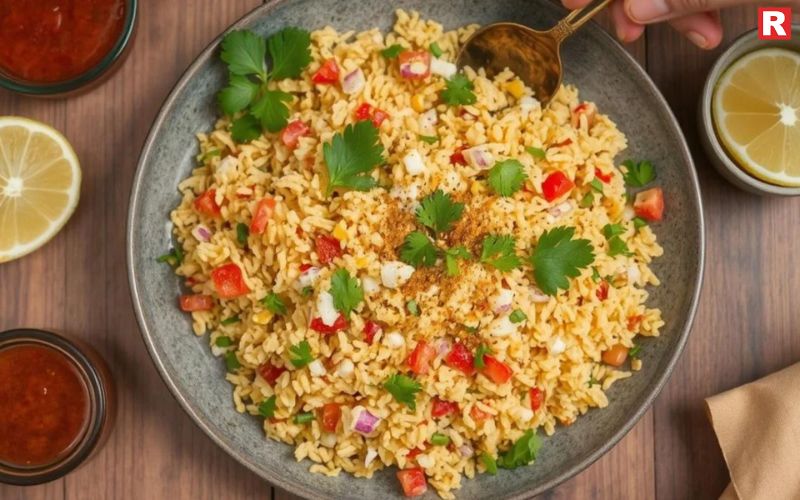
Bhel Puri is a popular street snack in western India, especially in Mumbai and Gujarat. It is made of puffed rice, sev, tangy chutneys, and fresh vegetables. Q-commerce platforms now sell ready-to-mix kits for bhel puri. These kits are perfect for students, young professionals, or families who want to enjoy street-style snacks at home. The crunchy and tangy flavors make it a perfect snack for movie nights or casual hangouts.
4. Chivda – A Crunchy Tea-Time Treat

Chivda is a snack loved across central and western India. It is made from flattened rice, peanuts, and curry leaves. Light and flavorful, it pairs perfectly with a cup of tea. Thanks to Q-commerce platforms, people can now order freshly made chivda anytime. It is especially popular during the rainy season when people crave warm and savory snacks. Many users share stories of how chivda reminds them of their childhood snacks.
Know more: 10 Must-Try Gujarati Dishes That Will Delight Your Taste Buds
5. Theplas and Khakhra – Gujarat’s Healthy Favorites

Theplas and khakhra are crispy and slightly spiced snacks from Gujarat. They are not only tasty but also healthy. Many people carry them for long trips or pack them in lunch boxes. Q-commerce platforms offer vacuum-sealed packs of these snacks that stay fresh for days. Health-conscious users love these options as they are made with whole grains and fewer oils. This has led to a rise in demand among urban buyers.
Why These Snacks Are Perfect for Q-Commerce
Several factors make regional snacks ideal for quick commerce.
- Convenience: They are easy to pack and ship. Most of these snacks have a longer shelf life, making them suitable for fast delivery.
- Affordability: Compared to gourmet snacks or imported treats, regional snacks are budget-friendly. They attract a wider audience.
- Nostalgia: Food is tied to memories. A snack from your hometown helps you feel connected to your roots, especially when living away from family.
- Partnerships: Many platforms are working with local artisans and small businesses. This helps preserve traditional flavors while offering users something authentic.
- Customization: Some platforms allow users to choose spice levels, packaging sizes, or combo packs, making them more appealing.
Also check: 10 Different Types of South Indian Rice Dishes
Data and Trends
The demand for regional snacks has grown steadily over the last few years. During festive seasons like Diwali and Ganesh Chaturthi, snack orders see a 30-50% rise. In metros, snack kits have become a top-selling category. In cities like Mumbai, Bangalore, and Pune, users order misal, bhel puri, and murukku the most. Startups are also collaborating with local vendors to introduce new flavors or healthier versions of these snacks.
Subscription boxes are emerging as a new trend. Customers receive a curated selection of snacks from different regions every month. This helps them explore flavors while supporting small businesses.
The Future of Regional Snacks on Q-Commerce
The snack trend is only going to grow. Experts predict that regional snacks will become a major segment in Q-commerce over the next few years. We are already seeing new trends like fusion snacks. For example, millet-based murukku or low-oil misal mixes are gaining popularity among health-conscious users.
Eco-friendly packaging is also becoming important. Many vendors now offer biodegradable packaging options, making snack delivery more sustainable. Finally, subscription boxes that offer regional snacks from across India are set to become a favorite. These boxes allow users to try new flavors while supporting local businesses.
Check more: Top 5 States With the Spiciest Food in India
Metkut Recipe: Traditional Maharashtrian Comfort Food
Why Fish Kobiraji Is a Must-Try for Every Food Lover in Kolkata
The Road Ahead
Regional snacks are more like memories of home, festivals, and family moments. Each bite carries culture and tradition. With quick commerce platforms, these snacks are now just a click away. People in big cities can enjoy murukku from the South or misal from Maharashtra in minutes. The ease of ordering has made these snacks part of daily life again. Tea-time feels complete with chivda, while bhel puri brings back the charm of street corners. More people are embracing these flavors for comfort and nostalgia. The demand is rising across metros and small towns alike. Regional snacks are not just tasty; they are a way to stay connected with roots. Quick commerce is helping people rediscover these authentic flavors anytime they want.

India’s food culture is full of variety. Every state and region has its own special dishes and snacks. These foods reflect local traditions, ingredients, and flavors. For a long time, many of these regional specialties were available only in their own areas. People living in smaller towns or rural parts of the country had limited access to such foods. They often had to travel to bigger cities to enjoy them. This made it hard for many families to experience the full range of India’s flavors.
Now, quick commerce is changing the way people buy and enjoy food. With faster delivery services and better technology, regional snacks and dishes are reaching even small towns. Customers can now order items like sweets, savories, or homemade pickles from different parts of the country and get them delivered in just a few hours. This has opened up new opportunities for local businesses and producers. It is also helping people in smaller towns explore new tastes without traveling far from home. Regional flavors are becoming more popular than ever.
Read more: The Ultimate Guide to Getting Your Cloud Kitchen on Zomato
Rapido Food Delivery Strategy: A New Game Plan to Beat Zomato & Swiggy
Why Quick Commerce Matters for Regional Foods
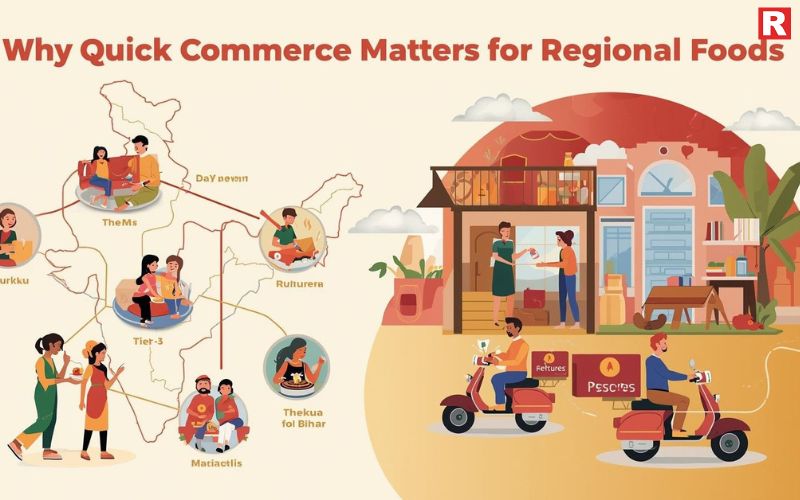
Tier-2 and Tier-3 towns in India are growing fast. People are earning more. Internet use is increasing. With better smartphones and faster networks, shopping online has become easy. But what’s new is how people are now looking for local flavors and specialties, not just daily essentials.
Quick commerce platforms are helping customers discover regional products they never had access to before. Now, a customer in Nashik can order Murukku from Chennai. A family in Indore can get Thekua from Bihar within hours. This is a major shift in how food travels across India.
How Quick Commerce Works
Quick commerce, or Q-commerce, is about speed and convenience. It promises fast delivery—often in under an hour. These platforms partner with local stores, brands, and producers. They use technology to manage orders, warehouses, and delivery routes. For regional specialties, this means that small producers can now sell beyond their neighborhoods. For customers, it means fresh, authentic food arrives at their doorstep.
These platforms also take care of packaging and logistics. Special items that need temperature control, proper handling, or careful transportation are now available through trusted delivery systems.
Know more: What Are the Special Dishes You Must Try This Durga Puja
The Benefits for Small Towns
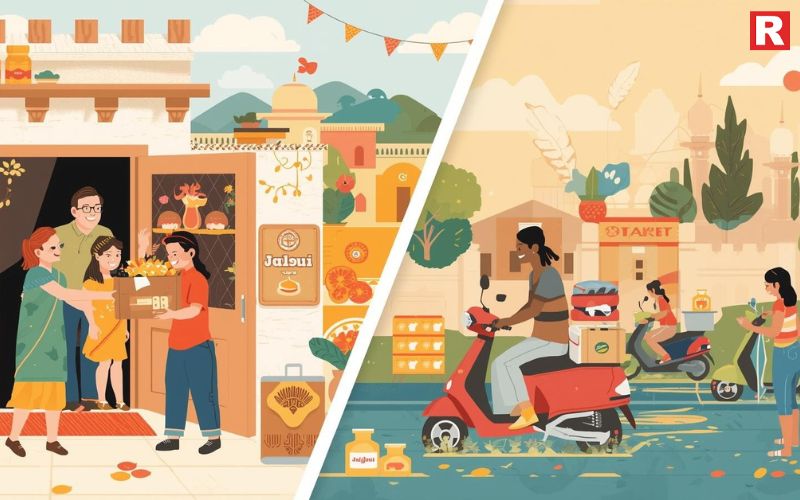
For Consumers
People in smaller towns no longer have to wait for festivals or trips to bigger cities to taste regional food. If someone in Patna loves Jalebi from Jaipur, they can now order it anytime.
This opens up new experiences for families and friends. Food is not just about taste; it’s about sharing culture, memories, and stories. Quick commerce makes it easy to bring those experiences home.
For Local Producers
Artisans and small brands can now grow their customer base without setting up shops in other cities. They don’t need to worry about inventory management or warehousing. By listing their products on Q-commerce platforms, they can scale quickly.
Many small businesses have seen a rise in demand, especially from food lovers eager to try authentic regional flavors. These platforms help producers connect directly with consumers and build trust.
Real-Life Examples of Success
Several regional brands have already seen growth thanks to quick commerce.
Murukku from Tamil Nadu: A family-run business started by a grandmother in Coimbatore expanded across the country. With the help of Q-commerce apps, their crunchy, spiced Murukku is now available in towns far from the South.
Thekua from Bihar: This festive sweet, once limited to special occasions, is now a year-round favorite in cities like Jaipur and Ahmedabad. Small sweet shops in rural areas are reaching customers through fast delivery networks.
Misal Pav from Maharashtra: Street-style dishes like Misal Pav, which were mostly available locally, are now being delivered fresh to offices and homes in Tier-2 towns like Nashik and Kolhapur.
These examples show how regional foods are breaking boundaries with technology and logistics.
Also check: Kootu Curry Recipe: Traditional Kerala-Style Curry for Your Festive Menu
Challenges Being Tackled
It’s not always easy to transport regional foods. Many items are delicate or perishable. Some snacks are best enjoyed fresh, and packaging must ensure quality.
Quick commerce platforms are solving these problems in multiple ways:
- Cold Storage: Warehouses with proper temperature control keep items fresh.
- Smart Routing: Algorithms help delivery agents choose the fastest and safest routes.
- Quality Checks: Regular inspections ensure that items meet hygiene and taste standards.
- Vendor Partnerships: Working closely with local producers helps maintain authenticity and ensure proper handling.
These innovations are making it easier for regional foods to reach new customers without losing their flavor or quality.
What’s Next for Regional Specialties
The demand for local foods is only going to grow. Many experts predict that Q-commerce will soon include subscription services, curated regional boxes, and customizable orders. For producers, this means new opportunities to expand. Some are already experimenting with ready-to-cook kits, festive hampers, and personalized recipes.
For consumers, it means more choices and better experiences. People want authentic, fresh flavors that tell a story. They are also becoming more conscious about ingredients, sourcing, and sustainable packaging. This trend is also helping boost culinary tourism. As people discover new tastes online, they are more likely to explore the regions behind those flavors in person.
Check more: Best Food Festivals Every Foodie Must Attend
Pani Puri Has Different Names in Different Indian States—Know Them All
The Bottom Line!
Quick commerce is changing the way regional foods are shared in smaller towns across India. It helps local businesses reach more customers without setting up shops in faraway places. At the same time, people in Tier-2 and Tier-3 towns can now enjoy authentic flavors from different regions without traveling to big cities. With fast delivery, smart logistics, and strong partnerships, getting fresh and tasty snacks or homemade dishes has become easier than ever.
This new way of shopping is not just about better food. It is about bringing the culture and traditions of different parts of the country to people’s homes. Families can now try new dishes, learn about different flavors, and celebrate festivals with regional specialties. Quick commerce is helping to connect cities and towns while supporting small producers. Every order is a step toward making India’s food culture more accessible to everyone, every day.

Fish Kobiraji is not just a snack in Kolkata—it is a feeling, a memory, and a taste of home. For generations, families have gathered around small stalls, sharing stories and laughter over a plate of this crispy delight. Made with fresh fish fillets dipped in soft, airy egg batter, it carries the warmth of tradition in every bite. The mild spices and light texture make it perfect for any time of the day, whether with a slice of lemon or tangy green chutney. It is a dish that connects people, a reminder of simpler times and shared moments. As the famous line from a beloved Bengali poem says, “আমার সোনার বাংলা, আমি তোমায় ভালোবাসি”—Fish Kobiraji is one way Kolkata shows its love for food, for people, and for its culture. Anyone who visits must experience this taste of Bengal.
Read more: Pani Puri Has Different Names in Different Indian States—Know Them All
5 Foods to Avoid for Better Cholesterol
What Is Fish Kobiraji?
Fish Kobiraji is a popular snack in Kolkata. It is made with fish fillets that are coated with a soft egg batter and fried until crispy. The fish inside stays juicy and flavorful. The outer layer is light, crunchy, and golden brown. Unlike heavier fried snacks, Fish Kobiraji feels fresh and delicate. The spices are subtle but add depth to the taste. Fresh herbs and a hint of pepper give it a mild yet addictive flavor. It is usually served with lemon slices, green chutney, or sometimes tomato sauce. The aroma and texture make it stand out among other street foods.
What makes Fish Kobiraji special is its perfect balance of texture and taste. The crunchy outside contrasts with the soft fish inside. This contrast makes every bite satisfying. It is light enough to eat anytime without feeling too greasy or heavy. Unlike other fried snacks, Fish Kobiraji does not overpower your palate. It lets the natural taste of the fish shine through. The egg batter adds richness but does not mask the flavors. Many people say it is “comfort food with a twist.” It is also versatile. You can enjoy it as a snack or a light meal. It pairs well with tea in the afternoon or with beer during dinner. You don’t need fancy sides to enjoy it—just a squeeze of lemon or some chutney is enough.
A Cultural Experience

Kolkata’s food culture is deeply connected to its heritage. Fish plays a major role in Bengali cuisine. Families have passed down recipes for generations. Fish Kobiraji represents this tradition but with a modern touch.
The dish is widely available in old eateries, small cafés, and roadside stalls. Many of these places have been serving it for years. Eating at these spots feels like stepping into a local’s kitchen. The chefs prepare it with love, and that shows in every bite.
Many Kolkata residents share stories about how they grew up eating Fish Kobiraji after school or at tea stalls. It is more than a snack—it is a reminder of simple joys and everyday life.
Know more: Delhi’s Love Affair with Chole Bhature – A Culinary Classic
Where to Try It in Kolkata
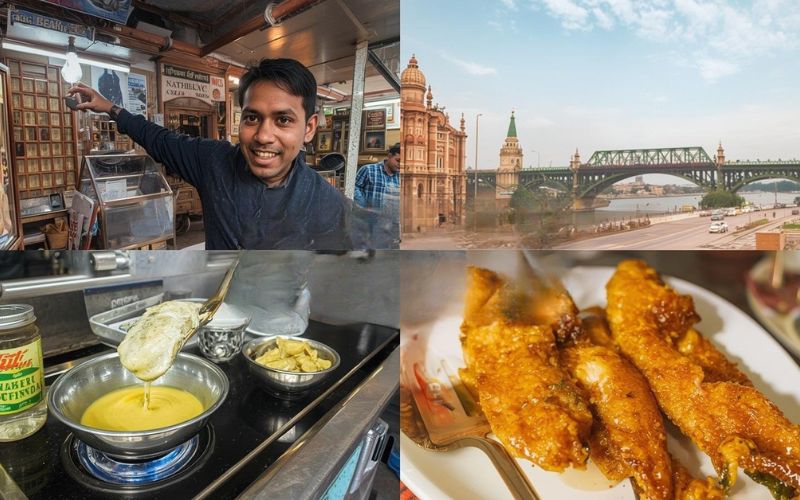
If you want to taste the best Fish Kobiraji, you should explore the city’s food lanes. Places like College Street, Park Street, or near the Howrah bridge have stalls and cafés where it is made fresh daily.
Old eateries with wooden counters and simple seating are the best places to enjoy it. You will see the cook dipping fish into egg batter and frying it right in front of you. The aroma alone is enough to make your mouth water. You don’t have to look for high-end restaurants. Some of the best versions are available at small, family-run stalls where the recipe has been perfected over years.
Perfect for Every Food Lover
You might think Fish Kobiraji is only for people who love seafood. That’s not true. Even if you are new to fish dishes, you will enjoy its texture and taste. It is light and easy to digest. The soft fish inside makes it a treat even for people who are cautious about fried foods. It is perfect for those who want to taste something new without it being too spicy or heavy.
For travelers, it is an authentic taste of Kolkata’s culinary heart. For locals, it is a reminder of home-cooked meals and street-side memories. It is a dish that everyone can appreciate.
Pairing Suggestions
Fish Kobiraji is best eaten when it is hot and fresh. It tastes even better with a slice of lemon or some green chutney. The tangy flavors bring out the crispiness of the batter and the softness of the fish. Some people like to dip it in tomato sauce for an extra burst of taste. It pairs well with a cup of chai in the afternoon or a cold beer in the evening. The light egg batter goes well with both. Many stalls also serve it with pickled onions or fresh herbs. These small additions add more flavor without making the dish too strong. Fish Kobiraji is simple but full of taste. It is a perfect snack for any time of the day.
Key Points:
- Best enjoyed hot with Kasondi.
- Pairs well with chai or beer.
- Pickled onions and Pudina Chutney add extra flavor.
Also check: Best Food Festivals Every Foodie Must Attend
Best International Cuisines You Should Try Once
Top 5 States With the Spiciest Food in India
Health Aspects
Compared to deep-fried snacks, Fish Kobiraji is a lighter option. The batter is thin and made mostly of eggs, which keeps it from being too oily.
The fish itself is a good source of protein and essential fats. When eaten in moderation, it can be a healthier option than other fried snacks. Many chefs use fresh fish fillets and minimal oil to keep it light. That’s why it feels less greasy and more refreshing.
A Must-Try in Kolkata
Fish Kobiraji is more than just a street snack in Kolkata. It shows the city’s love for seafood and simple flavors. Made with fresh fish and a light egg batter, it is crispy on the outside and soft inside. The spices are mild but add a great taste. People from all over enjoy it, whether they live in the city or are visiting. It is perfect as a light meal or an evening snack. Many stalls and small cafes serve it fresh every day. The dish has been a part of Kolkata’s food culture for years. It brings back memories and creates new ones. Anyone who loves good food should try it at least once. When in Kolkata, exploring food lanes and tasting Fish Kobiraji is a must.

When it comes to food, Delhi is a city that loves bold flavors. Among all the dishes, one stands out as a favorite for many – Chole Bhature. It is not just food served on a plate, but a part of the city’s rhythm. For some, it is the first meal of the morning, hot bhature puffed to perfection and paired with spicy chole that wake up the senses. For others, it is the comfort they crave after long hours of work, a plate that restores energy and soothes the soul. Students share it with friends between classes, families gather around it on lazy Sundays, and office-goers line up at stalls for a quick bite. It is hearty, filling, and never fails to satisfy.
But Chole Bhature is more than the sum of flour and chickpeas. It carries memories of childhood treats, family outings, and friendships built over shared plates. In Delhi, this dish is not just eaten—it is experienced. It warms the stomach, touches the heart, and tells the story of a city that lives through its food.
Read more: Pani Puri Has Different Names in Different Indian States—Know Them All
Top 5 States With the Spiciest Food in India
A Short History – How Chole Bhature Came to Delhi
Chole Bhature has its roots in Punjab. It was introduced to Delhi by migrants after independence. Over time, it became a part of Delhi’s food culture. Local vendors added their own flavors. Rich spices, deep frying techniques, and side dishes made it special. Today, it is known as “Delhi’s favorite plate.”
Though the basic recipe stays the same, each vendor has a unique twist. Some add extra ghee, some use a tangy pickle, and others serve it with curd or jalebi. These small changes make each plate stand out. But the heart of the dish remains unchanged – soft, fluffy bhature and spicy, flavorful chole.
What Makes Chole Bhature So Irresistible?
The bhature is made from refined flour. It is mixed with yogurt and left to rise. Then it is deep-fried until golden and soft. When you bite into it, it feels light and fluffy. The outer layer is crisp, while the inside is soft.
The chole is made from chickpeas. They are soaked overnight and then cooked until soft. The gravy is made with spices like cumin, coriander, amchur powder, and garam masala. Some vendors add hing for a strong flavor. The chickpeas soak up all the spices, making every bite flavorful.
Usually, the dish is served with sliced onions, pickles, and chutneys. Some even pair it with lassi or jalebi. These add-ons enhance the taste and make it a complete meal.
Know more: 10 Must-Try Gujarati Dishes That Will Delight Your Taste Buds
Iconic Spots in Delhi to Try Chole Bhature
Delhi’s love for Chole Bhature is reflected in its streets. You can find it everywhere, from Old Delhi’s narrow lanes to upscale restaurants. But some places are famous for their unique style.
- Sita Ram Diwan Chand in Paharganj is one of the oldest and most loved stalls. It serves rich and spicy chole with large, fluffy bhature. The atmosphere is always busy, with long lines of customers eager to dig in.
- Bhature Wala in Karol Bagh is another popular spot. They serve bhature with extra ghee, making them more decadent. The chole is mildly spiced, balancing the rich bread.
- In Old Delhi, you can find smaller stalls where local families have been serving this dish for decades. These stalls offer simple but flavorful chole and crisp bhature, cooked fresh every day.
Every vendor has its own secret recipe. Some use local ingredients, while others rely on age-old cooking methods passed down through generations.
Chole Bhature – A Social Affair

In Delhi, eating Chole Bhature is not just about food. It’s a way to connect. Families often go out together for breakfast on weekends. Friends meet over plates of hot bhature. Office colleagues grab a quick meal between meetings. It brings people from all walks of life together. It’s also common to share plates. One plate is enough for two or more people, making it affordable and enjoyable. Many people have memories of their first bite, sitting on a steel plate with friends or family around them.
For tourists, it’s an experience worth trying. The smell of frying bhature and the aroma of spices are enough to make anyone’s mouth water. Eating from a street stall and watching the hustle around adds to the charm.
Also check: Celebrate Onam with 41 Sadya Menus Across India
Best Food Festivals Every Foodie Must Attend
Best International Cuisines You Should Try Once
Fun Facts About Chole Bhature
- Though mainly eaten for breakfast, it’s popular throughout the day. Some people enjoy it even late at night.
- It is often paired with lassi or jalebi. The sweet and salty combination makes it even more delightful.
- Many restaurants now offer healthier versions with less oil or whole wheat flour, but the classic version remains unmatched.
- It’s a popular choice at weddings, food festivals, and special occasions across Delhi.
- The dish has become a symbol of Punjabi hospitality and Delhi’s fast-paced lifestyle.
Why It’s Still Relevant Today
Even with changing lifestyles, Chole Bhature continues to be a favorite. It adapts to modern trends while keeping its tradition alive. Today, you can find variations like baked bhature or gluten-free options. However, the traditional version is still the most loved.
Its popularity shows how Delhi embraces flavors that are bold, comforting, and affordable. For many, it’s a reminder of home, family gatherings, and simple joys.
A Personal Touch
If you ask most Delhiites about their favorite dish, Chole Bhature will be on the list. It’s the kind of food that doesn’t need fancy plating or five-star restaurants. It’s the taste that matters. Many people fondly remember how their parents treated them to this dish on weekends or during festivals.
Even today, young professionals working long hours look forward to grabbing a plate from their favorite street vendor. It’s their way of relaxing and enjoying a piece of tradition in the middle of a busy life.
Happy Eating!
Delhi’s love affair with Chole Bhature is more than a trend. It’s a connection to culture, memories, and flavors that bring people together. Whether you are a local or a visitor, trying this dish is a must. It’s simple, tasty, and full of history.
With its crispy bhature and spicy chole, this dish reflects the heart of Delhi – vibrant, bold, and full of life. So next time you walk through the streets of Delhi, follow the aroma of spices and fried bread. It will surely lead you to one of the city’s most cherished culinary experiences.

Food delivery and quick commerce have become a part of everyday living in India. What was once seen as a luxury is now a routine choice for millions. People no longer wait long hours for food or step out late at night for essentials. With just a few taps, dinner arrives hot, and groceries reach the doorstep within minutes. This shift reflects how urban life is changing, with speed and ease taking priority. Professionals returning home after long workdays often depend on food delivery to save time and effort. Students and families also rely on quick commerce apps to handle sudden needs, from snacks to household products.
The convenience of these platforms, along with their affordable offers, has made them a trusted part of modern living. Their success lies in three simple things—speed, reliability, and variety. These apps have grown beyond being services; they are now everyday partners. This article looks at the best food delivery apps and quick commerce platforms in India and what makes them so popular.
Read more: 12 Delicious High-Protein Foods to Eat Daily for a Healthier You
Domino’s 4-Course Meal— The Ultimate Lunch Deal You Can’t Miss
The Rise of Food Delivery and Quick Commerce in India
India’s food delivery and quick commerce sector has seen exponential growth in the past five years. According to industry reports, the Indian food delivery market is expected to cross USD 13 billion by 2025. Quick commerce, which focuses on delivering essentials like groceries and daily items in less than 30 minutes, is projected to reach USD 5 billion by 2025.
This growth is driven by:
- Busy lifestyles in urban areas.
- Increasing use of smartphones and digital payments.
- Rising number of working professionals and students living away from families.
- Affordable internet making apps accessible to millions.
Unlike traditional food delivery, where waiting 45–60 minutes was common, today’s platforms focus on speed, wide selection, and affordability. Quick commerce, often called “Q-commerce,” has set a new standard by promising essentials in 10–20 minutes.
Know more: The Ultimate Guide to Getting Your Cloud Kitchen on Zomato
Best Food Delivery Apps in India
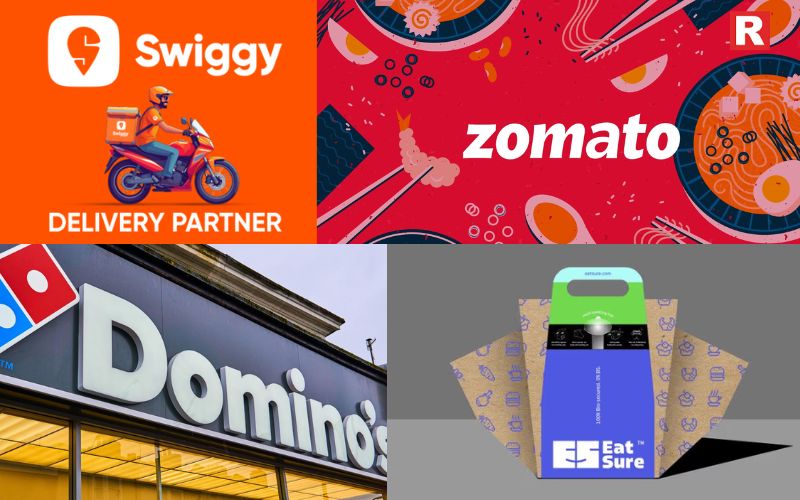
1. Swiggy
Swiggy is one of India’s most popular food delivery apps. Known for its vast restaurant network, Swiggy offers everything from street food to fine dining options. It also operates Swiggy Instamart, its quick commerce wing, which delivers groceries and essentials in minutes. Swiggy One, its subscription model, gives users free deliveries and exclusive discounts.
2. Zomato
Zomato started as a restaurant discovery platform and quickly became a major player in food delivery. It covers thousands of restaurants across India and offers exclusive dining discounts under Zomato Gold. Zomato also owns Blinkit, a quick commerce platform delivering groceries in less than 20 minutes. This dual offering makes Zomato a powerful player in both food and grocery delivery.
3. Domino’s App
Domino’s has its own dedicated app for ordering pizzas. Unlike aggregator platforms, it delivers directly from its outlets. Known for its 30-minute delivery guarantee, the Domino’s app has gained trust among pizza lovers. The app allows customization, live order tracking, and exclusive deals that are not always available on Swiggy or Zomato.
4. EatSure
EatSure is unique because it allows users to order from multiple restaurant brands in a single order. Popular chains like Faasos, Behrouz Biryani, Oven Story Pizza, and Sweet Truth are available under one roof. It ensures food quality by following strict hygiene checks and packaging standards, making it a reliable option for families and groups.
Also check: Rapido Food Delivery Strategy: A New Game Plan to Beat Zomato & Swiggy
Best Quick Commerce Platforms in India

1. Blinkit
Formerly known as Grofers, Blinkit is one of India’s fastest-growing quick commerce platforms. It promises delivery of groceries, snacks, personal care items, and household essentials within 10–20 minutes. Its partnership with Zomato has helped it expand its reach and improve service efficiency.
2. Zepto
Zepto has quickly gained attention, especially among younger users. With its 10-minute delivery promise, Zepto focuses on speed and convenience. The brand operates dark stores (micro-warehouses) in urban areas to make deliveries faster. Its minimalistic app design and wide product variety make it a favorite among Gen-Z and working professionals.
3. Swiggy Instamart
Swiggy Instamart, integrated into the Swiggy app, is another strong player in quick commerce. It offers a wide range of products, from fresh fruits to packaged foods and toiletries. Users love the convenience of ordering both food and groceries from one app. Its loyalty program through Swiggy One also gives an edge over standalone platforms.
4. Dunzo
Dunzo started as a hyperlocal delivery service for everything—from groceries and medicines to courier services. It remains popular in metro cities for its versatility. Although Dunzo has scaled down some operations recently, it is still a trusted option for people who want essentials delivered quickly.
5. BigBasket BB Now
BigBasket is India’s leading online grocery brand, and its BB Now service caters to the quick commerce segment. With its experience in grocery supply chains, BigBasket ensures fresh products with reliable delivery. It offers both scheduled and instant delivery, making it flexible for different needs.
Features That Set These Apps Apart
- Speed of Delivery – Quick commerce platforms like Zepto and Blinkit have redefined speed by promising groceries in 10 minutes.
- Variety of Options – Swiggy and Zomato offer countless restaurant choices, while Instamart and BB Now cover groceries and household needs.
- Exclusive Offers – Subscription models such as Swiggy One and Zomato Gold provide free deliveries, discounts, and cashback.
- Technology – Real-time tracking, AI-based suggestions, and digital wallets make ordering seamless.
- Trust and Hygiene – Platforms like EatSure and BigBasket focus on quality, safety, and fresh products, ensuring customer loyalty.
Why Indians Love Them
Indians love food delivery and quick commerce apps because they make life easier. After a busy workday, ordering food with a few taps feels effortless. Students living in hostels rely on them for affordable meals and quick snacks. Families save time by ordering groceries without visiting crowded stores.
The heavy discounts, cashback, and membership benefits add more value. For many, these apps are not just about convenience but also about lifestyle. They fit perfectly into the fast-paced, digital-first mindset of urban India.
Check more: 10 Low-Budget Cafe Interior Design Tips to Follow
How to Choose the Healthiest Cooking Oil for Your Kitchen
Best Foods for Glowing Skin & Healthy Hair
The Bottom Line!
Food delivery and quick commerce platforms have changed the way people live in India. Services like Swiggy, Zomato, Zepto, and Blinkit have made daily life faster and easier. They bring food, groceries, and essentials to the doorstep in minutes. Many professionals depend on them after long workdays, while families and students rely on them for quick solutions. The variety they offer is wide, from restaurant meals to fresh fruits and everyday items. Their biggest strength is convenience. They save time, cut down effort, and fit perfectly into busy routines. These apps have become more than services; they are now part of daily habits. For someone who has not used them, this is the right moment to try. By downloading a few apps and comparing services, users can see which suits their lifestyle best. Whether it is late-night hunger or last-minute shopping, these platforms make life simpler.

In today’s digital world, food has become more than taste or tradition. It has turned into something people love to share and showcase. A dish is judged not only by its flavor but also by how good it looks on a phone screen. This change has been shaped largely by food influencers.
In just a few years, the way people cook at home, order from restaurants, or even explore new cuisines has shifted because of them. From quick Instagram reels showing simple recipes to detailed YouTube tutorials teaching global dishes, these influencers guide what people eat and how they eat it. They introduce new trends, highlight hidden local spots, and even redefine what counts as healthy food. Their impact goes beyond entertainment. They influence choices, spending, and even lifestyle. For many, a food influencer is not just a content creator but also a trusted voice who makes eating exciting, adventurous, and modern.
Read more: 12 Delicious High-Protein Foods to Eat Daily for a Healthier You
7 Types of Whiskies Everyone Should Try Once
The Rise of Food Influencers
Social media has created a new generation of tastemakers. Ten years ago, people relied on family recipes, cookbooks, or restaurant reviews in newspapers. Today, they turn to food bloggers and Instagram creators for inspiration.
A single video can make a dish go viral. For example, dalgona coffee during the lockdown became a global sensation because of TikTok and Instagram. Similarly, butter boards and rainbow bagels gained popularity after influencers showcased them. According to industry reports, influencer marketing in the food industry is now worth billions globally. In India alone, thousands of micro-influencers are promoting regional cuisines, local cafés, and packaged food brands.
Why Food Influencers Matter

Food influencers have built trust with their audience. Unlike traditional advertisements, they create content that feels personal and relatable. If your favorite influencer recommends a new street food joint or shares a recipe, it feels like a friend’s suggestion rather than a marketing pitch.
They also play a big role in supporting small businesses. Many local restaurants that once struggled to gain customers now see queues outside their doors after being featured on an influencer’s page. A reel showcasing a new dish can do more for a café than a paid billboard.
Another key reason for their impact is diversity. Influencers cover everything from luxury dining to budget meals, from vegan recipes to high-protein snacks. There is something for everyone, and that’s why their reach is so wide.
Know more: The Top Most Famous Dishes of the World by Country
Changing the Way We Cook at Home
Home cooking has gone through a transformation because of social media.
- Quick and Easy Recipes: Influencers share recipes that are short, simple, and easy to follow. A 30-second reel showing how to make mug cakes, one-pot pasta, or smoothies can encourage even beginners to cook.
- Fusion and Experiments: Many people now try dishes they would have never thought of before—like Korean-style Maggi, cheesy tandoori momos, or sushi burritos.
- Healthy Living: Influencers are also driving awareness of healthy eating. Plant-based diets, gluten-free recipes, and sugar-free desserts are becoming common because creators show how easy and tasty they can be.
This shift has encouraged families and individuals to explore cooking as a fun activity rather than a chore.
Impact on Restaurants and Food Brands
Restaurants have quickly realized the value of food influencers. Many now design their menus and dishes to be “Instagram-worthy.” A dish that looks colorful, unique, and photogenic has a better chance of going viral. Food brands, too, are partnering with influencers for product launches. Instead of big ad campaigns, they now send products to selected influencers who create natural, engaging content around it. This method has proven more cost-effective and generates higher returns.
For example, when a new coffee brand collaborates with influencers, a short reel of the product being used in a morning routine feels authentic. It blends lifestyle with the product, which works better than a scripted advertisement.
The Psychology Behind It

Why do people trust food influencers so much? The answer lies in psychology.
- Relatability: Influencers often share personal experiences. If they say a dish reminds them of home or helped them during busy workdays, followers connect emotionally.
- Visual Appeal: Food content is highly visual. A perfectly shot video of melting chocolate or sizzling kebabs can instantly create cravings.
- Community: Followers feel like part of a community where they can share feedback, comment on recipes, and even try viral challenges together.
This emotional connection is something traditional advertising has always struggled to achieve.
Also check: 10 Famous Indian Sweets from Different States
Criticism and Challenges
While food influencers have changed the industry, there are also some concerns.
- Unhealthy Trends: Some viral recipes are not good for health. Dishes loaded with sugar, cheese, or fried ingredients often attract more views but can promote unhealthy eating.
- Over-commercialization: As influencer marketing grows, not all recommendations are genuine. Paid promotions sometimes overshadow authenticity.
- Sustainability Issues: Many trends promote over-consumption, packaging waste, or imported ingredients that are not environmentally friendly.
These challenges highlight the need for balance. Followers need to be aware and make informed choices rather than blindly following trends.
The Future of Food Influencing
The world of food influencers is still evolving. In the future, we can expect even more innovation:
- Live Cooking Sessions: More influencers are likely to host interactive cooking sessions where viewers can cook along in real time.
- AI and Personalization: With AI tools, influencers might suggest recipes based on your dietary needs, health goals, or even what’s left in your fridge.
- Virtual Reality Dining: Some restaurants are already experimenting with immersive dining experiences, and influencers will play a role in showcasing these.
- Rise of Micro-Influencers: While big names attract attention, smaller creators with niche audiences will grow in importance because they are more trusted.
The future belongs to authentic voices who combine passion with creativity.
Check more: Vegan Food Revolution: 6 Dishes Everyone Should Try in 2025
Street Food vs Fine Dining: What’s Trending in 2025
7 Pure Raw Honey Varieties That Offer Exceptional Taste and Natural Healing Benefits
The Road Ahead!
Food influencers have changed the way people see and experience food. They are not only sharing recipes but also inspiring millions to cook at home, try new flavors, and even support small restaurants that might otherwise go unnoticed. With the power of social media, they have created a food revolution that reaches every corner of the world. Their impact is not limited to taste alone. It is also about building connections, creating communities, and sparking creativity in kitchens. Followers do not just watch their content; they relate to it, learn from it, and often change their eating habits because of it. As the influence of digital platforms grows, one thing is clear. The future of food will not just belong to chefs or cookbooks. It will be shaped by the influencers who capture our attention on screens and bring food culture closer to everyday life.

“Ch…Ta…Ni.”
Even the sound of it tingles something on your tongue. The word itself feels like a whisper of spice, something you want to lick, slowly and savour without rush. Chutney. It’s not just a condiment. It’s a feeling. A little thing that carries big memories.
In homes where nutrition is sometimes a luxury, a small spoon of chutney turns a dry roti into comfort food. Whether it’s the sharp tang of raw mango or coconut chutney served beside steaming idlis, chutney doesn’t just add taste, it adds heart.
From Kashmir to Kanyakumari, chutneys change their ingredients, textures, and stories. But one thing remains constant: their ability to bring people together. In some corners, it’s garlic crushed with red chilies. In others, it’s mint leaves with a squeeze of lemon. Different tongues, same joy. Chutney is what binds us—not just to our food, but to each other. Isn’t it?
The word “chutney” derives from the Hindi word chatni (from chatna, meaning “to lick” or “to eat with relish”), reflecting its role as a flavorful accompaniment meant to enhance meals. Chutneys likely emerged in India over 2,000 years ago, with roots in ancient culinary practices that emphasized balancing flavors with Ayurvedic principles.
The growing market
According to industry reports, the global sauces and condiments market was valued at $125.3 billion in 2024 and is projected to grow to $214.5 billion by 2034, registering a CAGR of 5.6 per cent. This growth is largely driven by consumers’ increasing preference for convenience and flavor enhancement. In today’s fast-paced world, where culinary tastes are becoming more global, there’s a rising demand for ready-to-use sauces and condiments that bring depth and richness to meals with minimal effort.
The Asia–Pacific region holds the largest share of the global sauces and condiments market, accounting for approximately 35 per cent of the total market. It is also the fastest-growing region, with a CAGR of 6–7.5 per cent, and is valued at around US $40–50 billion.
North America follows with about 30 per cent of the global market share, estimated at US $45–50 billion in 2023, and is expected to grow at a CAGR of around 4–4.5 per cent. Europe holds roughly 25 per cent of the market, valued at US $35–40 billion, with a projected CAGR of 3.8–4.2 per cent.
A long journey
Chutney has come a long way. From a humble kitchen essential to a bottled, gourmet spread found on supermarket shelves, its journey reflects both survival and sophistication. But despite its reinvention, chutney’s true essence still lies in the stories of the past.
There was a time when chutney wasn’t served with samosas or cheese platters. It was paired with boiled rice, watery dal and quiet resilience. It didn’t live in refrigerators but in the memories of homes.
Originally from the Indian subcontinent, chutney is one of the oldest condiments known to the world. Over time, it has travelled across borders and adapted to new ingredients, tastes, and styles: shaped by trade, globalisation and cultural exchange.
Ancient origins
Chutney originated in ancient India as a simple, fresh preparation. It was typically made by grinding herbs, fruits, vegetables, and spices using tools like a mortar and pestle or the traditional sil batta (stone grinder). Common ingredients included tamarind, mango, mint, coriander, coconut, and green chilies. These were often mixed with yogurt, vinegar or fermented bases to help preserve them. Early chutneys were uncooked and meant to be eaten fresh, quite different from the bottled versions we know today.
Regional Variations
India’s diverse geography and food habits led to the development of many types of chutneys. In North India, tangy tamarind and mint chutneys are popular, often served with snacks like samosas and pakoras. South India is known for its coconut-based chutneys, typically paired with dosas and idlis and flavored with curry leaves and dried red chilies. In West India, sweet-sour mango chutneys are common, especially in Gujarat and Maharashtra. Eastern India, particularly Bengal, developed kasundi—a mustard-based chutney known for its strong and pungent flavor. Each region made use of its local produce and spices, creating distinct chutney traditions.
History
References to chutney-like condiments appear in ancient Indian literature. The Charaka Samhita (circa 300 BCE), a key Ayurvedic text, describes mixtures of fruits, herbs and spices used for both medicinal and culinary purposes. By the 1st century CE, as India’s spice trade expanded to Rome, Persia and Southeast Asia. These chutneys were used to flavor bland staples like rice or bread during long journeys.
Mughal kitchens were known for their sophistication, and chutneys found a firm place on the dastarkhwan. They were no longer just simple relishes made from herbs and salt but elevated condiments made with exotic ingredients like dry fruits, saffron, rosewater and nuts. Chutneys were often paired with kebabs, pulao and breads, serving both as palate cleansers and as bursts of flavor between rich courses.
Through the Silk Road
The Silk Road helped spread ingredients like tamarind and mango, now key elements in chutneys, which in turn inspired similar preparations such as torshi in Persia and tamarind-based sauces in Southeast Asia.
Preservation techniques
By the medieval period, Indian cooks began preserving chutneys using methods such as adding vinegar or sugar, using oil-based pickling and cooking the mixture to extend its shelf life. These techniques were likely influenced by Arab and Persian merchants, who introduced new preservation methods. This shift marked the transformation of chutneys from fresh, short-lived relishes to long-lasting condiments.
Colonial encounters
Chutney’s global journey gained momentum during the colonial era, especially under British rule in India from the 17th to 19th centuries. British colonizers discovered chutneys as vibrant accompaniments to Indian meals and began adapting them to suit their own palates.
By the 17th century, British traders and East India Company officials had grown fond of chutneys, initially referring to them as “Indian pickles.” To transport them on long sea voyages back to Britain, they preserved the mixtures using vinegar and sugar, resulting in thicker, jam-like versions. Mango chutney, known for its sweet-sour flavor, became especially popular.
During the 18th and 19th centuries, chutney entered the commercial market. British companies began bottling and exporting these condiments. Brands like Crosse & Blackwell and Sharwood’s introduced “Major Grey’s Chutney,” a sweet, mango-based preserve named after a fictional British officer. This version, milder and sweeter than traditional Indian chutneys, was designed to appeal to Western tastes.
Chutney recipes also spread to other British colonies such as the Caribbean, South Africa, and Australia. There, they were adapted using local ingredients like pineapple, pawpaw or tomatoes.
A dish of scarcity
“During the 1965 drought in Andhra Pradesh, we had no vegetables for weeks,” recalls a grandmother in Anantapur. “My mother made garlic chutney with tamarind and red chillies. We ate it with rice and drank water. It filled the stomach, and the soul.”
During times of famine, drought and poverty, chutney wasn’t just a side dish, it was the dish. It answered a vital question: how do you make one grain of rice feel like a meal? When vegetables vanished from markets and oil was rationed to a memory, people turned to the land and their wits.
Farmers became foragers, and even scavengers found themselves turning into resourceful chefs. Chutney became the bridge between desperation and creativity. Families searched dry fields and forest edges for ingredients others might ignore: gongura (sorrel leaves), known for its tartness and iron content; curry leaves, rich in antioxidants; wild amaranth, tender and full of nutrients; tender tamarind leaves, both tangy and fibrous, and even mango seed kernels, which were ground and tempered into chutneys.
Red ants and resilience
Perhaps the most striking symbol of chutney’s adaptability is found in the tribal belts of Odisha, Chhattisgarh, and Jharkhand: red ant chutney. Made from red weaver ants and their eggs, pounded with chilies, garlic, and salt, this fiery delicacy is now protected with a Geographical Indication (GI) tag.
Entomophagy, the practice of eating insects, isn’t new. Ants provide protein, iron, and essential minerals. But in these regions, red ant chutney isn’t just survival food, it’s heritage.
Chutney began as a whisper of flavor in a world of scarcity. It grew into a shout of defiance. And today, it sings with diversity.
To understand chutney is to understand resilience. It is to remember the women at the stone slab, hands stained with spice, grinding not just ingredients but history, hardship and hope.
So, the next time you dip your spoon into a jar of mango chutney or smear coconut chutney onto a dosa, remember: you are tasting survival. You are tasting a culture that refused to go bland, even in its bleakest hours.
Here’s a fun fact you might not know: there’s something called Chutney Music. And Chutney music is a vibrant fusion of Indian folk music, primarily Bhojpuri, with the infectious rhythms of Caribbean calypso and soca. Born in Trinidad and Tobago, this genre has spread its popularity across the Caribbean, reaching as far as Fiji, Mauritius, and South Africa. Emerging in the mid-20th century, chutney music experienced its golden age in the 1980s, giving rise to numerous sub-genres. Chutney with some Chutney music? Not a bad idea.

Do you know what makes a dish appealing to a restaurant's customers? Of course, the aroma, spices, and price are the biggest factors. But it can only work if the customer is already familiar with the dish. If a customer ordered a dish only based on its name, they would be puzzled. For example, if a dish is called “Dal Espresso,” the customer will be confused about whether it is a lentil dish or a coffee. In such cases, a picture of the dish becomes more important. The most special dish of your restaurant can look dull if it doesn't have a picture of it. This makes food photography even more important for the restaurant.
With food photography, a restaurant can grab the attention of customers in an instant. Therefore, in this article, we will look at the art and science of taking wonderful food images that not only look great but also communicate your restaurant's story, promote your brand, and ultimately increase reservations and online orders. This article will teach you everything you need to know about lighting and composition, as well as how to master style approaches that highlight the unique appeal of Indian cuisine.
What is Food Photography?

Read more: 10 Facts You Should Know About Frozen Desserts
Food photography is the art of capturing photos of food in such a way that it appears as appetizing and tempting as possible. It's a type of still-life photography that highlights a dish's textures, colors, and details through lighting, styling, and arrangement. The idea is to create a want or craving for the meal, transforming a basic visual into an effective marketing tool. In today's digital age, food photography is critical for restaurants to attract customers and establish a strong brand identity on social media and other online platforms. Food photography is ultimately used for the following purposes:
- To show photos of the dish in the physical menu to the dine-in customers.
- To show photos on websites like food ordering platforms or a digital menu of the restaurant.
- Various food bloggers or influencers use food photography in their work.
Why Food Photography Is Non-Negotiable for Restaurants
Food photography has multiple benefits for your restaurant in a visually overwhelmed digital world. So it is non-negotiable for restaurants not to use food photography.
- First Impression Matters: For potential customers looking through Instagram or online delivery platforms, your food images are frequently their first impression of your business. Visually appealing content can influence whether people click to learn more or scroll past.
- Showcasing Your Culinary Skills: Indian cuisine is a brilliant mix of colors, textures, and subtle details. High-quality photography allows you to demonstrate the skill and artistry that goes into making your meals.
- Building Brand Identity: Consistent and visually appealing photographs help to create a strong and recognizable brand identity for your restaurant. Your picture style can convey your restaurant's atmosphere, cuisine focus, and general personality.
- Driving Engagement and Traffic: Delicious food photos are easily shared and engaging on social media. They can generate likes, comments, and shares, boosting your restaurant's visibility and bringing visitors to both online and physical locations.
- Increasing Online Orders: For restaurants that provide online delivery, captivating food photographs on your website and delivery partner applications can have a major impact on customers' ordering decisions.
- Creating a Visual Menu: High-quality photographs act as a visual menu for your online audience, allowing people to better grasp what you have to offer and make rational choices.
The Essential Elements of Great Food Photography

Food photography can capture the essence of the dish and make it more appealing to the public.
1. Lighting
Lighting is undoubtedly the most important aspect of food photography. It sets the tone, reveals textures, and accentuates the colors of your dishes.
- Natural Light: When possible, use natural lighting. Position your food near a window to take advantage of the soft, indirect sunlight. Avoid direct sunlight, which can cast harsh shadows and produce unpleasant highlights.
- Side Lighting: Placing your food to the side of a light source (natural or artificial) frequently produces beautiful shadows that add depth and richness to the shot.
- Diffusing Light: If natural light is excessively bright, use a diffuser (a thin white cloth or paper) to soften it and reduce the appearance of harsh shadows.
- Artificial Light: If natural light is unavailable, consider purchasing steady LED lights with diffusers. Avoid using your camera's built-in flash, as it often produces harsh and unpleasant effects.
- Understanding Shadows: Pay close attention to the shadows in your frame. Soft shadows can create depth; however, strong or distracting shadows should be avoided.
Know this: Top 10 Foods to Boost Your Mineral Intake Naturally
2. Composition
Composition is how you organize the items in your frame. A well-composed photograph draws the viewer's attention and produces a visually appealing image.
- The Rule of Thirds: Consider splitting your frame into nine equal portions using two horizontal and two vertical lines. Placing your theme or important pieces along these lines or at their intersections frequently results in a balanced and compelling composition.
- Leading Lines: Use lines (such as a row of kebabs or a swirl of sauce) to guide the viewer's eye through the image and towards the main subject.
- Negative Space: Don't be afraid of the space in your frame. Negative space can help you highlight your subject while also creating a sense of a state of balance.
- Angles & Perspectives: Experiment with various shooting angles. Overhead (flat lay) pictures are ideal for highlighting the entire dish and its components. Eye-level images can provide a closer and more realistic experience. 45-degree angles provide an appropriate balance of showing the top and front of the dish.
- Layering and Depth: Create interest in your image by layering items in your frame. This could include arranging garnishes on top of the main dish, putting objects in the background, or using props to add depth.
What's new: How to Get A Government Loan for Your Restaurant Business
3. Styling
Food styling involves setting up the food and adding props to make the dish as appealing as possible.
- Fresh Ingredients Are Key: Use only the freshest, most visually pleasing ingredients. Wilted or bruised pieces can belittle the image.
- Garnishes with a Purpose: Place garnishes strategically to enhance color, texture, and visual appeal. Choose garnishes that enhance the food without overpowering it. Fresh herbs, edible flowers, a sprinkling of spices, or a drizzle of sauce can make a significant difference.
- Plating Matters: Pay close attention to how the food is plated. Arrange the ingredients cautiously to prevent cluttering the platter. Wipe away any smudges or spills.
- Props That Create a Story: Use props (such as flatware, plates, bowls, linens, and ingredients) to provide context and create a story about your restaurant and the dish. Select props that complement the decor and food of your restaurant. You might make a rustic Indian dish with ceramics and natural materials.
- Creating Texture: Emphasize the various textures in your meal. This could include demonstrating the crispiness of fried foods, the smoothness of a sauce, or the fluffiness of rice.
- Color Harmony: Be aware of the colors in your frame. Contrasting colors will make your subject stand out, while complementary colors will provide a design that is stronger. Indian cuisine provides a rich palette to work with.
Check out: How to Shield Your Restaurant Business from Failing
Obbattu Recipe – Authentic Karnataka Sweet for Festive Menus & Dessert Lovers
4. The Finishing Touches
While capturing a stunning image in-camera is vital, post-processing can help to improve and polish your photos.
- Use Editing Programs Wisely: There are numerous user-friendly mobile editing programs (such as Snapseed, VSCO, and Adobe Lightroom Mobile) that can help you change brightness, contrast, saturation, sharpness, and white balance.
- Subtle Enhancements Are Best: Avoid overediting your images, which can make the meal appear fake and unappealing. The idea is to bring out the natural beauty of the meal.
- Maintain Consistency: Create a consistent editing style for all of your photographs to ensure that your brand's visual content looks harmonious.
- Cropping and Straightening: Crop your photographs to improve composition and keep horizontal and vertical lines straight.
Specific Tips for Photographing Indian Cuisine

Indian food offers different possibilities as well as challenges for photography.
Embrace the hues: Indian cuisine is typically filled with vivid colors. Use lighting and editing to really make these colors stand out.
Highlight the Textures: From the crispy outside of a samosa to the creamy texture of dal makhani, emphasize the various textures in your food.
Don't Be Afraid of Spice: A sprinkle of red chili powder or a few whole spices can give visual appeal and hint at the flavor.
Highlight the Gravies and Sauces: Rich gravies and sauces are frequently the standouts of Indian food. Use angles to highlight their deliciousness.
Capture the Steam: Dishes that are gently steaming might appear to be very appealing. Capture the steam rising as you take the photograph.
Use Traditional Indian Props: Props such as serveware, spices in miniature bowls, or patterned fabrics can be used to offer authenticity and cultural context.
Read this: Picante Cocktail Recipe: The Spicy-Sweet Drink Taking Over Cocktail Menus
Conclusion
In a competitive dining environment, impressing your audience visually is equally crucial to appealing to their taste sensations. Mastering the foundations of food photography, such as light, composition, style, and post-processing, will allow you to transform your meals into tempting visual material that draws guests, grows your brand, and eventually adds to the success of your Indian restaurant. Embrace the art of displaying your luxurious delicacies, one breathtaking shot at a time, and watch your restaurant's internet appeal grow.

As we all know, if you are expanding your restaurants, it requires lots of strategic planning. One needs to focus on operational consistency, strong brand identity and adaptability. Brands can expand via company-owned model or through franchise model. Let’s focus on what are the key business strategies during expansion.
It’s all about Strong Brand Identity:
Every restaurant wants to have their own unique value proposition. For that, branding has to be consistent in all locations. One can build their brand loyalty through signature dishes, ambience, décor and good customer experience.
Akshay Anand, Founder, Cozy Box said, “When expanding a brand like Cosy Box, the key is maintaining a strong core identity while adapting to diverse local contexts. For us, it’s about balancing consistency with evolution, every new outlet must carry the DNA of the original but also reflect the culture and preferences of its location.”
Product & Experience Consistency:
Every brand tries to make their unique presentation of the products to differentiate from that of competitors. Standardized recipes, strong kitchen training systems, and quality control help us maintain our brand promise.
Hyper-Local Customization:
While maintaining brand identity, restaurants subtly adapt to local preferences — be it spice levels, service style, or curated menu highlights — so every location feels connected to its audience.
Scalable yet Soulful Design:
Expanding a brand is not just about numbers. It’s about building experiences that stay with people. Scalability means creating formats that can evolve without losing their essence. Neha Gupta, Founder, Beyond Designs Bistro said, “From the intimate charm of Beyond Designs Bistro to the youthful energy of Nineteen78, and the immersive worlds at Indira Gandhi National Centre For Arts’ with Kala Cafe and Kala Swasti. I’ve ensured each venture offers something unique while staying true to our design-led philosophy.”
“We’ve created an interior and brand language that’s scalable but still evokes warmth, indulgence, and comfort. Our spaces are designed for both everyday meals and special celebrations — helping us create emotional connections with guests,” pointed Bobby Patel, Co-Founder, Thyme and Whisk.
People-First Culture:
Restaurant brands invest heavily in team training, growth opportunities, and fostering a strong culture of ownership. “In short, for us, expansion isn’t about cloning — it’s about thoughtfully growing the soul of Thyme & Whisk into new places with care, strategy, and heart,” added Patel.
Partnerships & Innovation:
Innovation has been a constant ally. “Whether it was launching pre-packed gourmet meal kits during the lockdown, curating a keto menu, or building multiple cloud kitchen brands under one roof-I’ve always looked at challenges as creative opportunities,” shared Gupta.
Partnerships have also played a key role, be it with nutritionists, cultural spaces, or our talented in-house team. These collaborations allow the brand to grow with purpose.
Gupta added that she keeps the customer at the center who ensured that designing spaces, menus, and experiences thinking about how they’ll feel and what they’ll remember is important.
Importance of digital presence
Digital presence plays a crucial role in building visibility, trust, and engagement. “From showcasing our dishes to sharing behind-the-scenes moments and guest stories, digital platforms help us connect emotionally with our audience and stay relevant,” added Patel.
Explaining further, Anand said, “At Cosy Box, platforms like Instagram, Zomato, and Google Reviews are integral to storytelling, discovery, and engagement. Digital helps us stay top-of-mind, connect with our audience meaningfully, and drive footfall through organic and paid visibility.” It’s also a powerful tool for feedback and for showcasing our brand philosophy visually, which is particularly important for a lifestyle-forward brand.
That being said, nothing compares to the impact of genuine word-of-mouth. When guests walk away with a memorable experience and naturally share it with friends and family, their advocacy becomes one of the most powerful growth drivers. In today’s landscape, the real opportunity lies in the intersection of authentic, in-person recommendations and compelling digital storytelling.
Data driven insights are helpful
Data-driven insights are incredibly helpful. With the right data, we can understand customer preferences, personalize experiences, and even invite guests to celebrate special occasions with us.
“At Cosy Box, we’ve built systems to collect and act on data, including staff observations, real-time feedback loops, and digital analytics. This allows us to fine-tune the guest experience continuously and make decisions grounded in actual behavior and demand patterns. Our expansion philosophy is rooted in stability and brand consistency,” mentioned Anand while highlighting that every Cosy Box outlet carries forward the spirit of Cannes-inspired glamour adapted for an Indian audience, but never at the cost of authenticity or guest comfort.
While, Patel noted, “It also helps us track ordering patterns, which allows us to fine-tune the menu, introduce seasonal specials, and reduce waste — all while enhancing guest satisfaction. Data, when used thoughtfully, makes hospitality more human.”

As the restaurant industry is booming, every brand is targeting the new age customers like Gen-Z, Alpha and millennials to attract them with unique dining experiences and storytelling. Brands are majorly focusing on creating instagrammable moments and aesthetic vibes. Social media play a major role in driving new age customers. To engage today’s new-age audiences, authenticity and culture-led storytelling are a key. The restaurant industry is projected to grow with CAGR 10.41% by 2030. The key strategies includes:
Influence of Social Media:
Restaurants must actively leverage social media platforms such as Instagram, Facebook, Twitter, and TikTok to share visually engaging content, behind-the-scenes moments, and user-generated posts that boost brand visibility.
Also, collaborating with influencers can further amplify reach and attract new customers by promoting menu highlights or special offers. As per the reports, brands can gain 40% of the audiences through the right use of social media.
Saru Khemka, Director, Organic Bistro said, “We believe that targeting new-age audiences goes beyond serving good food — it’s about innovation, authenticity, purpose, and storytelling. Our strategy is rooted in values that today’s conscious diners truly care about: authenticity over aesthetics, purpose-driven storytelling, and meaningful digital engagement.
“We use social media to highlight real stories, from collaborating with local farmers to curating menus with chefs like Nishant Choubey and Gourav Singh Mahori, blending tradition with innovation,” pointed Khemka.
Power of Influencer Marketing:
Influencer marketing has paved its way for the restaurants. Influencer marketing can gain 60% of the reach in the social media. Not only that, but they motivate them to visit the places which helps the brands in gaining profits.
Gaurav Kanwar, Founder of Harajuku Tokyo Café mentioned, “From collaborating with relatable influencers and sparking user-generated content to creating immersive experiences and visually striking dishes —brands must make every interaction with the consumer shareable and aspirational. What truly sets Harajuku Tokyo Cafe apart, though, is our unwavering commitment to authenticity.
By sourcing high-quality ingredients and combining them with precision-driven Japanese culinary techniques, the food remains true to its roots — a rarity in a landscape often driven by fusion trends.'' This dedication has helped build strong word-of-mouth and return visits from discerning food lovers.
Highlighting this, Khemka added, “Our influencer partnerships are intentional, focusing on creators who share our values rather than chasing numbers. From eco-friendly interiors to clean ingredient forward dishes, we’ve built an experience for new-age foodies, families and health-conscious consumers alike.”
Personalized Offers:
Loyalty programs such as points-based systems, tiered rewards, and personalized offers, are effective tools to encourage repeat visits and build customer retention. Meanwhile, email marketing has evolved to deliver highly targeted campaigns tailored to individual preferences, behaviors, and special occasions. Additionally, data-driven decision-making enables restaurants to analyze customer insights, optimize marketing strategies, and enhance the overall dining experience.
Focus on Sustainable Food options:
To meet evolving customer expectations, restaurants are embracing sustainability by introducing plant-based dishes, sourcing ingredients locally, and using eco-friendly packaging. At the same time, they’re building stronger connections through community engagement by collaborating with local businesses, organizing events to build brand visibility.
Technology Integration:
Technology has become essential in the food and beverage industry. Self-ordering kiosks enhance the customer experience by reducing wait times and encouraging instant orders. Brand mobile apps offer a seamless ordering experiences, while, QR code menus provide a safe, contactless way to view menus and allow for quick and easy updates.
Power of Community Building:
Hosting events like open mics, trivia nights, and themed brunches. Loyalty clubs or membership perks for regulars helps in driving regular customers.
Jeenanath Shetty, Managing Director, DJRS Hospitality said, “Whether it’s through our unique menus, the atmosphere we create, or how we show up online, we try to keep it personal and thoughtful. Collaborations, creative content, and community events help us stay relevant, but it all starts with being honest and true to who we are as a brand.”
This strategy of combining visual appeal, cultural storytelling, and culinary integrity has not only elevated brand recall but has also translated directly into business success. "As we expand to new cities across India, this formula continues to resonate strongly, making it a go-to destination for young, culturally curious diners looking for something real, exciting, and unforgettable," added Kanwar.
Creating Instagrammable memories:
Aesthetic interiors, neon signs, and artistic plating to attract social media attention especially the younger generation.
“The young audiences today are very well informed and in order to engage with them we ensure to keep trying new things in our menu constantly adding more Japanese delights. In our base kitchen in Noida we keep experimenting with new things constantly to keep up with the new trends and customer preferences, noted Kanwar.
Additionally the overall experience also plays a major role when engaging with a young audience. Kanwar pointed further that we have worked hard on creating an ambience that resembles the Harajuku Street of Japan where the brand is inspired from.
Brands promotes content like recipes, chef spotlights, and behind-the-scenes glimpses. At the same time, storytelling allows restaurants to share their journey, culinary philosophy, and core values fostering a stronger emotional connection with their audience. With this, the restaurants can incorporate these strategies to target the new age customers to build a loyal base.

Food in 2025 is changing in a big way. It is bold and full of fresh ideas. People are now looking at food as more than a meal. Every bite has a story to tell. It could be a dish from a faraway land or a simple recipe made new. The year is about going out of your comfort zone. It is about trying something you have never tasted before.
In 2025, food is a journey. People are travelling with their taste buds. They do not need a plane ticket. They only need curiosity and a good appetite. Cuisines from different parts of the world are easy to find. Korean snacks, Middle Eastern platters, Japanese bowls and Indian regional dishes are all on the table. This change is making dining exciting. Eating out is now an adventure. It is a chance to learn about cultures and flavors. People are choosing bold spices, new textures, and fun mixes. Every meal in 2025 feels fresh, creative, and full of life.
Read more: Different Types of Bars to Explore in 2025: Where Drinks Meet Vibes
How to Pair Beer with Indian Food: A Desi Guide to Perfect Pints
1. Global Cuisines to Add to Your Plate
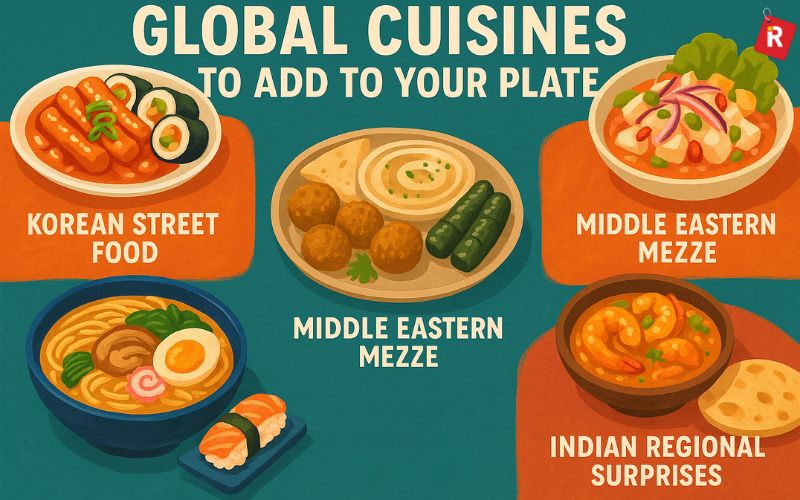
Korean Street Food: Beyond K-Dramas
Korean culture is everywhere. Food leads the way. Try tteokbokki, gimbap, and Korean fried chicken. These dishes are spicy, sweet, and fun to share. Street food markets and pop-up stalls are bringing Seoul to your city.
Peruvian Magic: From Ceviche to Quinoa Bowls
Peruvian food is full of colour and freshness. Ceviche with lime, chilli, and fish is a must. Quinoa bowls are rich and healthy. This cuisine mixes native ingredients with global flavours. It feels new but also familiar.
Middle Eastern Mezze: A Flavor Party
Mezze is not just food. It is an experience. Small plates like hummus, falafel, baba ganoush and stuffed grape leaves make a table come alive. It is perfect for a long, slow meal with friends.
Japanese Soul Food: Ramen, Sushi and More
Japan offers comfort in every form. Ramen is warm and hearty. Sushi is light and balanced. Try izakaya style dining for grilled skewers and seasonal small bites.
Indian Regional Surprises: From Assam to Kerala
Indian cuisine in 2025 is about going deeper. People are trying food from small towns and regions. Assam’s pithas, Rajasthani dal baati churma, and Kerala’s seafood curries are now popular outside their states.
2. Fusion Fever – When Cultures Collide on a Plate
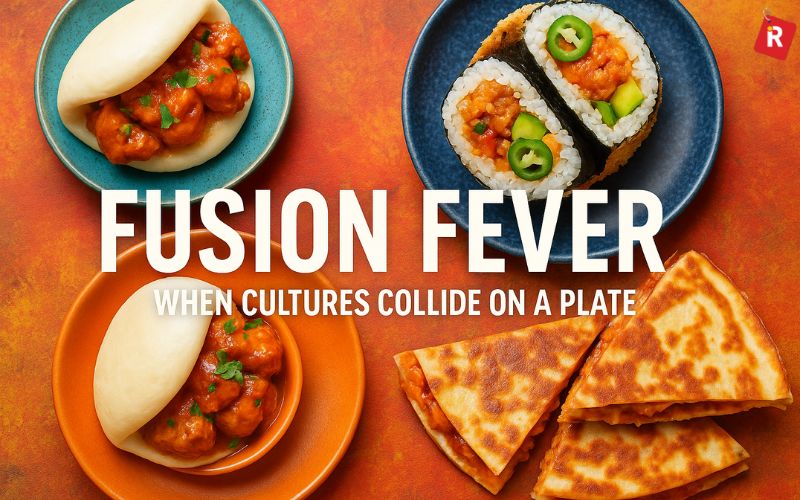
Fusion food in 2025 is making a strong mark. It is all about mixing flavors and breaking old food rules. Cooks are taking ideas from one culture and joining them with another. This mix is making food fresh and fun. Diners enjoy it because every dish brings a new taste. It may look different but it works. The surprise comes with every bite.
In many kitchens, new fusion dishes are becoming favourites:
- Butter chicken stuffed baos: A soft steamed bao is filled with rich Indian butter chicken. It has the soft bite of a bao and the creamy taste of a curry.
- Taco sushi rolls: The idea comes from Japanese sushi and Mexican tacos. It has fresh rice rolls with spicy fillings and a bit of crunch.
- Kimchi quesadillas: A Mexican flat tortilla is folded with cheese and Korean kimchi. It gives a mix of heat and tang in one mouthful.
Chefs enjoy creating such dishes. People like to taste something different without losing the comfort of known flavors. Fusion food in 2025 is about fun, surprise, and bold eating.
Also check: How to Pair Indian Food with the Right Alcohol: A Desi Guide to Perfect
3. Plant-Based Wonders – Vegan and Vegetarian Cuisines
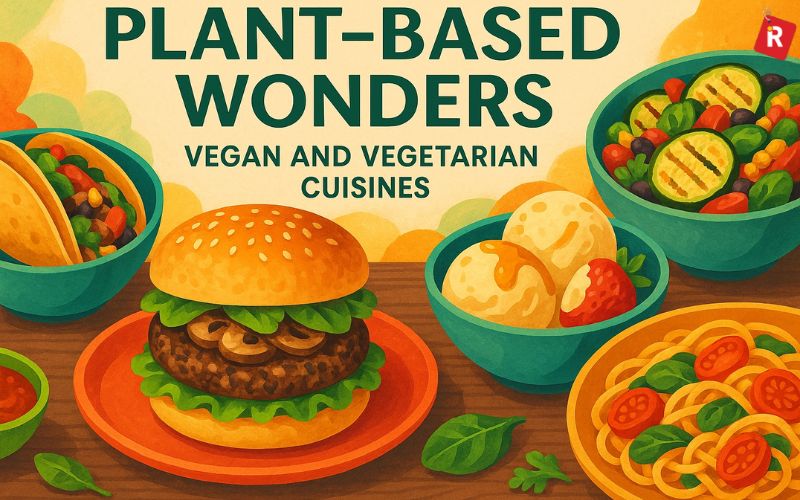
Plant-based food in 2025 has moved beyond being a passing trend. It has become a way of living for many people. More diners are now asking for dishes that are kind to the planet and to health. Chefs are taking this seriously. They are proving that plant-based food can be full of taste and not about giving up flavor. The focus is on new ideas and fresh ingredients.
This change is making eating out more exciting. People see that plant-based food can be simple, colorful, and full of flavor. It is now a strong part of modern food culture and not a side option. In many places, menus now have creative plant-based choices like:
- Vegan burgers – Made with beans, lentils, mushrooms, and spices. These burgers are juicy and filling.
- Plant milk desserts – Smooth ice creams and puddings made from almond or oat milk. They taste rich and sweet.
- Vegetarian twists on global classics – Dishes like pasta with plant-based sauces or tacos filled with grilled vegetables.
4. Sustainability on the Menu
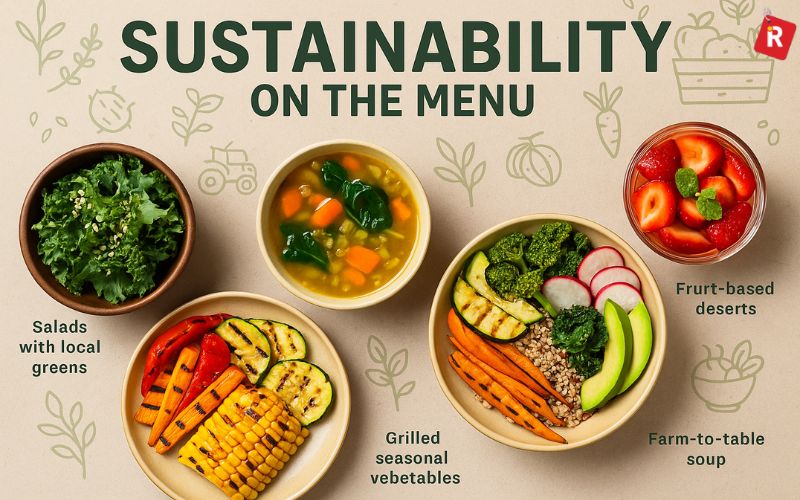
Sustainable dining in 2025 is shaping how people eat. Diners are paying attention to where their food comes from. More people now choose dishes made with local and seasonal produce. Chefs are planning menus that cut down food waste. They are careful about using every part of a fruit or vegetable. The focus is on organic farming and natural ingredients. When food is grown with care, it tastes fresh and full of life.
This way of dining supports farmers and reduces waste. It makes every meal healthy, clean, and full of respect for the land. Many restaurants are serving simple but thoughtful dishes such as:
- Salads with local greens – Fresh leaves and herbs picked from nearby farms.
- Grilled seasonal vegetables – Cooked with light spices to bring out their natural flavor.
- Whole grain bowls – Made with millet, barley, or quinoa mixed with vegetables.
- Fruit-based desserts – Using fresh fruits of the season instead of heavy creams.
- Farm-to-table soups – Made with fresh vegetables that change with the season.
5. Interactive Food Experiences
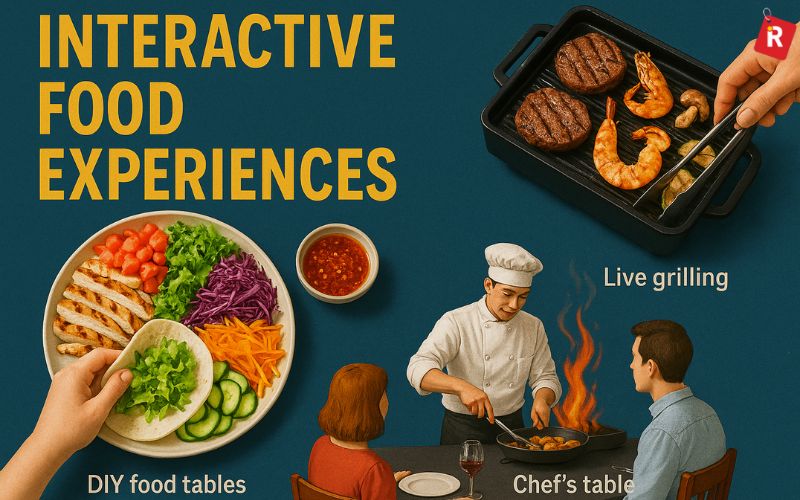
In 2025, dining is becoming more active and fun. Interactive meals are now a big part of how people enjoy food. It is no longer about sitting and waiting for a dish to arrive. Diners want to be part of the cooking. DIY food tables are seen in many new restaurants. People can choose their own toppings and build their own plates. Live grills are also popular. Guests cook meats, seafood, or vegetables on a small grill placed at the table. Chef’s table dinners are another trend. Here, a small group sits near the kitchen. The chef cooks in front of them and explains each step.
These ideas make the meal more than just food. It becomes an experience. It is fun, personal, and easy to remember. Eating out in 2025 is a mix of cooking and dining together. It lets people slow down, talk, and enjoy every part of the meal.
Know more: Top 7 Food Safety Practices Every Restaurant Should Follow
6. Desserts Around the World You Cannot Miss

Desserts in 2025 are full of variety. People are looking beyond the usual choices. Sweet dishes from around the world are now easy to find. Each dessert brings a taste of its home country. These dishes are made with simple but special ingredients. They give a perfect ending to any meal.
These desserts are now part of the menus in many places. They bring new flavors and textures. Every bite feels like a trip to another country. Many of the popular options this year come from different cuisines, such as:
- Japanese Mochi: Soft and chewy rice cakes. They are lightly sweet and very smooth.
- Italian Cannoli: Crisp pastry tubes filled with sweet cream. Often topped with nuts or chocolate.
- Turkish Baklava: Layers of thin pastry with nuts and honey. It is rich and flaky.
- Korean Bingsu: Shaved ice served with fresh fruits, syrups, or sweet red beans.
- French Mille-Feuille: Thin layers of puff pastry with cream in between. Light and elegant.
7. Sip the World – Beverage Pairings

In 2025, food and drinks are coming together in a new way. Pairing drinks with food has become an important part of dining. A good drink can bring out the taste of a dish. It makes the whole meal feel complete. Restaurants are now helping people pick the right match.
These combinations bring balance to every bite. They also make the dining experience more interesting. Drinks in 2025 are not just an extra. They are now a part of the flavor story. Some of the popular pairings seen on tables are:
- Japanese cuisine: Sushi and ramen with light sake or green tea.
- Middle Eastern cuisine: Mezze and grilled kebabs with craft beer or fresh mint drinks.
- Plant-based cuisine: Vegan bowls and salads with kombucha or fresh cold-pressed juices.
- Indian cuisine: Spicy curries and rich dishes with spiced teas or light lassi.
- Italian cuisine: Pasta and pizzas with red wine or sparkling water.
Tips on How to Explore These Cuisines in 2025
- Food festivals in 2025 are a good place to begin for anyone who wants to try new food. These events bring many choices together in one place. People can taste small portions and learn about new flavours. It is an easy way to explore without feeling lost.
- Pop-up restaurants and food trucks are also becoming common. They serve dishes that are fresh and creative. Many of them offer food from around the world. It is a fun way to taste different cuisines without going to a big restaurant.
- Cooking classes are now online as well. Anyone can join from home and learn to make a dish step by step. This is a simple way to bring new tastes into daily life.
It is best to start small. Choosing one cuisine each month makes the journey easy and exciting. It keeps the experience fun and never too heavy.
Check more: Types of Liquor Licenses: Which One Do You Need for Your Business?
10 Low-Budget Cafe Interior Design Tips to Follow
Explore Different Types of Cafes: A Guide to the Coolest Café Concepts Around
Closing Thought!
Food in 2025 is full of bold flavours. It is a year when people are ready to explore. They are no longer happy with eating the same food every day. There is a need to step out and try something new. Every meal is becoming an adventure. People now see food as a way to travel without leaving home. A dish can bring the taste of a new country. It can bring colours and spices that are different from what they know. Trying something new is not just about eating. It is about learning and feeling new things.
Restaurants are offering more choices than ever. Menus have dishes from around the world. From street food to fine dining, there is something for everyone. In 2025, a plate can tell a story. It can take someone to a new place. This year is a journey for the tongue. It is an open door for those who love food and want to taste life in a new way.

Cooking on a gas stove is fast, efficient, and gives you great control over heat. But have you ever tried using a griddle on it? If not, you’re missing out on a whole new way of cooking that’s both fun and versatile. A griddle is a flat, wide cooking surface that sits on top of your gas burners. It gives you more space and allows you to cook multiple items at once—perfect for busy mornings or quick dinners.
Imagine flipping fluffy pancakes, searing juicy burgers, or toasting golden sandwiches—all on one surface. It’s ideal for making big breakfasts, grilled snacks, or even street-style dishes at home. The best part? It heats evenly, so your food cooks perfectly every time. This guide will show you how to use a griddle on a gas stove with simple steps, safety tips, and cooking ideas. Whether you’re a beginner or a home-cooking pro, you’ll find helpful tricks that will make your meals better and faster. Ready to master your gas stove griddle game? Let’s get started and turn your kitchen into a mini diner.
Read more: Fine Dining Plating: 12 Essentials That Elevate Every Dish
Grilling 101: Everything You Need to Know to Master the Grill
What Is a Griddle and Why Do You Need One
A griddle is a broad, level cooking surface that is often square or rectangular in shape. It has a lot more room than a typical frying pan, so you can cook more than one thing at once. It is perfect for reliable cooking because it is made to sit directly over gas burners and disperse heat evenly throughout its surface.
A griddle is your best buddy if you enjoy cooking large breakfasts, succulent burgers, grilled sandwiches, or Indian-style tikkas. It transforms your ordinary gas stove into a flat-top grill, like those found in roadside food stands and restaurants. You don't need an elaborate outside setup or pricey appliances to replicate those crispy edges, golden browns, and street-style flavors at home with a griddle.
Choosing the Right Griddle for Your Gas Stove

Before you start cooking, you need to pick the right griddle. Here’s what to look for:
1. Material
Cast Iron: Great for high heat and even cooking. It lasts long if you season it well.
Non-Stick: Easy to clean and light to use, but not ideal for high heat.
Stainless Steel: Durable and shiny, but food may stick if you don’t use enough oil.
2. Size and Fit
Make sure the griddle fits on your gas burners. If it’s too small, it may not heat evenly. If it’s too big, it could be unstable.
3. Flat or Ridged
Flat griddles are best for pancakes, eggs, and sandwiches.
Ridged griddles are great for grilling meats and veggies with those beautiful grill marks.
Choose the type based on what you plan to cook the most.
Know more: Mastering the Art of Roasting: Techniques Every Restaurant Chef Should
How to Place the Griddle on the Gas Stove
Set the griddle directly on top of two burners. Make sure the base sits flat and doesn’t wobble. The heat should spread evenly across the surface. If your gas stove has burners of different sizes, use the medium ones.
Avoid placing the griddle over just one burner. That will cause uneven heat and food will cook unevenly too.
Preheating the Griddle
This step is very important. Preheating helps you avoid sticking and gets you better sears.
- For cast iron, preheat for 5–10 minutes on medium heat.
- For non-stick, preheat for 3–5 minutes.
You can test the heat by sprinkling a few drops of water on the surface. If they dance and evaporate quickly, your griddle is ready.
Oil It Right
Before placing any food on the griddle, add a light layer of oil. This helps prevent sticking and gives your food a nice crisp edge.
Use oils with a high smoke point like:
- Canola oil
- Sunflower oil
- Peanut oil
- Avocado oil
Avoid olive oil for high heat—it burns fast.
Use a paper towel or brush to spread the oil across the surface. Too much oil can make your food greasy and soggy.
Also check: Why Should You Soak Mangoes Before Eating?
Tips for Using a Griddle on Gas Stove
Now that your griddle is hot and oiled, it’s time to cook. Here are some foods that cook really well on a griddle:
- Pancakes and French toast
- Eggs and omelets
- Bacon and sausages
- Grilled cheese sandwiches
- Tawa paneer, tikkas, and cutlets
- Stir-fried veggies or kebabs
- Dosas and uttapams
When using a griddle, you can cook multiple items at once. Keep things that need less heat on the edges and high-heat items in the center. Flip the food only when needed to keep the texture right.
For example, don’t press your sandwiches or burgers too hard—you’ll lose the juice.
How to Clean the Griddle After Use
Cleaning your griddle the right way keeps it working for years.
For Cast Iron:
- Let it cool slightly but not fully.
- Use a scraper or spatula to remove stuck bits.
- Wipe with a paper towel.
- Rinse with warm water and dry immediately.
- Rub a few drops of oil to season the surface again.
For Non-Stick or Stainless Steel:
- Let it cool down completely.
- Wash with warm water and mild dish soap.
- Use a soft sponge to avoid scratching.
- Dry it well before storing.
Avoid using metal scrubbers or putting cast iron griddles in the dishwasher.
Check more: 6 Unexpected Benefits of Eating Jackfruit (Kathal) – Nature’s Spiky Surprise!
These 7 Foods Can Help You Cool Your Stomach in Summer
Common Mistakes to Avoid
Even pros can mess up. Here are some mistakes that can ruin your griddle experience:
- Not preheating the griddle: This causes sticking and uneven cooking.
- Using metal tools on non-stick griddles: It ruins the surface.
- Using too much oil: Your food will turn soggy.
- Cooking on high heat constantly: You might burn the surface or the food.
- Skipping seasoning on cast iron: It will rust and lose its non-stick properties.
Why a Griddle Makes Life Easier
A gas stove griddle is a wise purchase if you enjoy cooking and want quicker, better outcomes. It saves time, heats up rapidly, and provides a bigger surface area for cooking more than one thing at once. A griddle makes cooking easier and more fun, whether you're cooking a quick breakfast for the whole family or just for yourself. It manages everything with ease, including frying vegetables, flipping pancakes, and scorching meats. Because it allows you to cook in batches without moving pans, it's also excellent for meal prep. You'll find a griddle to be incredibly fun and versatile once you start using it. It gives you fresh ideas for cooking every day, all from the comfort of your own home.
The Bottom Line!
Using a griddle on your gas stove is simple and rewarding. With the right griddle, proper setup, and a bit of practice, you can cook a wide variety of dishes with ease. Whether it’s crispy dosas, golden pancakes, or grilled cheese toasties, a griddle lets you create meals that look amazing and taste even better. It’s perfect for quick meals, big breakfasts, or experimenting with new recipes. So, the next time you reach for a frying pan, try going flat with a griddle instead. You’ll love the difference in texture, taste, and convenience. If you’re not sure which griddle to buy or want easy recipe ideas, I’m here to help you find the best fit for your kitchen.

In India, which is renowned for its unique cuisine rich in flavors and aromas, it is not easy for any foreign dish to gain popularity among the people. However, this particular Italian dish, pizza, has found a special place in the hearts of Indian food enthusiasts. Pizza was introduced in India in the early 1990s. But at that time, it wasn’t particularly popular. However, it became more mainstream and commercially available in the mid-1990s with the entry of international pizza chains.
Now, the Indian pizza market is extremely dynamic, affected by multiple factors like consumer preferences, rapid expansion, and intense competition among both international and homegrown brands. Understanding the key players of this ever-evolving market can provide great insight into the food industry. In this article, we’re going to list 10 of the most popular pizza chains, analyzing their market strategies, financial performance, and expansive networks of locations that have propelled them to the forefront.
Read this: How to open a small restaurant with no money?
Why is India’s Pizza Market a Landscape of Opportunity and Competition?
Before finding out the top 10 most popular pizza chains in India, we need to know why India is a place of a growing pizza market.
- Growing Disposable Incomes: Due to the rise of disposable income, particularly among the youth, spending money on discretionary items like fast food has become possible. If India’s economy continues its robust growth, there are chances that the pizza market will become even bigger than it is now.
- Urbanization and Changing Lifestyles: Due to the urbanization and rise of nuclear families where both parents are working, there is a demand for convenient and quick meal options. Pizza is a dish that is easy to order and quickly delivered. It fits perfectly into the modern lifestyle.
- Digital Penetration and Delivery Platforms: The availability of online food delivery platforms like Swiggy and Zomato has made it easier to order anything from a smartphone. It has also revolutionized the quick-service restaurant (QSR) service, making pizza more accessible than ever before.
- Localization and Menu Innovation: The pizza delivery chains are working towards adapting local tastes into their menus, incorporating Indian flavors, and a strong focus on vegetarian options. This will resonate with a large and broad consumer base.
- Franchise Model Success: Due to the franchise model, the expansion of pizza chains has been rapid. There are many places where a branch of pizza chains is opened, and due to good location access, the pizza chains are making much more profit.
The Top Participants in the Indian Pizza Market
So here are the top 10 biggest pizza chains in the Indian market that are decided by their sales and geographical location. While it is not possible for the general public to get exact sales figures of these private entities, a combination of revenue reports, store counts, market share analysis, and industry insights allows us to identify the leading players.
Check out: What Is Cold Brew Coffee? Facts You Must Know
Domino’s Pizza India

Domino’s Pizza India, which is backed by Jubilant FoodWorks Ltd. (JFL), is the biggest pizza chain in India. It stands as an undefeated leader of the pizza market. Its success is due to its aggressive expansion of food chains, efficient delivery network, and consistent marketing efforts through different media like TV or newspapers.
- Sales and Revenue: Jubilant FoodWorks made INR 8,141.70 crore in FY25, and Domino's India saw a lot of growth. In the fourth quarter of FY25, Domino's India alone brought in INR 1587.20 crore in revenue, thanks to an 18.8% increase in business.
- Location: As of FY25, Jubilant FoodWorks has 3,316 stores across all of its brands. Most of these stores are Domino's. Reports say that Domino's has more than 2,000 stores in India, spread out over 421 cities. The company plans to open even more stores in the future.
- Key Strengths: Domino's is a well-known brand because of its famous "30-minute delivery" promise, strong brand recall, wide menu, and constant new ideas for crusts and toppings. Their use of technology, such as a popular mobile app, makes the customer experience even better.
Pizza Hut

The Dine-in and Delivery Hybrid: Devyani International Ltd. (DIL) and Sapphire Foods India are the two main franchisees of Pizza Hut, a multinational behemoth owned by Yum! Brands, which operates in India.
- Sales & Revenue: One of the major operators, Sapphire Foods India, reported INR 711.34 crore in Q4 FY25 for operating revenue. In FY25, their Pizza Hut business in India grew by 5%. With KFC and other brands included, Sapphire Foods' total revenue for the entire fiscal year FY25 was INR 2875.40 crore.
- Locations: Sapphire Foods runs 334 Pizza Hut locations as of March 31, 2025. As of September 30, 2024, Devyani International Ltd. (DIL) runs about 600 Pizza Hut locations in India and Nepal, which helps to maintain a significant overall presence. With new locations opening in major cities, Pizza Hut is actively growing.
- Principal Advantages: Pizza Hut serves a wide range of customers looking for a more upscale or family-friendly pizza experience. It is well-known for its varied menu, which includes pasta and sides, and its emphasis on both dine-in and delivery experiences.
Read this: 10 Fiber-rich foods for Diabetics
La Pino’s Pizza

The Homegrown Sensation: La Pino'z, an Indian restaurant that has quickly become a fierce rival, is well-known for its enormous pizzas, copious amounts of toppings, and creative flavor combinations.
- Sales & Locations: La Pino'z has over 500 locations throughout India and is rapidly expanding, though precise revenue figures are not made public. Its strong market acceptance and profitable franchise model are highlighted by this remarkable growth.
- Key Strengths: By providing distinctive, loaded pizzas at competitive prices, La Pino'z has established a niche and attracted a younger, budget-conscious clientele. Their emphasis on premium ingredients and adaptable choices has struck a chord.
US Pizza

The American-Style Pioneer: By providing American-style deep-dish pizzas and affordable unlimited pizza meal deals, US Pizza has established a significant presence, especially in Tier 2 and Tier 3 cities.
- Sales & Locations: US Pizza has a significant presence in several states, though precise sales data is confidential. They are well-known for their adaptable franchise model, which appeals to a market segment seeking variety and affordability.
- Key Strengths: They have gained a sizable market share outside of the major cities thanks to their emphasis on affordability, an extensive menu, and a distinctive American-style pizza.
Chicago Pizza

The "Pizza by the Slice" Expert: Chicago Pizza, a Delhi-based company, has set itself apart by focusing on New York-style pizzas that are served by the slice to clients looking for a quick and reasonably priced snack.
- Sales & Locations: With more than 100 locations and aggressive growth plans, Chicago Pizza is acknowledged as one of the biggest and sole pizza takeout chains in India.
Key Strengths: Their "pizza by the slice" concept appeals to students and those looking for quick meals because it is convenient and reasonably priced. Fast service and takeout are their main priorities.
Take a look: 5 Best Restaurants in Delhi/NCR for Birthday Party Celebration
Smokin' Joe's

The Well-Known Homegrown Brand: Smokin' Joe's is a long-standing Indian pizza company that is well-known for both its traditional and gourmet pizza selections.
- Sales & Locations: Smokin' Joe's was founded in 1993 and has been franchising since 1998. It currently has 60 franchise locations. It retains a devoted clientele despite not growing as quickly as some more recent competitors.
- Key Strengths: Smokin' Joe's offers pizza lovers a dependable and well-known choice, emphasizing traditional flavors and quality. For franchisees, it provides a more economical entry point.
Oven Story Pizza (Rebel Foods)
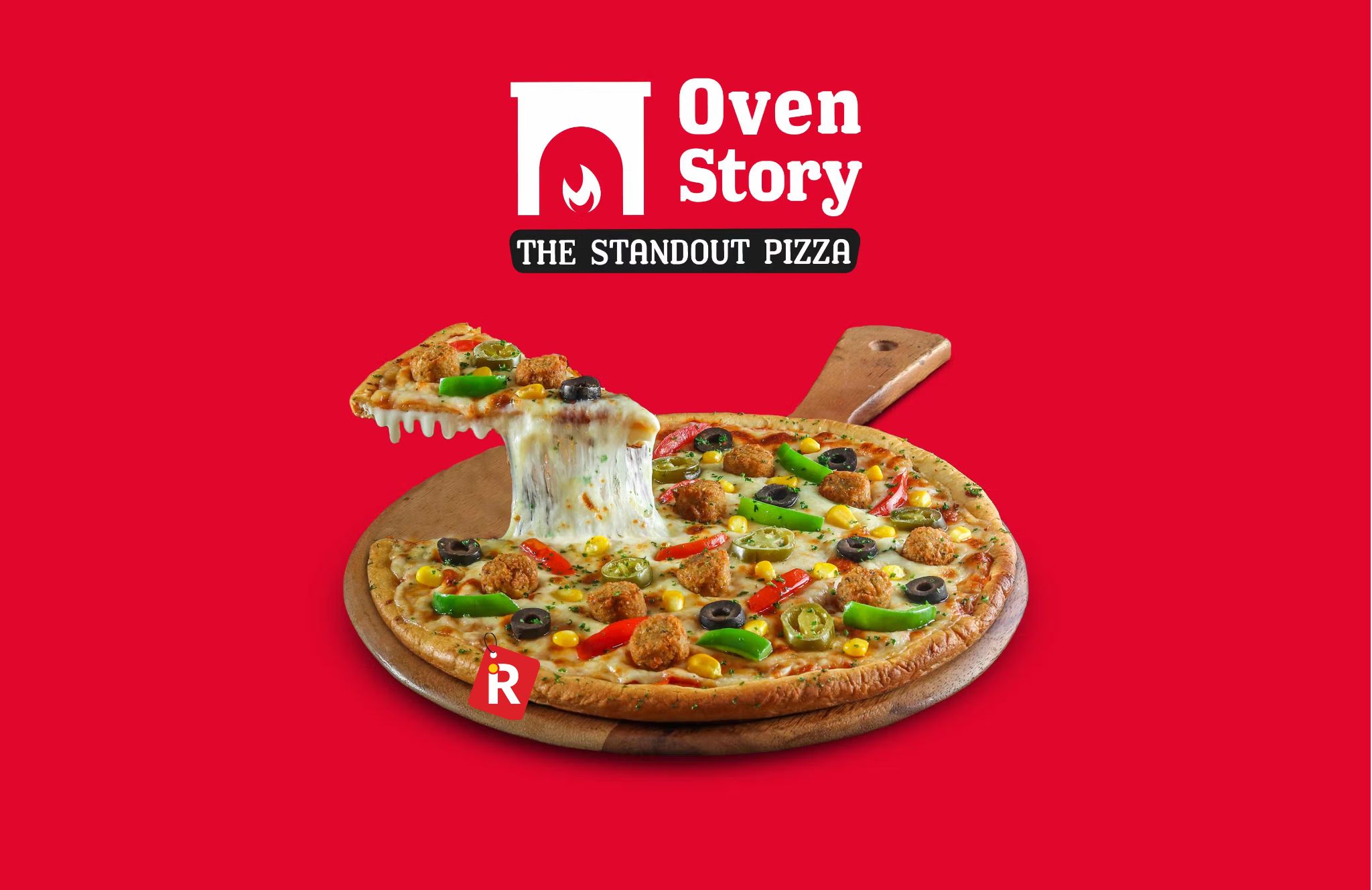
The Cloud Kitchen Innovator: Oven Story, a division of Rebel Foods, a trailblazing cloud kitchen company, focuses on online delivery to reduce costs and increase reach.
- Sales & Locations: Since Rebel Foods is a cloud kitchen brand, accurate sales data is incorporated into the company's overall performance. Nonetheless, Oven Story is widely accessible, with locations in almost 75 Indian cities.
- Key Strengths: Oven Story offers a first-rate home delivery service and specializes in gourmet pizzas with distinctive cheese bases (Chipotle, Peri-Peri, Tandoori, and El-Classico). Their asset-light cloud kitchen model enables rapid delivery and effective scaling.
Pizza Express India: A Fine Italian Bite

Unlike quick-service restaurants, Pizza Express provides a more sophisticated, genuine Italian pizza experience in India.
- Locations & Sales: Pizza Express operates in major Indian cities, including **Bangalore, Delhi, Mumbai, and Pune**, though specific sales data is not publicly available. It caters to city dwellers looking for fine dining.
- Key Strengths: The brand is renowned for its **authentic thin-crust Italian pizzas**, a **premium casual dining ambiance** featuring open kitchens, and a **diverse menu** that offers more than just pizza, guaranteeing a full Italian culinary experience. Its popularity is also increased by its widespread recognition.
Look at this: Ice Cream Prices to Become Hot this Summer
Papa John's

The Ambitious Comeback and Re-Entry: With ambitious expansion plans for 2024–2025, Papa John's, a global pizza chain known for its "Better Ingredients. Better Pizza." philosophy, has recently returned to the Indian market after leaving in 2017.
- Sales and Locations: Since the company is a recent entrant, its current sales and location statistics are still being developed. Nonetheless, Papa John's intends to open a sizable number of new locations as part of its aggressive expansion strategy throughout major cities.
- Principal Advantages: They set themselves apart by emphasizing hand-tossed dough and premium, fresh ingredients to appeal to the premium market. Their strong brand recognition throughout the world serves as a solid basis for their resurgence.
Little Caesars

The Newcomer with Extensive Goals: The third-largest pizza chain in the world, Little Caesars, is launching an aggressive expansion strategy in India, with plans to open its first location in the Delhi NCR area in June 2025.
- Sales & Locations: Since the company is new, sales numbers are not yet known. By the end of the decade, Little Caesars hopes to open 100 locations in India, with long-term plans to open "hundreds and eventually thousands of stores."
- Principal Advantages: Little Caesars, which is well-known for its inexpensive and "Hot-N-Ready" pizza concept, is adding vegetarian options and flavored crusts to its menu for India in an effort to take a sizable chunk of the budget-conscious but quality-conscious market.
Conclusion
There is room for expansion in the Indian pizza market. Demand will continue to be driven by factors like growing urbanization, rising disposable incomes, and the ongoing development of digital platforms. Homegrown brands like La Pino'z and Oven Story are proving that innovation, localization, and astute business strategies can carve out significant market shares, even though international players will probably continue to dominate due to their strong operational structures and well-known brands.

Vietnamese coffee is quickly becoming the new favorite among Indian coffee lovers. Known for its bold, intense flavor and smooth, creamy texture, this unique brew is making its way into cafés, kitchens, and conversations across the country. Whether you’re sipping it in a stylish café in Delhi or brewing it with a traditional Phin filter in your Bangalore apartment, Vietnamese coffee is adding a refreshing twist to India’s coffee culture.
What sets it apart? It’s the robust Robusta beans, the use of sweetened condensed milk instead of regular milk, and the slow-drip Phin method that bring out deep, chocolatey notes. The result is a strong yet sweet cup of coffee that feels both comforting and exotic. In this article, we explore why Vietnamese coffee is trending in India, which top brands are winning hearts, and how Gen Z and millennials are making it part of their daily rituals. From café menus to Instagram reels, this Southeast Asian brew is no longer a hidden gem—it’s a full-blown trend. If you haven’t tried it yet, now is the perfect time to take that first sip.
Read more: 6 Benefits of Drinking Black Coffee
5 Best Coffee Beans in the World: Sips of Heaven You Can’t Miss
Why Vietnamese Coffee Feels So Different
Vietnam is the second-largest coffee producer in the world. But what makes Vietnamese coffee unique is the use of Robusta beans, which are stronger and more bitter than Arabica. This results in a bold, thick brew that packs a punch. Instead of milk or cream, Vietnamese coffee uses sweetened condensed milk. This gives the coffee a rich, sweet, and creamy flavor. It's often served iced, which makes it refreshing, especially in hot Indian weather. Another thing that sets it apart is the Phin filter—a small metal drip filter used for brewing. It’s slow, simple, and satisfying to watch.
Discover the Top Vietnamese Coffee Brands Gaining Fans in India
Here are the top brands that are trending in India and where you can find them:
1. Trung Nguyên Legend

Trung Nguyên Legend is Vietnam’s most iconic coffee brand. Founded in 1996, it helped popularize Vietnamese coffee worldwide. The brand uses high-quality Robusta beans blended with other bean types like Arabica and Excelsa. Their Gourmet Blend and Creative series are popular among people who enjoy a deep, intense brew. What sets Trung Nguyên apart is its focus on traditional brewing techniques and flavor science. Their branding talks about “inspirational energy,” aiming to give coffee lovers more than just caffeine. The G7 Instant Coffee line is especially famous in India because it is easy to make and gives a true Vietnamese taste without needing a Phin filter. Trung Nguyên also invests in sustainable farming and supports coffee farmers across Vietnam. It’s a complete package for both beginners and seasoned coffee drinkers.
- Best for: Rich flavor, perfect for condensed milk recipes
- Available on: Amazon, Flipkart
Know more: 5 Bestselling Coffee Brands in India to Try Right Now
2. Highlands Coffee
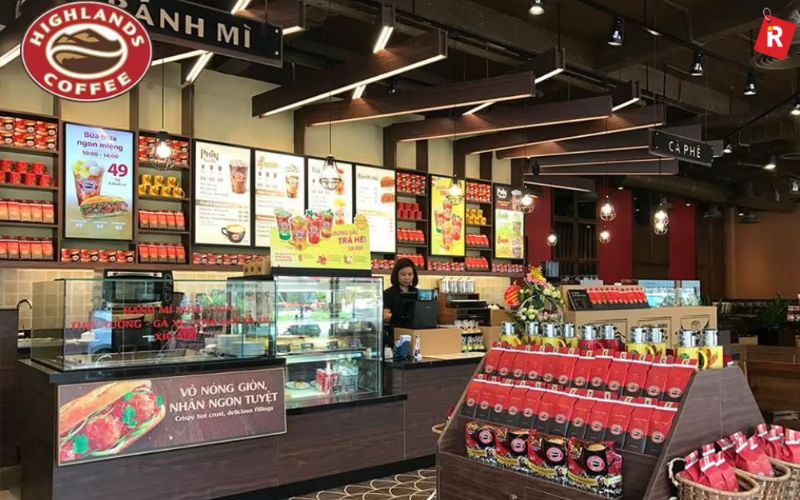
Highlands Coffee began in 1999 and was one of the first Vietnamese coffee chains to blend modern branding with traditional coffee culture. It started as a packaged coffee brand and later became a major café chain in Vietnam. Today, it sells ground coffee blends for home brewing. Highlands Coffee is known for its balanced flavor, which suits those who prefer less bitterness. The beans are usually medium-roasted, making them smooth and rich without being overpowering. In India, people can buy Highlands products online through specialty sellers and some gourmet food stores. Their coffee pairs well with condensed milk or coconut milk. One thing that makes Highlands special is their café-style feel even in packaged products. If you enjoy milder Vietnamese coffee or are new to it, this brand is a great starting point. Their packaging is also clean, modern, and visually appealing.
- Best for: Café-style Phin brews
- Available on: Niche online stores and global e-commerce platforms
- Popular picks: Ground coffee for drip brewing
3. G7 Instant Coffee

G7 Coffee is a product of Trung Nguyên but has its own identity. It was launched in 2003 as a ready-to-drink, instant Vietnamese coffee. What makes G7 special is its unique dry roast technology, which locks in flavor and aroma. It doesn’t contain any preservatives or artificial flavors. G7 comes in several types—3-in-1 (coffee, sugar, milk), 2-in-1 (no sugar), and black. The 3-in-1 is most popular among Indian consumers because it gives that sweet, creamy Vietnamese flavor without effort. It dissolves easily in hot or cold water and is travel-friendly. The strong caffeine kick is loved by students, office-goers, and travelers. G7 is also priced affordably, making it a good entry point into the world of Vietnamese coffee. Its shelf life is long, and it’s available on platforms like Amazon and Flipkart across India.
- Best for: On-the-go coffee drinkers
- Taste: Bold, slightly sweet, no bitterness
- Available on: Amazon India
4. King Coffee

King Coffee was launched in 2016 by Le Hoang Diep Thao, the co-founder of Trung Nguyên. After her business split from Trung Nguyên, she started King Coffee to bring Vietnamese coffee to more global markets. The brand gained fame quickly because of its high-quality beans, stylish packaging, and strong export focus. It offers instant, ground, and capsule coffee options. In India, King Coffee is still a niche product but is growing thanks to Instagram sellers and premium online shops. One unique feature is its focus on women farmers and empowerment, through the Women Can Do initiative. King Coffee’s taste is bold, with a more roasted and bitter edge—perfect for people who like their coffee strong and black. It’s great for gifting or as a treat for coffee lovers who enjoy trying premium international blends.
- Best for: Premium instant coffee
- Where to buy: Limited availability on import sites and Instagram sellers
- Taste profile: Intense and aromatic
Also check: 12 Delicious High-Protein Foods to Eat Daily for a Healthier You
5. Cafe Pho

Café Pho is a brand by Vinacafé Bien Hoa, one of Vietnam’s oldest coffee companies. It stands out for making traditional Vietnamese iced coffee easy to enjoy at home. The name “Pho” refers to the famous Vietnamese street, symbolizing everyday comfort. Café Pho comes in instant sachets, often flavored with condensed milk for a classic “cà phê sữa đá” taste. Its iced coffee mixes are creamy, slightly sweet, and easy to make—just mix with cold water and ice. It’s great for summer or those who love cold brews. Unlike other brands, Café Pho is designed for casual drinkers and beginners. It's very affordable and has a smooth flavor that’s not too bitter. Available in Indian online marketplaces and Asian supermarkets, it’s gaining fans for its refreshing twist on coffee culture.
- Best for: Vietnamese iced coffee lovers
- Brewing style: Mix with cold water or milk
The Vietnamese Coffee Experience at Indian Cafés
A growing number of Indian cafés are now serving Vietnamese coffee. In Mumbai, cafés like Kuckeliku Breakfast House offer Vietnamese iced coffee as part of their menu. In Delhi and Bangalore, specialty coffee houses are introducing cold brews and condensed milk versions inspired by Vietnamese recipes. If you haven’t tried one yet, ask for “Vietnamese-style cold brew with condensed milk” at a local café. The sweet-meets-strong taste is unforgettable.
What Makes It Gen Z-Approved?
Gen Z is all about strong flavors, trendy packaging, and TikTok-worthy moments. Vietnamese coffee offers all three. Many coffee reels on Instagram show the Phin filter dripping slowly over a glass of condensed milk. The layers look aesthetic. The sound of the drip is relaxing. It’s not just coffee—it’s a ritual. Plus, it’s affordable. A G7 pack costs less than a fancy café latte.
India x Vietnam: A Coffee Culture Blend
India loves its filter coffee and masala chai, but there's space for new flavors. Vietnamese coffee fits in well. It’s bold like South Indian filter coffee, yet sweet and modern like a café latte.
Many people are now mixing both cultures. For example, using Indian coffee powder with condensed milk. Or trying coconut milk with Vietnamese beans. The fusion is tasty and fun.
Coffee Facts from Vietnam
- Vietnam is the world’s second-largest coffee exporter, after Brazil.
- Egg coffee is a famous Vietnamese drink. It’s made with whipped egg yolks and sugar.
- Coconut coffee and yogurt coffee are popular café drinks in Hanoi and Saigon.
- The Phin filter is over 100 years old and is still used in nearly every Vietnamese home.
Brew it Up!
Vietnamese coffee is not just a trend—it’s becoming a part of urban Indian coffee culture. Whether you try a cold brew at a café or order a Phin filter to brew at home, you’re tasting a part of Vietnam’s rich tradition. Personally, I discovered Vietnamese coffee during the lockdown. I ordered a Phin kit and a pack of G7 coffee. The moment I tasted it, I was hooked. Now, I alternate between Indian filter coffee in the morning and Vietnamese iced coffee in the afternoon. It gives me variety and joy in my daily routine. For café lovers, home brewers, or curious taste explorers, Vietnamese coffee is worth a try. It’s affordable, accessible, and full of flavor.

Franchising a restaurant is a good way to enter the food industry if you’re thinking about entering, unlike starting a restaurant from scratch. Starting a franchise restaurant gives automatic brand value. Also, the brands provide support for starting their franchise. But starting a franchise is not easy. Firstly, you must know the basics of a franchise. Also, knowing the details of the brand you want to open a franchise for and knowing about the market and food industry is necessary. However, the most important thing you need to know about is how much it costs to open a franchise restaurant.
In this article, we will be discussing how much it costs to open a franchise restaurant, including initial fees, ongoing expenses, and real-life examples. Whether you are going to start a fast food, fine dining, or even a coffee brand franchise, you’ll be able to understand the financial requirements and make a decision based on them.
What is a restaurant franchise?
A restaurant franchise is a business model where the right to open a branch of the brand’s restaurant is given to the person who pays a royalty for it. The person who gets the rights under their name is called the ‘franchisee,’ and the brand that gives the franchise is called the ‘franchisor.’ In simple words, “A franchise is a restaurant that is in a special location affiliated with its parent brand.” However, just getting the rights to the franchise doesn’t mean that you own that branch now. You do not have the autonomy to make independent big decisions. These are all taken care of from the main branch. However, the main branch also provides support and training to employees.
Read now: 5 Best Restaurants in Delhi/NCR for Birthday Party Celebration
Why franchise a restaurant?
Here are some reasons entrepreneurs choose restaurant franchising:
- Brand recognition: Instant credibility and a customer base
- Training and support: Operational and managerial guidance
- Marketing resources: National campaigns and materials
- Faster ROI: Many franchises become profitable more quickly
But all of these advantages come at a price, which brings us to the core question…
Key Costs of Franchising a Restaurant
The cost to open a restaurant franchise varies widely based on the brand, location, and business model. However, the main costs generally include
- Franchise Fee
- Initial Investment (build-out, equipment, signage)
- Royalties
- Marketing/Advertising Fees
- Working Capital
- Training Costs
Let's take a look at all these costs in further detail.
Read now: Ice Cream Prices to Become Hot this Summer
Breakdown of Startup Costs

Franchise Fee
The franchise fee is the one-time payment made to the franchisor to get the right to use the brand and its business system. The range of this one-time payment can differ from ₹2 lakh to even ₹50 lakhs. High-end brands like McDonald’s have a brand value of around ₹10 crores. Also, this fee is non-refundable and separate from other costs.
Setup and Infrastructure Costs
The setup of the restaurant includes rent of the location, interior design and furniture, kitchen equipment, and staff training. The range for setup and infrastructure is around ₹10 lakhs to ₹1 crore+, depending on the location and store size.
Staffing and Training
This is usually covered by the franchisor; however, training the staff can cost around ₹2-₹10 lakhs for 3-6 months. This amount includes the salaries, uniforms, and training of the staff.
Marketing and Advertising
Franchisees typically contribute to a brand-wide advertising fund and local promotions. The range for local marketing is to be around ₹50,000 - ₹2 lakhs. And sometimes the franchisors require the franchisees to pay a sum for a nationwide ad. This is usually 2 to 5% of monthly revenue.
Working Capital
Working capital is the funds required to sustain daily operations and short-term obligations. The range for this is around ₹5 lakhs to ₹20 lakhs.
Royalties
The franchisee also needs to pay a royalty fee to the franchisor. This is typically calculated by the gross sales of a specific time period, like a month or a year. The typical rate of it can vary from 4% to 10% of gross sales. The brand's popularity and scale also have an impact on deciding the rate.
Renewal Fees
Some franchises charge a fee when renewing the franchise agreement, typically every 5–10 years. The average renewal fees typically range from 1% to 10% of annual sales or a fixed fee.
Specific Restaurant Types and Costs:
- Fast-food outlets can start from ₹15-50 lakhs.
- Casual dining restaurants can typically range from ₹2 to 5 crore.
- Bars can range from ₹2 to 5 crore.
- Smaller outlets (QSRs) may require ₹15,00,000 to ₹30,00,000 for a 100-500 sq ft space.
- Larger casual dining outlets could cost ₹45,00,000 to ₹1 crore for a 1000-2000 sq ft space.
Read now: 5 Best Restaurants in Delhi/NCR for Birthday Party Celebration
Factors Affecting Cost:
- Brand Reputation: Brands with a higher reputation, like McDonald’s, may have higher franchise fees and royalty rates.
- Location: Location can also have a big impact on the cost of opening a franchise. The cost for rent and property taxes can vary from location to location.
- Size and Layout: Larger restaurants, like dining outlets that have more fancy or elaborate interiors, are more expensive to set up.
- Equipment and Technology: The type of equipment for the franchise also affects the overall cost. The quality of kitchen equipment and technology will impact costs.
- Marketing and Advertising: If the restaurant is new, then it needs to be properly advertised so that it gains the attention of the people. Also, the marketing strategy of the main branch also affects the cost, as it might also include marketing costs. Depending on this, the amount spent on marketing and advertising can vary significantly.
- Legal & Regulatory Compliance: Things like licensing, GST registration, FSSAI certification, and fire safety measures may incur added costs.
Hidden and Recurring Costs to Consider
Beyond the initial investment, several ongoing and sometimes overlooked costs can impact profitability:
- Inventory and perishables
- Electricity and water bills
- Maintenance and repair
- Digital tools and POS subscriptions
- Marketing and promotions
- Insurance (fire, liability, etc.)
Cost Examples of Popular Restaurant Franchises in India (2025)
| Brand | Franchise Fee | Total Investment | Royalty |
|---|---|---|---|
| Subway | ₹6.5–8.5 lakhs | ₹40–₹60 lakhs | 8% |
| Domino’s | ₹30 lakhs+ | ₹50–₹70 lakhs | 5.5% |
| KFC | ₹35–₹50 lakhs | ₹1–₹2 crores | 6% |
| Barista | ₹5 lakhs | ₹30–₹50 lakhs | 8% |
| Baskin-Robbins | ₹4 lakhs | ₹10–₹25 lakhs | 5–6% |
| WOW! Momo | ₹6–₹8 lakhs | ₹25–₹40 lakhs | 7–8% |
| Haldiram’s | ₹30–₹50 lakhs | ₹1–₹2 crores+ | Negotiable |
Note: These are approximate costs. Actual investment may vary based on city, outlet format, and negotiation.
Know this: 17 Restaurant Sauces Explained: A Delicious Guide for Food Lovers
Types of Restaurant Franchises in India
There are
- Quick Service Restaurants (QSRs): Fast food chain restaurants come under this category. Fast food outlets like Domino’s, McDonald’s, and Subway typically require medium to high investment. But these franchises are also popular, so the chance of getting more revenue is higher. Also, these restaurants are very popular, so the cost of marketing can be lower.
- Casual Dining Restaurants (CDRs): These dining outlets are moderately priced. Restaurants such as Barbeque Nation or Mainland China come under this category.
- Fine Dining Restaurants: High-end luxury restaurants are under this section. These outlets are generally found in metro cities or high-income zones. To open a franchise, one might need a good amount of money. Also, the rent for these might be high, as these are in metropolitan areas.
- Cloud Kitchens: These are delivery-only models that require no dine-in space and offer a low-cost entry point.
- Cafés and Coffee Shops: This category includes brands like Café Coffee Day, Starbucks (license model), and The Belgian Waffle Co.
Know more: Fine Dining Plating: 12 Essentials That Elevate Every Dish
Is Franchising a Restaurant in India Profitable?
Franchising a restaurant in India can be highly profitable if planned properly. The first advantage would be to purchase the rights of a famous and reputable brand like Starbucks that everyone knows. The second thing to keep in mind is the location. One should choose a good location strategically. Areas with crowds and tourist locations are a good place to start. Margins typically range from 15% to 25%, depending on the concept and location. However, success is not guaranteed. Proper management, consistent quality, hygiene, customer service, and marketing are all critical for sustainable profitability.
Some advantages include
- Reduced risk due to brand recognition
- Access to training and support
- Established supplier network
- Faster customer acquisition
Conclusion
Franchising a restaurant in India is a good and promising opportunity that requires careful planning, financially and brand selection. So, while considering starting a franchise, carefully consider all your options and make a good choice. Costs can range from ₹10 lakhs to over ₹2 crores, depending on the concept and brand.
If you're new to the F&B industry, starting with a low-to-mid-investment QSR or cloud kitchen might be a wise choice. For seasoned investors, casual or fine dining offers greater revenue potential but comes with higher risks and responsibilities.
Before investing, make sure to:
- Analyze the franchise agreement carefully
- Visit existing outlets and speak to current franchisees
- Prepare a realistic ROI and break-even plan
- Understand your responsibilities as a franchisee
With the right approach, franchising a restaurant in India can be both profitable and fulfilling.

Sustaining high profits in the restaurant industry amid rising costs, intense competition, and shifting consumer preferences demands a sharp focus on boosting revenue while streamlining operational expenses. The major focus should be on optimizing menu engineering, controlling food and beverage costs, increasing table turnover, improving labour efficiency, leveraging technology, drive delivery and takeaway revenue, enhance guest loyalty and maximise space utilization.
Around 60% of restaurants in India struggle to scale-up in the business as these issues create hindrance to expand.
Maintaining Cost-Efficiency
Cost efficiency is maintained by running lean and flexible teams, cross-training staff, and utilizing tech for smarter inventory and labor scheduling.
“One of the most effective ways is through menu engineering, understanding which items are not just popular but also profitable, and placing those in the front. Additionally, building strong supplier relationships plays a crucial role. By negotiating long-term deals or sourcing seasonal produce locally, restaurants can cut costs while maintaining freshness,” said Varun Bahl, Founder of Cafe Fleur.
Standard Operating Procedures (SOPs) are equally important as they ensure that no matter who is cooking or serving, the guest experience remains consistent across all touchpoints.
Dheeraj Gupta, Managing Director, JumboKing shared, “Keeping profits high in the restaurant industry is by doing innovations. You need to keep on introducing new products and varieties. It is one of the better ways to manage margins.”
Retaining Labor
Cost efficiency doesn’t always mean cutting corners — especially when it comes to labor. In fact, investing in people smartly can reduce long-term costs.
Putting his views, Shreh Madan, Co-founder, Burgrill said, “We focus on reducing staff turnover, which is one of the biggest hidden costs in the industry. This is done through better training programs, clear growth paths, and regular appraisals that make employees feel valued.”
Building Customer Relationships
Running a restaurant is not just about good food but about building relationships with your customers, your team, and everyone who keeps the kitchen running. Rashmi, Founder of Two Gud Sisters pointed that trust has allowed us to maintain consistency even while working toward stronger profit margins.
Continuing inflation
Inflation is a reality one can’t ignore, especially in a business that runs on fresh produce, quality ingredients, and people power.
Madan pointed, “We’ve built safeguards into our model. As we scale and increase the number of outlets, economies of scale kick in helping us optimize procurement, logistics, and fixed costs.”
“We keep the narrow menu and increase the volumes in same product line, we make them better and volumes go up in that way we become more efficient and confident which give us more margins,” added Gupta.
Restaurants also review and recalibrate their pricing annually, ensuring that it protect both profitability and portion integrity.
Supply chain woes
One of the biggest challenges we face is the lack of robust infrastructure for frozen supply. It directly affects product quality and shelf life, which are non-negotiable for us.
“We’re constantly adapting with multiple backup vendors, better planning, and tighter inventory controls, but these remain real hurdles for any food business operating at scale,” shared Madan.
Pointing his views, Gupta added, “We keep adding two new burgers every year and we remove the items which are not on demand. Our lightness in supply chain is maintained as we focus on this aspect. Lot of restaurateurs becomes unfocused in restaurant business as they keep on adding SKUs and focus on none and they are not able to build more economy or scale up in the industry.”
Handling outbreaks
Health emergencies like the pandemic or a widespread flu can disrupt business overnight, so preparedness must be built in the model.
Rashmi shared, “We shifted quickly, adjusted formats, and found ways to stay connected to our customers. Planning ahead without overextending ourselves helped us stay afloat and serve with care even in tough times.”
Commenting on this, Bahl added, “Cafe's that succeed during such times typically allocate around 15 to 20 percent of their revenue toward contingency planning. This includes maintaining reserves, stocking up on essential health and sanitation supplies in advance, and investing in safe packaging and digital ordering systems.”
During emergencies, the ability to pivot quickly, whether through cloud kitchens, meal kits, or a stronger delivery setup can keep operations running and costs manageable.
Upgrades
Smart restaurateurs focus on elevating perception through digital storytelling, subtle visual updates, and improved guest experiences. Investing in social media, packaging, or even a brand refresh in terms of uniforms and music can significantly elevate brand value without incurring heavy capital costs.
Bahl highlighted that phased interior improvements, thoughtful collaborations, and tech upgrades such as modern POS systems or CRM tools can enhance both the front and back-end operations while being cost-effective.
With this, we can surely say that one can achieve profits, but the future will revolve around tech-enabled efficiency, value-driven customer experience and diversified value streams.

With the sun soaring through the skies and people being tortured by its heat, they have started craving their favorite summer treat: ice cream. But this frozen treat, which is loved by all and has a global market size estimated to be around $79.3 billion as of 2023, is becoming increasingly expensive this summer. And the people are confused as to why this treat, which was so affordable in the past, is now more costly than before. There are many reasons for this change. Like the cost for raw materials has increased in recent years, and there is also a shortage of coconut oil, which is one of the most important ingredients in the production of ice cream.
However, the demand for ice cream only keeps increasing year by year. So there is also a disruption in the supply chain. In this article, we’ll be discussing the key reasons behind the surge in ice cream prices and exploring what this situation will mean for both consumers and the ice cream industry.
Why are the prices going up?
Coconut oil, which is the key ingredient in the production of ice cream due to its high melting point, has reached a high price in the market. That is due to the scarcity of coconut oil in the market. Coconut oil is a product made from coconuts, and they are mostly grown in tropical regions near the equator. Indonesia is the largest producer of coconuts in the world. After that comes the Philippines, which is the largest exporter of coconut oil and other coconut products. Some other countries where coconuts are produced are India, Sri Lanka, Vietnam, Thailand, Brazil, and the Caribbean Islands. So, why is there such a short supply of coconuts from these countries?
Indonesia and the Philippines are the largest suppliers of coconuts in the world. They supply around three-quarters of the world’s coconut oil. However, climate changes across these regions caused a smaller harvest of coconuts this time. Due to the El Niño phenomenon, there were drier conditions across Southeast Asia from June to October last year. Coconuts require a warm and humid climate to grow properly. Since it takes about one year for a coconut tree to bear fruit, there was no possibility of getting more coconuts in the small amount of time. This situation is believed to stay in the upcoming years, and there might not be a good harvest for coconuts.
But this reason alone is not responsible for the limited supply and high price of coconut oil in the market. The second main reason is the production of biofuels from coconuts. In the Philippines, the government made it mandatory to blend larger amounts of cocomethyl ester, which is a product derived from coconut oil, into diesel to produce biodiesel. The percentage of blending target was around 2 percent as per last year. So it didn’t have any big impact on the overall supply of coconut oil. However, this percentage was raised to 3% as of October 2024, with the goal to increase the percentage by 4% by the end of 2025 and 6% in 2026. As said by the Philippines’ Energy Secretary Raphael Lotilla: “Implementing the higher biofuels blend is a win-win solution as we promote economic growth, uphold environmental growth, uphold environmental stewardship, and strive for cleaner energy utilization.”
Read more: How Cloud Kitchens are Transforming India’s Food Delivery Revolution
Another reason that is adding to the already unfortunate situation is Chocolate. In the chocolate industry, many manufacturers have started using coconut oil as a substitute for cocoa butter, which is a necessary ingredient for chocolates. The reason is the high price of cocoa butter. Despite the high price of coconut oil, it is still way much cheaper than that of cocoa butter. As the crops of cocoa are also having a short harvest due to climate change, manufacturers started switching to coconut oil to start the production of chocolates. Also, coconut oil is not just a cheap alternative to cocoa butter; it is also a better ingredient in vegan or dairy-free chocolate products.
Also, some other reasons that are affecting the surging price of ice cream may be dairy prices increasing, a shortage of labor, increased demand due to high temperatures, or energy costs.
Read more: 5 Best Restaurants in Delhi/NCR for Birthday Party Celebration
Will this situation continue next year?
As per the situation now, there is a question that arises: “Will this situation continue next year?” Because right now, it seems the main problem is coconut oil. And as per the stats, the climate of the coconut-producing countries is going to remain the same for the upcoming years. Which means less quantity of coconut oil. And the government’s plan to use coconut oil for biofuels is a large-scale plan that will also continue for a long time. And many manufacturers are already substituting cocoa butter for coconut oil. So, what can ice cream-making industries do in such a situation? Because if the market is going to remain the same for a long time, then there is something industries should do, because the manufacturing of ice cream cannot be halted until there is enough supply of coconuts. Also, they’ll have to keep increasing the price of ice cream if there is higher demand and less supply of ice cream.
Know more: From Kitchen to Table: Celebrating Safety Standards in Every bite
What can industries do?
Despite such a situation, where industries do not have a choice but to increase the market price of ice cream due to different factors affecting the production process, there are some changes that the industries can make to not halt the supply of ice cream and also keep the price consistent.
- Use Alternative Fats/Oils: As there is a shortage and increased price of coconut oil in the market, the industries should switch to other alternatives like palm oil, cocoa butter, vegetable shortening, dairy fats, nut-based oils or butter, avocado oil, or olive oil. Each of these oils will give a different texture or flavor to the ice cream, so the substitutes should be tested before using them in the production process.
- Diversify Supply Chains: Instead of relying on one or two specific countries for the supply of coconuts, the industries should also try to make connections with the smaller suppliers of coconuts, like India, Sri Lanka, or Vietnam, to reduce disruption risk.
- Innovation in Product Lines: The ice cream manufacturers should launch new products like coconut-free or vegan product lines in the market. Such premium products will attract the eye of consumers, and who knows, this problem can even become a new strategy to dominate the market by launching a unique product.
Marketing Strategy: After developing a new product, the company needs to properly advertise it so that it can replace previous products and stay in the market. For example, creating a vegan ice cream and advertising it as healthy and a product with fewer calories, so that it gains more attention from people.
Read more: 10 Fiber-rich foods for Diabetics
Are consumers okay with higher prices?

In spite of all the reasons, ice cream lovers are ready to buy ice cream even at a higher cost than before. That is because the lovers of ice cream do not care about the price of their favorite dessert. There is also a vast majority of ice cream lovers who like to eat different varieties of ice cream, so they might just choose options that do not need coconut oil to be made. Even scientists believe that eating ice cream increases the dopamine levels of the brain, so it automatically makes us happy. However, from an industry’s perspective, there should be something done because this situation might not continue forever. Someday, if the cost of ice cream increases too much, the demand for ice cream might decrease.
Read more: EatSure Launches Rajkot’s First Veg-Only Smart Foodcourt at Crystal Mall
What can consumers do?
- People who want to eat ice cream but do not want to pay a high price for it, there are some options out there for you, too.
- Buy ice cream packages in bulk or buy large boxes of ice cream, as they tend to be either on discount or offer better value.
- Making ice cream at home with your friends and family is both a good way to spend time with them and also to make this sweet dessert with others. You can also add healthy ingredients while making the ice cream.
- Supporting local shops can also be a good idea, as they tend to have cheaper ice cream options, and doing this can also help the shop to gain more potential customers and brand value.
- Watch for sales times when the prices of products are low so that you can get a discount on ice cream.
Conclusion
As the cost of ice cream becomes hot this summer, it might be difficult for its lovers to enjoy this sweet delight. But the factors leading to the high price are also to be considered seriously, as they have a very big impact on the ice cream market. Ice cream is not just a treat; it is the essence of summer. It is what people look forward to while waiting for summer. So, there are some steps to be taken so that people can enjoy their favorite treat. Otherwise, eating an ice cream will just become a luxury for people.

The Odisha government is set to impose a ban on the sale and consumption of alcohol and non-vegetarian food within a 500-meter radius of the Jagannath Temple in Puri. This move is aimed at maintaining the sanctity of one of India’s most revered pilgrimage sites while promoting Puri as a spiritual tourism destination. The temple, dedicated to Lord Jagannath, attracts millions of devotees each year, and the surrounding area has long been a hub of religious activity. By implementing this restriction, the government hopes to create a more sacred and peaceful environment around the temple. However, this decision is also expected to bring significant changes to the local economy and lifestyle. Many small restaurants, food vendors, and liquor shops operating nearby may be affected. As this cultural shift unfolds, it raises important questions about religious tradition, local livelihood, and how modern tourism can balance both faith and commerce in a heritage-rich city.
Read more: Rapido Food Delivery Strategy: A New Game Plan to Beat Zomato & Swiggy
What Is the Ban About?
The Odisha government is moving forward with a proposal to ban the sale and consumption of alcohol and non-vegetarian food near the Jagannath Temple. The area under discussion is a 500-meter zone around the temple. This includes local markets, eateries, and shops that cater to thousands of pilgrims every day. The move is part of a broader vision to make Puri a global spiritual destination. The temple is one of the Char Dham pilgrimage sites in India. Keeping the surroundings clean and spiritually pure is a top priority.
The proposed zone covers a large part of Puri’s old town area. This includes popular food joints, seafood stalls, bars, and local shops. Tourists often enjoy coastal delicacies such as prawn curry, fish fry, and chicken thalis in this area. Liquor shops and small bars also operate here, especially catering to beach-goers. Once the ban is enforced, these establishments will have to shut down or shift to areas outside the 500-meter limit.
Know more: The Science of Baking: Why Your Cake Isn’t Rising (And How to Fix It)
6 Unexpected Benefits of Eating Jackfruit (Kathal) – Nature’s Spiky Surprise!
Why Is This Ban Being Proposed?
There are multiple reasons behind the decision.
- First, the Jagannath Temple is a deeply spiritual place. Consuming meat or alcohol goes against the beliefs of many devotees. The temple’s strict vegetarian tradition is rooted in centuries of religious practice. Keeping the area meat- and alcohol-free helps maintain that sacred atmosphere.
- Second, the government wants to improve the image of Puri as a pure pilgrimage site. It is trying to replicate the clean, peaceful atmosphere seen at places like Tirupati and Vrindavan.
- Third, this is part of the larger Srikshetra Heritage Corridor development project. The goal is to make the temple surroundings more tourist-friendly, well-managed, and culturally appropriate.
Many locals support the move, especially those connected to temple services and tourism. They believe a clean and holy environment will bring more pilgrims and boost religious tourism. But others are worried. Some small restaurant owners who sell non-veg food say their earnings will drop. They feel that tourists come to Puri for both the beach and the local food, including seafood. Tourists too, have varied opinions. Some agree that the area near the temple should remain pure and spiritual. Others feel they should have the freedom to enjoy local cuisine and drinks during their stay.
Are There Similar Bans in Other Places?
Yes. Similar restrictions exist in many holy cities across India. For example:
- Varanasi has restrictions near the Kashi Vishwanath Temple.
- Amritsar doesn’t allow alcohol or meat within a certain distance of the Golden Temple.
- Tirupati follows a strict vegetarian zone policy near its temples.
These rules have often helped increase spiritual tourism and keep the temple areas clean and peaceful.
Also check: 5 Ways to Use Garden Cress Seeds (Halim) for Stronger Hair and Bones
Importance of Ambience: How Interior Design Impacts Customer Retention
Impact on Local Economy
The ban may affect businesses that rely on non-veg food and alcohol sales. Small restaurants, beachside food stalls, and liquor shops may have to shut or shift elsewhere. However, the government believes that in the long run, this move will benefit the local economy. As the number of pilgrims increases, demand for vegetarian food, handicrafts, souvenirs, and lodging will grow. Locals may find new business opportunities in areas aligned with temple tourism. Many believe that if properly planned, the ban could lead to the rise of heritage cafes, Ayurvedic restaurants, and wellness shops in place of bars and meat stalls.
If you’ve visited Puri before, you might have enjoyed grilled fish at Swargadwar or sipped on local beer near the beach. That experience is likely to change. Puri is moving from being a mixed tourist destination to a more spiritually focused place. For some, it may mean letting go of the casual beach-town vibe. But for many, it’s a step toward reviving Puri’s original identity — the home of Lord Jagannath.
What Foods Are Going Off the Menu?
Popular items that may disappear from the temple area include:
- Fish curry with rice
- Crab masala
- Prawn pakoras
- Chicken biryani
- Alcoholic beverages
These may still be available outside the restricted zone. But tourists will have to walk further or dine outside the 500-meter area.
Will Shops and Restaurants Adapt?
Yes, many may change their menus and business models. Some restaurants are planning to switch to vegetarian thalis, traditional Odia cuisine, and temple prasadam-style meals. Others may open new shops offering sweets like chhena poda, khaja, or dry snacks for pilgrims. Handicraft stores, ayurvedic shops, and souvenir outlets may also grow in number.
Who Will Enforce the Ban?
The local administration and police will work together to enforce the rules. Violations may lead to fines, closure notices, or loss of licenses. Clear boundaries will be drawn around the temple area. Public signs will inform visitors about the dos and don'ts.
The ban is not just a rule — it is part of a broader cultural shift. It reflects Odisha’s intention to protect the spiritual value of Puri and offer a unique pilgrimage experience. For many, it’s not about what’s banned — it’s about what is being preserved. The Jagannath Temple is not just a religious site. It is a symbol of Odia pride, heritage, and devotion. Keeping its surroundings pure is seen as a step toward honoring that legacy.
The Bottom Line!
The Odisha government’s plan to ban alcohol and non-vegetarian food near the Jagannath Temple in Puri is a bold step that carries deep symbolic meaning. While it may pose short-term challenges for local eateries and liquor vendors, the move is aimed at preserving the temple’s sanctity and promoting spiritual tourism. The ban is expected to enhance the cultural and religious atmosphere, making the area around the temple more peaceful and respectful for pilgrims. For visitors, this means experiencing a quieter, more sacred environment when near the temple. However, Puri’s vibrant coastal life, including seafood and beachside experiences, will still be accessible, just beyond the 500-meter sacred zone surrounding one of India’s most revered spiritual landmarks.

Grilling transcends mere cooking; it's an immersive experience. From searing succulent steaks on a leisurely weekend to charring vibrant vegetables for a wholesome dinner, a foundational understanding of grilling basics is key to achieving perfection. This comprehensive guide is designed to transform you into a true grill master, regardless of your current skill level.
We'll meticulously walk you through every essential aspect, ensuring you gain the confidence and expertise to conquer any grilling challenge. Whether you're taking your first tentative steps into the world of open-flame cuisine or seeking to refine existing techniques, this resource offers invaluable insights. Prepare to unlock the secrets to perfectly cooked food, enhanced flavors, and unforgettable culinary moments right in your own backyard. Get ready to elevate your grilling game and impress friends and family with your newfound mastery.
Read more: The Science of Baking: Why Your Cake Isn’t Rising (And How to Fix It)
Mastering the Art of Roasting: Techniques Every Restaurant Chef Should
What is Grilling?
Grilling involves cooking food over direct heat, typically from a flame or hot coals. This method cooks food rapidly, imparting a distinct smoky flavor. The characteristic grill marks often seen on food not only enhance its visual appeal but also contribute to its taste.
Grilling's popularity stems from its ability to lock in flavors while requiring minimal oil. It excels at bringing out the best in both meats and vegetables. Furthermore, it's an excellent choice for outdoor cooking and social gatherings, adding a fun and interactive element to meals. This simple yet effective technique offers a delicious and often healthier way to enjoy a wide variety of dishes.
Grill vs Barbecue: What’s the Difference?
Many people confuse grilling and barbecuing. But they are not the same.
- Grilling is fast. It uses high heat and is good for small cuts of meat like burgers or chicken breasts. You cook directly over the flame.
- Barbecuing is slow. It uses low heat over a longer time. It’s better for big cuts of meat like ribs or brisket. Barbecue is usually done with a smoker or covered grill.
So remember: grilling is hot and fast, barbecuing is slow and smoky.
Know more: 6 Unexpected Benefits of Eating Jackfruit (Kathal) – Nature’s Spiky Surprise!
Types of Grilling Techniques

Different grilling methods work for different foods. Here are the main types:
- Direct Grilling: You place food right over the heat. This is best for quick-cooking foods like hot dogs, burgers, and seafood.
- Indirect Grilling: You keep the heat on one side and place the food on the other. This is perfect for whole chickens or roasts. It’s slower but cooks more evenly.
- Reverse Searing: This starts with indirect heat and finishes with direct heat. It gives meat a nice crust while keeping it juicy inside.
- Smoking: Food is cooked slowly using smoke. This adds a deep, rich flavor. Great for ribs, brisket, and even cheese.
- Rotisserie Grilling: Food is cooked while turning slowly. Best for whole chickens, lamb legs, or even pineapples.
What Foods Work Best with Grilling?
Almost anything can go on the grill. Here’s what works best:
- Meats: steaks, burgers, sausages, lamb chops
- Chicken: breasts, thighs, wings, whole chicken
- Seafood: prawns, fish fillets, lobsters
- Vegetables: bell peppers, zucchini, corn, mushrooms
- Fruits: pineapple, peaches, watermelon slices
Don’t forget to oil the food, not the grill. This helps prevent sticking.
Also check: 7 Healthy Chicken Dishes to Maintain Your Diet
High Protein Indian Meals You Should Try
When to Use Which Grilling Method
- If you’re short on time, use direct grilling.
- If you’re cooking a large piece of meat or want slow cooking, go for indirect grilling.
- Want that perfect steak? Try reverse searing.
- Planning a Sunday cookout with friends? Add smoking or rotisserie for flavor and fun.
Grilling Equipment You’ll Need
You don’t need fancy tools, but the right ones make it easier:
- Tongs – for flipping food
- Spatula – for burgers and fish
- Grill brush – for cleaning
- Meat thermometer – for perfect doneness
- Aluminum foil – for wrapping or indirect cooking
Types of Grills:
- Gas Grill – easy and fast
- Charcoal Grill – smoky flavor
- Electric Grill – great for indoors
- Pellet Grill – adds wood-fired taste
Choose based on your space, budget, and taste.
Marinades, Rubs, and Sauces
- Marinades: These soak into the food and add flavor. Use oil, acid (like lemon juice), and herbs. Marinate chicken for at least 30 minutes, beef for up to 4 hours.
- Dry Rubs: These are spice mixes rubbed directly on the meat. They give a nice crust when grilled.
- Sauces: Use BBQ sauce, garlic butter, or yogurt-based dips. But add sauces at the end. If added too early, they can burn.
Smart Grilling Tips for Beginners
- Preheat your grill – it ensures better sear
- Clean the grates – prevents old food from sticking
- Use the hand test – hold your hand 5 inches above the heat. If you can’t keep it there for more than 2-3 seconds, it’s hot enough
- Don’t press the meat – it loses juices
- Let meat rest after grilling – keeps it juicy
Grill Science: Why Does It Taste So Good?
Grilling creates the Maillard reaction. This is when heat changes the proteins and sugars in food, giving it that brown, crispy crust.
Char marks are not just pretty. They add a smoky, savory flavor. Use a thermometer to check doneness.
Here’s a quick meat temperature guide:
- Chicken: 75°C
- Beef (medium): 63°C
- Fish: 60°C
- Pork: 71°C
Common Grilling Mistakes to Avoid
- Flipping too often
- Not preheating the grill
- Using cold meat straight from the fridge
- Adding sauce too early
- Overcrowding the grill (leads to uneven cooking)
Simple Grilling Menu Ideas
Hosting a party or weekend lunch? Try these:
- Meat lovers: steaks, chicken wings, lamb skewers
- Veggie menu: grilled mushrooms, corn, paneer, and stuffed peppers
- Tropical touch: grilled pineapple or peaches with honey
- Seafood special: lemon-herb prawns or fish tikka
Make sides like grilled garlic bread or salad for a complete meal.
Final Thoughts
Grilling is surprisingly straightforward once you grasp the fundamentals. Equipped with the right tools, proper technique, and a little patience, you'll soon be preparing grilled masterpieces like a seasoned pro. Don't shy away from experimenting with diverse flavors and culinary styles; that's where the real fun begins! Whether you're whipping up a quick meal for yourself or hosting a lively gathering, grilling elevates the entire food experience, making it more enjoyable and memorable for everyone. So, seize the opportunity this weekend—fire up your grill and embark on a delicious adventure. Your taste buds will undoubtedly thank you for the incredible flavors and the fantastic time spent mastering this rewarding cooking method.

Running a restaurant is not just about serving delicious meals, it’s about creating a safe and trustworthy environment for your guests. While flavour and presentation matter, food safety is what keeps customers coming back with confidence. One small hygiene slip can lead to serious consequences, from foodborne illnesses to bad reviews, or even legal trouble. Whether you own a cozy café, a cloud kitchen, or a premium dining space, food safety should always be a top priority. It affects every part of your operation—from how ingredients are stored and handled to how dishes are served. Clean kitchens, trained staff, and safe cooking practices are essential, not just for passing inspections but for building a brand people can rely on.
Food safety is more than a set of rules; it’s a daily commitment and a responsibility. Every customer who walks through your door trusts you with their health, and that trust begins in the kitchen. When hygiene and safety become part of your restaurant’s core culture, you create a solid foundation for success. In this guide, we’ll cover seven essential food safety practices that every restaurant must follow to protect its customers, improve operations, and uphold its brand’s reputation.
Read more: Outdoor vs. Indoor Dining: Which Experience Stands Out?

1. Train Your Team Like Pros
Food safety starts with your people. If your team doesn’t know the right way to handle food, mistakes will happen. Every staff member—from kitchen helpers to servers—must be trained in food hygiene. You should hold training sessions every few months. Make sure your team understands proper handwashing, food storage, cooking temperatures, and cleaning routines. If possible, get your staff certified in basic food handling courses. In India, the FSSAI offers training modules that are easy to access.
2. Temperature Checks
Most bacteria grow when food is kept at the wrong temperature. This can turn a good dish into a health risk. Cold foods should be kept below 5°C. Hot foods should be above 63°C. This prevents harmful bacteria from growing. Keep a daily temperature log for your refrigerators and freezers. Invest in digital thermometers and check the core temperature of cooked dishes before serving.
Pro Insight: Some modern kitchens use Bluetooth-enabled temperature tools. They send alerts when food goes above the safe limit. It helps catch problems before they become serious.
3. Cleanliness Isn’t Optional—It’s Branding
If your kitchen is dirty, your brand suffers. Even if your food is delicious, a dirty space leaves a bad impression. Clean every surface before and after each shift. Mop floors daily. Sanitize sinks, prep counters, storage areas, and equipment. Wash cloths and aprons daily. Use separate cleaning cloths for the kitchen and dining area. Don’t forget your bathrooms and entryways. Many customers judge hygiene by how clean the restrooms are.
Real Experience: A restaurant in Bengaluru got a bad Google review just because the toilet area was messy. That one review hurt their ratings for a month.
4. Cross-Contamination = Crossed Lines
Cross-contamination is one of the most common food safety mistakes in restaurants. It happens when bacteria from raw food touch cooked food or surfaces. The best way to stop this is by using color-coded chopping boards and knives. For example, red for raw meat, green for vegetables, and blue for seafood. Always wash your hands after handling raw meat or eggs. Clean surfaces between prep jobs. Store raw and cooked items separately in the fridge.
Kitchen Hack: Create a “Raw Only” prep station in your kitchen. This avoids confusion, especially during busy hours.
5. Label Everything—Even the Obvious
In a busy kitchen, unlabeled food can cause big problems. You might serve expired ingredients or waste fresh stock. Use the FIFO method—First In, First Out. Always use older stock first. Label every container with the date it was opened or prepared. Have a fixed system for dry goods, dairy, and frozen items. You can even use simple QR codes or stickers to keep track.
Know more: 6 Unexpected Benefits of Eating Jackfruit (Kathal) – Nature’s Spiky Surprise!
6. Pest Control Isn’t a One-Time Job
A single rodent or cockroach sighting can damage your reputation. Pest control is not something you do once a year—it’s ongoing. Get your restaurant checked every month by a professional. Keep your trash bins covered. Don’t leave food scraps lying around. Fix water leaks fast, as damp areas attract pests. Seal cracks and install mesh on windows if possible. Store dry items in sealed containers.
Did You Know? Some cities in India now require proof of pest control to renew your food license.
7. Audits Are Your Best Friends
You might think your restaurant is clean. But a proper audit will always catch things you miss. Hold internal hygiene audits every month. Use checklists for each zone—kitchen, storage, service area, restrooms, etc. You can also hire a food safety consultant to review your operations once a year. Keep records of all your audits and cleaning logs. They’re helpful during inspections and build a culture of accountability.
Smart Strategy: Some brands keep a “Food Safety Scoreboard” in the staff area. It motivates everyone to maintain standards.
See Your Space Like a Customer
One of the easiest ways to judge your restaurant’s hygiene is to step into it like a guest. Walk through the entrance, sit at a table, and look at everything from the customer’s point of view. Does the place smell fresh? Are the floors clean or sticky? Is the tableware spotless? These small but important details can shape a customer’s opinion even before the food arrives. Sometimes, we miss things because we see them every day. That’s why it helps to ask trusted friends, regulars, or even your staff to give honest feedback. A fresh perspective can highlight overlooked areas and give you valuable insights to improve cleanliness and service. Small changes can make a big difference in customer trust.
Also check: Top 10 Health Benefits of Eating Dry Fruits Daily
7 Light Breakfast Ideas to Enjoy in Summer
When in Doubt, Throw It Out
One golden rule in the food business is simple: When in doubt, throw it out. If something smells off, looks unusual, or you’re unsure about how long it’s been stored, don’t take a chance. Expired or questionable ingredients can lead to serious foodborne illnesses. Trying to save a small amount of money by using such items is never worth the risk. One bad dish is all it takes to damage your reputation, lose loyal customers, and face heavy penalties—or even legal action. Your responsibility is to serve safe food every single time. Always choose safety over savings. It’s not just about protecting your restaurant—it’s about protecting the people who trust you with their health every day.
Check more: How to Apply for an FSSAI License for Your Cloud Kitchen in India
7 Chinese Dishes That Can Be a Healthy Option for Your Diet
Gloves Don’t Equal Clean Hands
There is a common myth that wearing gloves automatically means clean hands. However, if staff don’t change gloves between tasks, it can actually spread more germs than bare hands. To maintain proper hygiene, it’s important to:
- Train your team to wash their hands regularly, even when wearing gloves
- Change gloves frequently, especially when switching between different tasks or food types
- Avoid touching non-food surfaces while wearing gloves to prevent contamination
- Use clear posters and reminders in the kitchen to reinforce these practices
- Encourage staff to understand that gloves are a tool, not a substitute for handwashing
By following these steps, you ensure that gloves help improve food safety rather than create new risks. Proper hand hygiene remains one of the most effective ways to prevent cross-contamination.
The Bottom Line!
Food safety is more than just following rules—it’s a sign of respect. Respect for your customers’ health, your team’s hard work, and the future of your restaurant. When food safety becomes a daily habit, many positive things follow naturally. You’ll see better reviews as customers feel confident dining with you. Loyal customers will return because they trust your standards. Complaints and health risks will drop significantly. Your staff will also take pride in working in a clean, safe environment. This creates a positive atmosphere for everyone. By making these seven essential food safety practices part of your everyday routine, you build a strong foundation for long-term success and a reputable brand that stands out in the competitive restaurant industry.

Pizza is one of the most loved comfort foods worldwide. Its warm, cheesy goodness and rich flavors make it a go-to choice for many. However, some people believe vegetarian pizzas lack excitement or depth in taste. This article aims to change that perception. Whether you prefer making pizza at home, ordering from your favourite place, or simply want fresh ideas, these eight vegetarian pizza varieties offer a perfect mix of taste, texture, and creativity.
From classic Margherita to bold Spicy Veggie Supreme, each pizza features unique combinations of fresh vegetables, cheeses, and sauces. You’ll find options that are light and healthy, as well as indulgent and rich. We’ve included detailed descriptions along with personal touches to help you choose the right pizza for your mood or occasion. These pizzas prove that you don’t need meat to enjoy a flavourful, satisfying meal. With these vegetarian options, you can plan a delicious and fulfilling weekend, whether it’s a family dinner, a casual get-together, or solo treat. Get ready to enjoy the best of plant-based pizza without compromise.
Read more: 6 Benefits of Drinking Black Coffee
7 Healthy Chicken Dishes to Maintain Your Diet
1. Classic Margherita – The Timeless Favourite
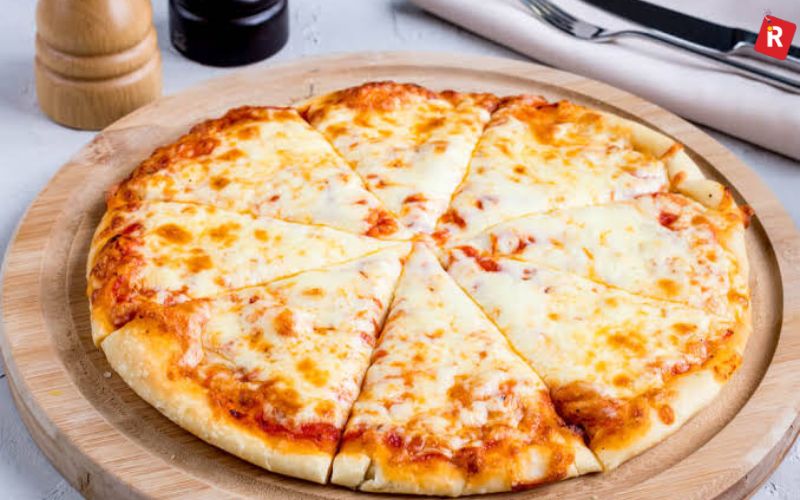
Sometimes, simplicity is the key to great taste, and the Margherita pizza proves just that. Made with a tomato sauce base, fresh tomato slices, creamy mozzarella cheese, and fragrant basil leaves, this pizza highlights classic flavors without overwhelming your palate. A light drizzle of olive oil before baking enhances the aroma and adds a subtle richness. It’s an ideal choice when you want something comforting and delicious without any fuss. Baking it on a thin crust allows the toppings to shine and ensures a crispy bite. Best enjoyed hot and fresh from the oven, the Margherita pizza is a timeless favorite that satisfies cravings with its perfect balance of freshness and cheese.
2. Spicy Veggie Supreme – For the Bold Taste Buds

If you enjoy bold flavors and a bit of heat, the Spicy Veggie Supreme is a perfect choice. This pizza is loaded with vibrant toppings like bell peppers, red onions, black olives, and jalapeños, sprinkled generously with red chili flakes. For those who love extra spice, adding green chilies amps up the heat even more. A thick or pan crust works best to hold all the rich toppings and sauce without getting soggy. You can choose a spicy tomato base or try peri-peri sauce for an extra punch of flavor. This pizza is a favorite for game nights or house parties, pairing perfectly with a cold cola or refreshing lemon soda to balance the spice.
3. Mushroom Truffle Pizza – The Fancy One

For weekends when you want something classy but easy to prepare, the Mushroom Truffle pizza is an excellent choice. It features a mix of button mushrooms, portobello, and if available, oyster mushrooms for a variety of textures and flavors. Instead of the usual tomato sauce, this pizza uses a rich garlic cream sauce that complements the mushrooms perfectly. After baking, a light drizzle of truffle oil or garlic-infused olive oil adds a luxurious, earthy aroma. The deep, rich taste makes it feel gourmet without the fuss. Serving it on a thin sourdough or hand-tossed crust ensures a crisp base that balances the creamy toppings. This pizza is ideal for a sophisticated yet simple meal at home.
Know more: 7 Protein-Rich Vegan Foods That Pack a Punch – No Meat, No Problem!
What Is Caesar Salad, and Why Is It Named After the Roman Emperor?
4. Spinach & Ricotta – Creamy and Light

If you want a pizza that feels both healthy and indulgent, the Spinach & Ricotta pizza is a great choice. It features sautéed spinach and creamy ricotta cheese, combined with a hint of garlic for added flavour. For an extra burst of taste, you can include sun-dried tomatoes or fresh cherry tomatoes. This pizza is best enjoyed on a thin, crispy crust that balances the creamy toppings perfectly. You can use a white sauce base or simply drizzle olive oil with herbs for a lighter option. It’s not heavy but still satisfying, making it an ideal option for brunch, a light dinner, or anytime you want a nutritious yet delicious meal.
5. Pineapple & Jalapeño – Sweet Meets Spicy

This pizza is perfect for those who love bold and unusual flavor combinations. The natural sweetness of pineapple pairs beautifully with the spicy kick of jalapeños, creating a vibrant and exciting taste experience. Start with a classic tomato sauce base and layer on mozzarella cheese along with some smoked cheese for added depth and richness. This combination gives the pizza a smoky, cheesy finish that complements the sweet and spicy toppings perfectly. It works best on a thin or hand-tossed crust, which crisps up nicely and lets the flavors shine. Whether you’re hosting friends or simply want to try something different, this pineapple and jalapeño pizza is a fun and flavorful choice that will impress everyone.
6. Caramelized Onion & Feta – Sweet, Salty and Tangy

This elegant pizza blends the sweet richness of caramelized onions with the sharpness of feta and the tang of black olives. Start by slowly cooking onions until they’re soft, golden, and sweet—this step builds the flavour. Spread the onions over your pizza base, sprinkle crumbled feta, and add a few sliced black olives. A pinch of thyme or oregano brings in a herby balance. Use a sourdough crust to enhance the overall taste with a light tang. This pizza isn’t heavy but still feels indulgent, making it perfect for relaxed dinners or casual wine nights. It’s a grown-up take on vegetarian pizza that’s both simple and sophisticated. Pair it with wine or chilled lemonade for a complete experience.
7. Mediterranean Veggie Pizza – A Taste of the Coast

The Mediterranean veggie pizza is a colourful and flavourful option that brings a fresh, coastal vibe to your table. It’s topped with zucchini, bell peppers, artichokes, black olives, and crumbled feta cheese. You can go with a classic tomato sauce or switch it up with a pesto base for a herby twist. A drizzle of olive oil and a touch of lemon zest on top brighten the overall flavour. This pizza works best on a light, thin crust that crisps up nicely in the oven, letting the veggies stay tender yet slightly golden on the edges. Ideal for warm afternoons, summer dinners, or even garden brunches, this pizza is a refreshing break from heavier options—light, tangy, and incredibly satisfying.
Also check: 12 Delicious High-Protein Foods to Eat Daily for a Healthier You
8. Corn & Cheese Overload – A Family Favourite

The corn and cheese pizza is a classic favourite among both kids and adults. It’s simple, creamy, and packed with flavour. The base is loaded with sweet corn and a generous blend of mozzarella and cheddar cheese, making each bite rich and satisfying. For an extra layer of taste, you can add paneer cubes or crunchy capsicum slices to give it an Indian twist. This pizza is perfect for lazy Sunday evenings when you want something warm, quick, and comforting without too much prep. A thick crust works best as it holds the creamy toppings without getting soggy. Pair it with ketchup or a cheesy dip, and you’ve got a weekend meal that’s both fun and fulfilling.
Why Vegetarian Pizzas Can Be More Fun Than Meat Pizzas
Many people think pizzas are incomplete without meat. But vegetarian pizzas offer a wider variety of toppings, textures, and flavours. You can mix sweet, salty, spicy, and tangy all in one bite. Plus, they’re usually lighter, healthier, and more creative. You don’t just stick to mushrooms and capsicum. You get to use fresh herbs, different cheeses, exotic veggies, and a range of sauces.
Homemade vs Delivery: What Should You Choose?
Homemade pizzas allow full control. You can pick your toppings, adjust the spice level, and use fresh ingredients. They’re also more affordable in the long run. Delivery pizzas are convenient. They save time, especially when you're hosting or just want to relax. With so many good brands offering quality veg pizzas, it’s easy to get a great slice at your doorstep. The choice depends on your weekend mood. Want to cook? Go DIY. Want to chill? Order in.
Sauce It Right: 5 Pizza Sauces That Make a Difference
- Tomato Sauce: A classic. Tangy and rich.
- White Garlic Sauce: Creamy and perfect for mushroom or spinach pizzas.
- Pesto Sauce: Fresh and herby. Works great for Mediterranean pizzas.
- Barbecue Sauce: Smoky and bold. Pairs well with caramelized onions and paneer.
- Peri-Peri Sauce: Spicy and sharp. Ideal for those who like extra heat.
You can either buy these sauces or make quick versions at home.
Check more: Top 10 Popular Pizza Brands in India [2024]
Cheeses That Work Best for Veg Pizzas
- Mozzarella: The most used cheese for its stretch and melt.
- Feta: Salty and crumbly. Adds texture.
- Ricotta: Soft and creamy. Great for light pizzas.
- Cheddar: Sharp and strong. Blends well with corn or onions.
- Gouda or Smoked Cheese: Adds depth and smoky flavour.
Combining two or more cheeses often gives the best results.
Final Thoughts
Vegetarian pizzas aren’t just for vegetarians—they’re for anyone who loves bold flavours, colourful toppings, and creative combinations. These pizzas are easy to customise, making them perfect for every taste and mood. Whether it’s a relaxed movie night, a fun family dinner, or a solo weekend treat, vegetarian pizzas offer endless ways to enjoy comfort food with a healthy twist. From creamy ricotta to spicy jalapeños and sweet caramelised onions, the variety of textures and tastes is unbeatable. You can keep it simple with a classic Margherita or go bold with a loaded veggie supreme. So this weekend, skip the usual and try a plant-based pizza. Pick your crust, choose your sauce, and let your toppings steal the show.

Restaurants are targeting tech parks as their new dining destination due to the large concentration of young professionals looking for quick and high-quality meals at the workplace. These areas offer a diverse, health-conscious crowd, eager to explore new dining options.
Restaurants are capitalizing on this by offering convenient, innovative menus that cater to busy workdays. It’s a smart move to meet the demands of employees seeking both convenience and quality during their breaks. All the major cities like Mumbai, Bengaluru, New Delhi, Kolkata, Hyderabad, Chennai and Kerala are targeting tech parks as their new spot to reach the potential customers with new strategies. Around 20% -30% of the restaurant brands have ventured in techparks in India.
The Location
There are several brands that has successfully tapped in this market with a good growth rate while focusing on the potential customers. “We've successfully tapped into the tech park market with our outlet in Cyber Park, Gurgaon. What drew us to this location was the sheer density of offices and population within the park. Essentially, a tech park becomes a self-sustaining ecosystem, with a large, captive audience seeking convenient dining options,” shared Vikrant Batra of Café Delhi Heights.
He also pointed that by locating within the park, they can cater to these audience needs, particularly during lunch hours. “Moreover, when the park is situated near residential areas, it also attracts evening crowds from the surrounding neighborhoods. This makes tech parks an attractive destination for us, as they constitute a built-in customer base,” added Batra.
Rajat Agrawal, CEO, Barista Coffee said, “Tech parks are a great opportunity to scale amongst the captive audience base which has high spending capability, further cafes become enablers to lot of meetings outside offices. It gives you a loyal base to further build on. Business days are restricted to largely 5 days a week which to an extent restricts the sale opportunity, therefore commercial aspect of business need to be kept in mind while negotiating rentals. Formats most suited are kiosks as tech parks have a large take-out opportunity, takeout friendly concepts work well. Smart pricing plays an important role for sustained business at these tech parks."
Expressing his viewpoints on the same, Dilip Krishnan, Co-Founder and CEO, India of Foodsta Kitchens pointed, “In markets like Bangalore, where real estate is expensive, and customers tend to spend time in their micro market due to traffic and tech parks offer an attractive opportunity for restaurants. They provide a built-in, high-footfall customer base consisting of working professionals who prioritize convenience and quality dining experiences.”
“While this trend has existed, it has gained significant momentum as urban infrastructure challenges make standalone restaurant locations harder to sustain. Also, companies are demanding amenities space in larger office complexes to give a better facility to employees, this in turn has also made developers incorporate retail spaces into tech parks,” pointed Krishnan.
What’s Pushing This Trend
The strategy behind setting up restaurants in tech parks focuses on convenience and quality. Siddhant Arora, Food & Beverage Manager, Seta, Hilton Bangalore Embassy Golflinks said, “Key strategies include offering quick service with high-quality, diverse menu options to cater to the fast-paced, health-conscious workforce. We aim to create a welcoming environment that balances work and relaxation, making it ideal for business lunches or casual meals. Additionally, we focus on offering flexible dining options like grab-and-go meals, meal subscriptions, or delivery services. Understanding the preferences of the tech park employees and maintaining a dynamic menu is also vital in keeping the concept fresh and appealing.”
Imtiaz Ali Siddiqui, Founder of Levant, a Turkish restaurant, and Managing Director of Gourmet Baklava from Hyderabad added, “The strategies are quite simple—offering healthy, budget-friendly, and hygienic food is the best approach. Fusion food is gaining popularity in tech parks, along with other innovations to attract young customers. Any good-quality, fairly priced food will define the future of tech park dining.”
How brands innovate themselves while targeting tech parks?
• Customizable Meal Options: Offering personalized meals, including healthy, vegetarian, and dietary-specific choices, catering to the diverse preferences of tech park employees.
• Packed Box Lunches: To cater to the demand for quick and convenient meals, many restaurants provide packed box lunches, offering a variety of options that are easy to grab, eat, and go.
• Collaborations with Tech Companies: Some brands partner with tech firms to offer exclusive deals, discounts, or loyalty programs, encouraging frequent visits or orders.
• Experiential Dining: Restaurants are introducing interactive dining experiences, such as live cooking stations or themed lunch breaks, to create a social, engaging atmosphere.
The Foreseen Challenges
Despite the many advantages, operating within a tech park presents unique challenges:
• Fluctuating footfall & limited hours – Peak hours are typically 12.30 PM to 2:30 PM on weekdays, with evenings and office holidays seeing lower turnout. Given that lot of employees’ home base may not be the city they work in, they tend to travel which makes holiday period slower which is quite the opposite of malls and high street locations.
• Market conditions like recession also poses a risk as company as well as employee spending will be less over a prolonged period.
• Corporate price sensitivity – Large corporate groups tend to seek cost-effective deals, making bulk orders competitive.
To address these challenges, one can focus on corporate-friendly solutions and engaging dining experiences that drive consistent footfall.

Frozen food is now a part of everyday life for many people. It saves time, reduces food waste, and is available all year round. But the big question remains—how healthy is it? Some believe frozen food is loaded with preservatives and lacks nutrition, while others claim it can be just as good as fresh food, if not better.
The truth is, freezing is a natural way of preserving food. Most frozen fruits and vegetables are picked at peak ripeness and frozen immediately, locking in their nutrients. On the other hand, fresh produce often spends days traveling and sitting on shelves, which can lead to nutrient loss. However, not all frozen foods are created equal. Some pre-packaged frozen meals are high in sodium, unhealthy fats, and preservatives. The key to healthy eating with frozen food is making smart choices.
Know more: 10 Best Coffee Brands in India That Will Boost Your Mornings
7 Best Olive Oil Brands in India for a Healthier Lifestyle
Frozen vs. Fresh: Which One is Better?
Many people think fresh food is always better than frozen. But that is not always true. Freezing can actually help preserve nutrients.
How Freezing Affects Nutrients
- Fruits and vegetables are often frozen soon after they are harvested. This helps retain vitamins and minerals.
Some fresh produce loses nutrients over time, especially when stored for several days before being consumed. - Studies show that frozen fruits and vegetables often have the same or even higher levels of certain nutrients compared to fresh ones.
When Frozen is the Healthier Choice
- Fresh produce in supermarkets may have been transported over long distances, leading to nutrient loss.
- Frozen options can be a better choice when fresh produce is out of season.
Flash freezing helps lock in nutrients without the need for preservatives.
Also read: Best Frozen Food Brands in India for Quick & Tasty Meals
The Hidden Chemicals in Frozen Food: Should You Be Worried?
Many people think frozen food is full of harmful chemicals. While some frozen meals contain preservatives, many frozen fruits, vegetables, and meats do not. The key is to read food labels carefully.
Some frozen meals are high in sodium and unhealthy fats. Brands add these to enhance flavor and preserve texture. However, there are also many healthy frozen options available. Choose frozen foods with simple ingredients and avoid those with long, unrecognizable names.
Know more: A Guide to Different Breads and Their Nutritional Value
The Frozen Food Industry: Are We Being Fooled?
The frozen food industry uses clever marketing to make products seem healthier than they are. Labels like “organic” and “natural” do not always mean nutritious. Some frozen meals labeled as “healthy” contain excessive sugar and sodium.
To avoid being misled, always check the nutrition label. Look for whole foods with minimal additives. Frozen vegetables, lean meats, and whole grains are great choices. Avoid frozen meals with artificial preservatives and high sodium levels.
Read more: 7 Best Ready-to-Eat Brands in India
Does Frozen Food Actually Help with Weight Loss?
Frozen food can be a great option for weight loss if chosen wisely. Pre-portioned frozen meals help control calorie intake. Frozen fruits and vegetables can make meal prep easier and encourage healthy eating.
However, not all frozen foods support weight loss. Many frozen pizzas, fried snacks, and desserts are high in calories and unhealthy fats. If you are trying to lose weight, opt for frozen fish, chicken, vegetables, and whole grains. These provide essential nutrients without unnecessary calories.
Myth vs. Reality: What People Get Wrong About Frozen Food
Myth 1: Freezing Kills Nutrients
Reality: Freezing preserves nutrients, while fresh food loses them over time.
Myth 2: Frozen Fruits and Vegetables Are Not as Good as Fresh Ones
Reality: Frozen fruits and veggies are picked at peak ripeness and frozen immediately, keeping them rich in nutrients.
Myth 3: All Frozen Foods Are Junk Food
Reality: Many frozen options, such as frozen fish, vegetables, and lean meats, are healthy.
The Best & Worst Frozen Foods You Can Buy
Top 5 Healthiest Frozen Foods:
- Frozen Berries – High in antioxidants and fiber, perfect for smoothies.
- Frozen Spinach – Retains iron and vitamin C, great for soups and stir-fries.
- Frozen Salmon – A great source of omega-3 fatty acids.
- Frozen Mixed Vegetables – Convenient and nutritious for quick meals.
- Frozen Chicken Breast – A lean protein option for healthy meals.
5 Frozen Foods You Should Avoid:
- Frozen Fried Snacks – Loaded with unhealthy fats and calories.
- Frozen Pizza – High in sodium and processed ingredients.
- Frozen Desserts – Often contain high sugar levels and artificial additives.
- Frozen Breaded Meat – High in unhealthy fats and preservatives.
- Frozen Pasta Dishes – Often packed with sodium and processed ingredients.
Home Freezing Hacks: How to Preserve Your Own Healthy Meals
If you want the benefits of frozen food without preservatives, try freezing homemade meals. Here are some tips:
- Use Airtight Containers – Prevents freezer burn and keeps food fresh.
- Freeze in Portions – Makes meal prep easier and reduces waste.
- Blanch Vegetables Before Freezing – Helps retain color and nutrients.
- Label Everything – Write the date to track freshness.
- Avoid Freezing Dairy-Based Dishes – They often separate and change texture.
Should You Ditch or Embrace Frozen Food?
Frozen food is not bad for your health if chosen wisely. It can be a convenient and nutritious option, especially when fresh food is not available. The key is to pick whole, minimally processed frozen foods and avoid heavily processed frozen meals.
Next time you shop for frozen food, read labels carefully. Opt for frozen fruits, vegetables, and lean proteins. Avoid frozen meals with high sodium, sugar, and preservatives. With smart choices, frozen food can be a valuable part of a healthy diet.

South Indian cuisine is incomplete without rice. It is the foundation of most meals in this region. People in states like Tamil Nadu, Karnataka, Kerala, Andhra Pradesh, and Telangana eat rice daily. It is used in both simple and elaborate dishes, making it an essential part of South Indian food culture. Whether served plain with sambar or transformed into flavorful rice dishes, it remains a favorite across generations.
Rice is also an important part of traditions and festivals. Many South Indian households prepare special rice dishes for Pongal, Navratri, and temple offerings. Every dish has a unique taste, texture, and significance. South Indian cuisine offers a variety of rice-based dishes, each suited to different moods and occasions. Some are comforting, some are spicy, and others are perfect for festive feasts. Whether you want something light and cooling or rich and indulgent, there is a South Indian rice dish for every moment.
Know more: Idli: The Ultimate Healthy South Indian Breakfast
The Love Affair Between South India and Rice
Rice is the backbone of South Indian cuisine. Every meal in a South Indian household features rice in some form. Whether it is plain steamed rice with sambar or an elaborate biryani, rice holds cultural and culinary importance.
In many South Indian homes, traditional meals are served on banana leaves, with rice at the center. It is also a key part of religious offerings and temple feasts. Over the years, different regions of South India have developed unique rice dishes that cater to diverse tastes.
Check more: Dosa: The Perfect Crispy & Nutritious South Indian Breakfast!
Iconic South Indian Rice Dishes & What Makes Them Special
1. Lemon Rice – The Zesty, Tangy Comfort Food

Lemon rice is a quick and easy dish that is perfect for lunchboxes and travel. It is made by mixing cooked rice with lemon juice, turmeric, mustard seeds, curry leaves, and green chilies. The tangy flavor makes it refreshing and light. It pairs well with papad or coconut chutney.
Also read: Sambar: A Nutritious South Indian Delight with a Rich History
2. Curd Rice – The Ultimate Soul-Soothing Dish

Curd rice is a cooling dish that is perfect for hot weather. It combines cooked rice with yogurt, tempered with mustard seeds, curry leaves, and green chilies. It helps with digestion and keeps the stomach light. In many South Indian homes, curd rice is the last course of a meal to aid digestion.
3. Tamarind Rice (Puliyodarai) – A Burst of Tangy and Spicy Goodness

Puliyodarai is a famous temple-style rice dish. It is made with tamarind paste, spices, and roasted peanuts. The tangy and spicy flavor makes it a favorite during festivals and special occasions. The dish is often packed for long journeys as it stays fresh for a long time.
Read now: Restaurant vs. Café: What Truly Sets Them Apart?
4. Coconut Rice – Subtle, Fragrant, and Coconutty Delight

Coconut rice is a simple yet flavorful dish made with freshly grated coconut and tempered spices. It is commonly prepared in Tamil Nadu and Kerala. The natural sweetness of coconut gives it a delicate taste. It is usually served with spicy vegetable curry or pickle.
5. Tomato Rice – The Fiery, Tangy Twist to Everyday Rice

Tomato rice is a spicy and flavorful dish made with ripe tomatoes, garlic, and aromatic spices. It has a slightly tangy and rich taste. The dish is easy to prepare and is best enjoyed with yogurt or fried snacks like vadas.
6. Bisi Bele Bath – Karnataka’s One-Pot Meal Wonder

Bisi Bele Bath is a famous Karnataka dish that combines rice, lentils, and vegetables with a special spice mix. It has a rich and slightly spicy flavor. Served hot with ghee and fried papad, it is a complete meal by itself.
7. Sambar Rice – A Homely Mix of Rice and Spiced Lentils

Sambar rice is a staple dish in South Indian homes. It is a comforting combination of cooked rice and sambar (a lentil-based vegetable stew). The dish is packed with flavors from tamarind, spices, and vegetables. It is best served with pickle and papad.
8. Ghee Rice – Aromatic, Rich, and Indulgent

Ghee rice is a simple yet luxurious dish made with basmati or jeeraga samba rice, cooked with ghee and whole spices like cardamom, cloves, and cinnamon. It has a rich aroma and is often served with spicy curries.
9. Pongal – The South Indian Khichdi with a Peppery Punch

Pongal is a traditional rice dish made with rice and lentils, flavored with black pepper, cumin, and ghee. It is popular as a breakfast dish and is also a festive offering during the Pongal festival. There are two versions—sweet and savory.
10. Vegetable Biryani – The Fragrant, Masala-Infused Delight

South Indian vegetable biryani is different from its North Indian counterpart. It is made with short-grain jeeraga samba rice, coconut milk, and aromatic spices. It has a distinct flavor and is often served with raita and pickle.
Beyond the Plate
- Curd rice is known for its probiotic benefits, which aid digestion and improve gut health.
- Tamarind rice was traditionally made in temples to distribute as prasad.
- The unique taste of South Indian biryani comes from using jeeraga samba rice instead of basmati rice.
- Coconut rice is a popular dish in Tamil Nadu and Kerala, known for its mild flavor and the natural sweetness of fresh coconut.
- Pongal, a traditional South Indian dish, is often prepared during the harvest festival and symbolizes prosperity and abundance.
South Indian Rice & Its Global Fan Following
South Indian rice dishes are becoming increasingly popular worldwide. Restaurants in the U.S., UK, and Australia now serve favorites like lemon rice, curd rice, and biryani. Their unique flavors and simple preparation make them a hit among food lovers. Many health-conscious people prefer these dishes because they are light, nutritious, and easy to digest. Curd rice, for instance, aids digestion and cools the body, while lemon rice offers a refreshing tangy taste. South Indian-style biryani, made with Jeeraga Samba rice, is also gaining global recognition for its rich aroma. These dishes continue to attract food enthusiasts across the world.
The Rice & Spice Connection
Spices play a key role in making South Indian rice dishes flavorful. Some essential spices include:
- Mustard Seeds & Curry Leaves: Used for tempering in most rice dishes.
- Asafoetida (Hing): Adds depth and a unique aroma.
- Black Pepper & Cumin: Give a spicy and earthy taste.
- Ghee: Enhances the richness of dishes like Pongal and ghee rice.
Choosing the Right Rice
The type of rice used can change the taste and texture of a dish. Some common rice varieties include:
- Sona Masoori: Light and fluffy, used in everyday meals.
- Ponni Rice: Commonly used for idli, dosa, and plain rice.
- Jeeraga Samba: Used for biryani due to its small grain and aromatic quality.
- Matta Rice: A red rice variety popular in Kerala for its chewy texture and earthy flavor.
Summing Up!
South Indian rice dishes offer a mix of comfort, flavor, and tradition. Whether you prefer the tanginess of lemon rice, the richness of ghee rice, or the spice of tomato rice, there is something for everyone. Exploring these dishes will give you a taste of South India’s rich culinary heritage. So, the next time you crave a satisfying meal, try one of these delicious rice dishes.

In today’s culinary world, presentation is a crucial aspect of the dishes, becoming an essential part of the taste experience and a pathway to the dining process. Chefs like Suvir Saran, Kunal Kapur, Atul Kochhar and others also speaks for the new Modern Indian cuisine transforming traditional dishes into inviting eye-paint pieces which are both ancient and contemporary. In this case, plating elevates itself from an aesthetic issue – beyond taste, it turns into an art where the plate, colors, textures and tastes go together, and tell a story.
The Traditional Roots of Indian Presentation: Indian food always has a certain intrinsic aspect of presentation though in the olden days for sharing wherein many types of dishes could be found within a single plate known as the thali. Raw and natural looking spices and ingredients used in preparation bring beautiful and lively hues in these plates and each item on it contributes to the whole experience. Chefs today enhance procedure with this and make it possible to transition from tradition to global outlook when plating.
The Art and Science Behind Plating: Plating, as mentioned before, is more of an art as well as science. As much as cooking and presentation go in tandem, it takes careful planning on how the colors, shapes and texture are placed on a plate. Elements of color are important to Indian food, for instance, while turmeric, chili and saffron are all spices, their bright yellow and red hues also add to the appeal of any meal. All these colors are used by chefs to create compositions that make everyone’s appetite keen before taking any food. On the other hand, textures make it easy to create variation and depth on the haptic level. This is because such features cut across the fundamental aspect of food such as the appearance of a crispy dosa with the moistness of chutney for example.
Techniques in Modern Indian Plating: Today’s chefs are aspiring to try out new tricks, combining the best of intercontinental flair and authentic Indian flavors. A few popular plating techniques in modern Indian cuisine include:
1. Deconstruction: In a manner of speaking, by deconstructing what could be fairly conventional meals into distinct apparatus, chefs are letting the guests to engage. An example of a bad molecular technique is a deconstructed samosa where small portions of potato filling, the crispy shell and chutney are prepared separately, but they help the guests think differently about something as ordinary as a samosa.
2. Molecular Gastronomy: The combination of science and cooking skill, chefs cook an ingredient as if a scientist and a culinary artist and turn an ingredient into something with a different texture. When the film rolls out bio-morphic yogurt foam or turns spices into spheres that can be eaten or melds flavors into geometric shapes or forms, it introduces more mystery to each plate.
3. Microgreens and Edible Flower: These small, intense colors enrich dishes with taste and make entrees look much more exquisite. Picking up a touch of green or the floral accents not only correlates with the objective improvement of the dining area appearance but also introduces subtle sparing notes to the dishes that help make the impression of a great gourmet restaurant.
4. Traditional Vessels: To be realistic, or as many chefs seek to do, they also use such basic accessories as brass, copper or clay. First impressions are important, which is why food placed in locally made containers, such as an earthen pot for biryani or a copper bowl for butter chicken, plays an important role because it connects to the people’s culture and tastes and looking at the food21.
The Psychological Impact of Presentation: Apart from taste, appearance influences the perception of the taste of the foods that are served in a restaurant. Research proves that if the food is colorful then it will have a better taste in the eyes of customers as they believe that when the outlook is good, the outlook on service is good too. In the modern world of the social networks this psychological influence is enhanced, which visually stunning meals attract habits and the sight on the networks. The positioning of the food also enables the chef to tell a story that is associated with every preparation prepared for the clients.
The Future of Food Presentation in Indian Cuisine: Even today, presentation being a key component of food, will always remain important to the specifics of modern Indian cuisine. Chiefs probably will tend to experiment more, take more measures in sustainability while considering aesthetics, and create dishes that reflect both old and new traditions. Influencing the future of Indian cuisine, this experience of art and science is turning each plate into visuals.
To sum up, presentation in the modern Indian cuisine: the art of creating the dishes presentation, is the tradition with the touch of modernity. Indeed each plate is a masterpiece where color, texture and tradition is reflected, a feast for the eyes and the stomach. With time, dining will increase as customers are keen on the visual aspects and therefore presentation of foods as meals to be relished will always be important.

A significant change is taking place in how restaurants source their ingredients, with more establishments now choosing to partner directly with farmers. This direct sourcing model eliminates the traditional middlemen, streamlining the journey of fresh produce from farms to restaurants. Not only does this allow restaurants to access higher-quality ingredients at a faster pace, but it also strengthens relationships with local growers, ensuring a more reliable and transparent supply chain. As a result, this approach benefits both parties: farmers receive better compensation and market access, while restaurants gain fresher, sustainably sourced produce that meets the demands of today’s health-conscious consumers. This transformation reflects a broader shift towards sustainability and efficiency, where technology-driven logistics and local sourcing work together to create a more resilient and responsive food service sector.
Historically, restaurant supply chains in India have been complex, with multiple layers of middlemen that affect both the quality and pricing of produce. Abhishek Sarwate, CEO and Brand Strategist at Utopian Drinks, explains, “There are many middle-men involved between farmers and restaurants. These layers impact the quality of the fresh produce due to the delay between farm and table, as well as pricing, as each of the middle-men is looking for his 'cut.' Reducing these layers by directly sourcing from farmers will help on both the aspects of quality and pricing for restaurants."
However, as Sarwate points out, individual restaurants may struggle to source ingredients from various farms on their own. This is where new players in quick commerce are stepping in to streamline both the demand and supply sides, utilising technology to maintain quality and affordability.
The Shift Toward Direct Sourcing from Farmers
A prime example of this innovation is Mulyam, which has built a network of thousands of farmers to provide fresh produce directly to restaurants across India. Their model not only reduces costs for restaurants but also offers farmers fair prices and market access, addressing long-standing inefficiencies in the traditional supply chain. Mulyam, along with other platforms like NinjaCart and DeHaat, leverages technology to connect farmers directly with restaurants, ensuring produce reaches kitchens in under 12 hours. NinjaCart, for instance, moves 1,400 tonnes of perishable goods daily from farms to businesses, making farm-to-fork delivery more feasible than ever before.
Teja Chekuri, Founder of Full Stack Ventures, highlights the significance of this shift: “The Indian restaurant industry is experiencing a shift with the introduction of direct sourcing from farmers and next-day delivery of fresh produce. This new approach addresses key challenges in the supply chain by ensuring that restaurants receive high-quality ingredients quickly and efficiently. By bypassing intermediaries, restaurants not only secure fresher produce but also reduce costs associated with traditional supply chains.” This model has socio-economic benefits as well, by providing farmers with direct access to markets, improving their income, and supporting rural livelihoods.
The Rise of Farm-to-Table Dining Experiences
The farm-to-table model has gained momentum across India's culinary landscape, with several restaurants embracing this approach to improve both the quality of their offerings and their sustainability. Project Hum in Mumbai is one such example, sourcing its produce from over 230 farmers in Maharashtra. The restaurant not only offers fresh, seasonal ingredients but also connects its patrons with the farmers responsible for growing their food, creating a transparent and immersive dining experience. Similarly, Mharokhet in Jodhpur brings experiential dining to the forefront by allowing guests to pick their produce directly from the farm before it is prepared. This method deepens the connection between diners and the food they consume, reinforcing the importance of knowing where food comes from
Moreover, startups like FarmersFZ and Crofarm are playing a crucial role in expanding the reach of this model.
FarmersFZ, for instance, enables small-scale farmers to sell their produce directly to restaurants and consumers, cutting out intermediaries and ensuring that produce is fresh and pesticide-free. Crofarm goes a step further by offering yield prediction and profit calculation tools to help farmers optimise their operations while ensuring restaurants receive produce in less than 12 hours.
Technology and Quick Commerce Solutions
As the Indian restaurant industry continues to evolve, the integration of direct farm sourcing and next-day delivery promises to address many of the supply chain inefficiencies that have long plagued the sector. This shift not only benefits restaurants by providing fresher ingredients at lower costs but also empowers farmers by giving them direct access to urban markets. As Chekuri notes, “This innovative supply chain solution enhances operational efficiency for restaurants. Overall, the model represents a notable advancement in the Indian business ecosystem, driving both socio-economic as well as business benefits.” With the support of quick commerce platforms and agritech startups, the farm-to-table movement is poised to reshape the future of dining in India, making it more sustainable, efficient, and consumer-conscious.
Food wastage is a significant issue in India, contributing to both economic loss and food insecurity. It’s estimated that about 40 percent of the food produced in India is wasted due to inefficiencies in the supply chain, poor storage, and transportation problems. This is especially true for perishable goods like fruits and vegetables, which require proper handling and refrigeration to remain fresh.
Cold storage is another major problem. India produces a vast amount of fresh produce, but due to a shortage of refrigerated storage and transportation facilities, much of it spoils before reaching consumers. This infrastructure gap causes post-harvest losses and reduces the income of farmers, who must sell at lower prices or even see their goods go to waste. Strengthening infrastructure, improving roads, building more cold storage units, and modernising transportation would vastly improve the efficiency of the food supply chain.
The Role of Agritech and Future Prospects
“The future of the Indian restaurant industry, intertwined with direct farm sourcing and quick commerce, is poised for significant technological advancements. As agritech continues to evolve, AI-driven platforms could further optimise farm-to-table operations, enabling precise yield predictions, real-time quality assessments, and even automated ordering systems that adjust based on supply and demand,”Sreenivasarao, co-founder of TraceX (platform that digitises the supply chain process) shared. With the advent of smart logistics and blockchain technology, the entire supply chain can become more transparent, ensuring traceability from farm to fork. This would not only build greater trust between consumers and restaurants but also allow for real-time tracking of produce, reducing food waste and optimising inventory management. The integration of drones and electric vehicles for delivery could further revolutionise how produce is transported, making it more sustainable and efficient.
As consumer preferences shift towards healthier and more sustainable eating habits, the farm-to-table model could become the new norm, rather than a niche concept. In the coming years, restaurants may increasingly adopt vertical farming and urban agriculture solutions, growing ingredients on-site or sourcing from hyper-local farms in urban areas. This could drastically reduce the carbon footprint associated with long-haul transportation of produce. The fusion of agritech with culinary innovation will not only create operational efficiencies but also cater to the rising demand for fresh, organic, and ethically sourced food. In the long term, this shift could fundamentally alter the food supply chain, making it more resilient, sustainable, and adaptable to future market dynamics and environmental challenges.

Managing Director, McDonald’s India North and East Oct 16, 2024 / 9 MIN READ
In a country where millions face hunger daily, the stark reality of discarded food is both alarming and disheartening. Despite advances in agricultural technology and a growing population of food producers, an astonishing amount of edible food never reaches our plates. A staggering one-third of all food produced is lost or wasted at various stages, including harvesting, production, storage, transportation, and consumption.
The economic impact is huge, The United Nations Environment Programme estimates that India wastes 74 million tonnes of food each year, representing a loss of 92,000 crore rupees. The financial impact is only part of the problem—food waste also drains valuable resources like water, energy, and fertilizer, adding unnecessary strain on limited natural supplies. Businesses have a vital role in addressing this issue. Here’s how they can reduce food waste and make a real difference.
Minimize Time Between Harvesting and Storage
Food wastage often begins right after harvesting, during the post-harvest stage, but this can be prevented with timely intervention. The gap between harvesting and moving produce into proper storage is crucial, as fresh produce is highly perishable. Delays in this transition can cause rapid spoilage due to exposure to heat, moisture, and microorganisms. To combat this, businesses in agriculture, food production, and retail must streamline processes to quickly move produce into facilities that maintain optimal temperature and humidity levels. Promoting advanced storage solutions like hermetic systems and improved packaging techniques can help minimise delays, preserve freshness, and significantly reduce spoilage during this critical period.
Invest in Well-Designed and Monitored Cold Chain Systems
A structured cold chain infrastructure is important for extending the shelf life of perishable goods. From farms to retailers, businesses investing in cold storage and refrigerated transport systems can benefit from several immediate and long-term advantages such as enhanced customer satisfaction by delivering fresh quality food items, efficient operations and improved supply chain efficiency, resulting in overall reduced costs. Maintaining the right temperature in the food supply chain is crucial to prevent spoilage and reduce waste. Proper staff training, along with regular upkeep and monitoring of refrigeration equipment, ensures the cold chain stays intact and food reaches consumers in good condition.
Reducing Waste in Storage, Handling, and Processing
A significant portion of food waste stems from inefficiencies across storage, handling, and processing. For example, in the fresh produce industry, improper temperature control in storage facilities can cause fruits and vegetables to spoil prematurely. In meat processing, delays or poor handling during transportation can lead to contamination, making the product unsafe for consumption. Businesses must identify and take a closer look to fix these weak points which lead to unnecessary food loss. Implementing improved storage solutions, training staff on best practices for food handling, and streamlining processing systems can drastically reduce these losses. Automation and AI technologies can further enhance food processing efficiency by ensuring food is handled and stored with precision, keeping spoilage due to human errors to a minimum.
Leveraging Smart Demand Forecasting to Prevent Post-Processing Waste
Unsold or excess food is another key source of food waste. Smart demand forecasting tools leveraging advanced data analytics and AI can help predict consumer demand more accurately and help reduce waste.
Aligning production with market needs can support in avoiding overproduction and minimize food that might otherwise go unsold. Smart demand forecasting helps optimize inventory management, allowing businesses to stock up on the right volumes of perishable goods. This proactive approach not only reduces waste but also lowers costs associated with excess inventory. For instance, buns are toasted only after an order is received.
Shifting Focus Toward Preventive Measures
Preventing food waste before it occurs is where the true impact lies, making it even more crucial than just reducing it. Businesses need to adopt proactive strategies such as advanced forecasting tools for more accurate demand predictions, utilizing technology that streamlines and optimizes the entire supply chain, and implementing systems that ensure surplus food is either redistributed or repurposed effectively. By prioritizing prevention over mere reduction, businesses can not only minimize waste but also lead the charge in creating a more sustainable and responsible future—setting an important precedent for others to follow.
Training on Food Safety and Personal Hygiene
We train our staff on safe food storage practices, such as temperature controls for refrigeration, storage of raw and cooked food, monitoring expiry dates, and product labelling, as well as preparation methods like thawing techniques, appropriate cooking temperatures, and cleaning and sanitation procedures, can significantly reduce food wastage.
At McDonald’s, we provide training on using the appropriate packaging at each stage of the supply chain to ensure our ingredients stay fresh, safe, and high-quality. From vacuum-packed lettuce to temperature-controlled storage, our packaging solutions reduce waste and maintain product quality.
Lastly, by using good farming practices, we can protect our soil and water while caring for the people working in the fields. Together, through training and teamwork, we can make sure that everyone who visits us has a safe and enjoyable experience.
Tackling food wastage along the value chain
The science-backed cold chain process at McDonald’s prioritises food integrity and minimises food wastage by ensuring perishable items are kept at safe temperatures throughout storage, transportation, and preparation. By using temperature-controlled refrigeration, McDonald’s effectively manages inventory. This systematic approach helps maintain product quality, ensuring minimal waste along the supply chain.
Conclusion
To truly tackle the global challenge of food waste, businesses must not only improve their operations but also embrace a mindset of sustainability and responsibility. The shift towards smarter technologies, better demand forecasting, and more efficient storage systems is just the beginning. By taking bold steps today, businesses can set a new standard—one that prioritizes both profit and the planet, ensuring that future generations inherit a world where resources are valued, not squandered.

The rise in Jain food is increasing in India, with many people liking the taste or preferring Jain menu over the other menu. With the growing demand by the consumers, there is variety of options available in Jain food. The surge in demand for Jain cuisine reflects a broader shift in consumer behavior. Rooted in centuries-old religious practices, Jain food follows strict dietary rules that not only appeal to the Jain community but are also increasingly sought after by health-conscious individuals and those embracing mindful eating. Even in vegetarian hotels and restaurants, there is a separate menu for Jain.
The simplicity, purity, and plant-based nature of Jain meals align perfectly with modern trends towards sustainable and ethical consumption. Sensing this shift, restaurants have responded by curating specialized Jain counters, positioning themselves as trendsetters in the culinary world. The increasing amount of people preferring it is slowly increasing as years go by. These options are available in busy cities and many innovative dishes are available with the traditional touch wanting to try those lip-smacking foods.
Jain food mainly focuses on fresh, wholesome ingredients like fruits, vegetables, legumes, and grains, creating balanced and healthy meals. The rise in demand is due to a combination of consumer preferences for healthier options, a desire to boost sales, and the unique cultural experience that Jain cuisine provides.
Shift in Food preferences
“Consumerism keeps shifting constantly, especially when it comes to food preferences. To stay in line with the changing dietary demands of the patrons, restaurants and hotels are increasingly considering including popular cuisines from across the world and within the country. One such trending cuisine is Jain cuisine which is driven by religious, ethical, and health-conscious motives. Jain food known for its rich vegetarian delicacies and the one that refrains root vegetables, commented Sankalp Jain, Co-founder, Carbon, Jaipur who said that he has seen a significant boom in the recent past and made its place in the menus of eateries from casual dining to upscale outlets.
Vikrantt Singh, Founder & Managing Director, Bansooriwala’s elaborated, “As more consumers prioritize health, sustainability, and conscious eating, restaurants are catering to this demand by offering specialized Jain menus. Additionally, the increasing visibility of Jain communities and their gatherings has further contributed to this trend, as establishments look to serve a wider, ethically aware customer base. Chefs are also creatively blending Jain ingredients with global cuisines, resulting in innovative dishes that cater to contemporary tastes. As healthy dietary preferences evolve Jain cuisine serves as a viable option for those with restrictions, further enhancing its popularity.”
Adding further, he said, “The variety within Jain cuisine is extensive, showcasing a rich array of dishes that span regional specialities and innovative interpretations. From traditional recipes like Jain dal, khichdi, and various vegetable curries to contemporary adaptations such as Jain pizzas and pasta, the culinary possibilities are vast. This adaptability not only caters to the Jain community but also attracts health-conscious individuals and food enthusiasts looking for unique, flavorful, and ethical dining options. Jain food’s reputation for being nutritious and ethically prepared resonates with consumers seeking healthier and more responsible dining options.”
Focusing on the health perspective, Soumitra Kundu, Deputy General Manager at The Orchid Hotel, Pune said, “Jain food stands out due to its adherence to Sattvic principles, which emphasize lightness, balance, and wholesomeness. Unlike many other cuisines, it focuses on health-conscious, fresh ingredients that not only nourish the body but also align with the spiritual practice of nonviolence. This makes it distinct from other types of cuisine, offering a unique and fulfilling dining experience. It’s a mix of all three. Consumer demand for healthy, plant-based, and ethically prepared meals is rising. Jain food fits this demand perfectly with its emphasis on freshness and purity. Restaurants are also tapping into this demand to boost sales, as the appeal of Jain food is growing across a broader audience. Jain food offers a wide variety of options across all courses. Jain thalis, in particular, are visually appealing and mouth-watering. In addition to thalis who further added that there are many choices in soups, starters, snacks, and main courses, making the cuisine highly customizable while adhering to Jain dietary restrictions.”
Customization
Embracing Jain food is not just about meeting demand; it’s a savvy business strategy. Hotels and restaurants that offer Jain cuisine are able to attract a wider, more diverse customer base, increasing foot traffic and boosting revenue. This inclusion enhances their brand image as forward-thinking, accommodating establishments. Offering Jain options sets these venues apart, giving them a competitive edge in a crowded market, especially as consumers become more selective and value conscious.
The Market Scenario
Regarding the Jain Food market, Sakthitharan, Executive Assistant Manager, The Tamara, Coorg said, “The Jain food market is unique, distinguished by its rigorous guidelines prohibiting root vegetables, onions, and garlic, which requires careful attention to detail in preparation. Yet, this challenge has sparked creativity among chefs, who are now offering a more expansive range of Jain dishes, far beyond the traditional fare. These innovations allow for a customized yet flavourful experience, blending the essence of Jain principles with the artistry of modern gastronomy, creating a new wave of culinary sophistication.”
The key drivers for the shift:
- Growing Customer Base: Restaurants and hotels are now offering Jain food given the rise of dietary preferences for Jain preparations across the country. Jain food preferences have influenced many beyond religion, which has led the eateries to include Jain foods in their menu. In areas with larger Jain populations, it becomes an important part of catering to local taste profiles.
- Health-conscious and Ethical Eating Trends: Jain food is in line with the rising popularity of vegetarian and ethically sourced foods. Non-Jain customers prefer Jain delicacies given their healthier and ethical orientation. Jain food attracts individuals eyeing sustainable and conscious consumption.
- Hospitality Industry Standards: For eateries, providing Jain food showcases their inclusive approach to include diverse dietary needs, which is crucial for events of scale including Weddings, MICE events, etc. Providing a wholesome menu with Jain options uplifts the venue’s reputation for inclusivity and flexibility.
- Cultural Sensitivity: In regions where Jainism followers are greater in number, eateries include Jain foods to cater to the patrons observing the cultural and religious practices. This level of attention to detail can help establish a strong bond with customers who value religious inclusivity and cultural aspects.
Both Jain and non-Jain consumers are increasingly on the look for ethically sourced ingredients and Jain cuisine in the menu has become a crucial strategy for restaurants and hotels to thrive. So, the rise in consumption will be there as years go by and this trend is here to stay.

Restaurants are building traffic by repositioning their brand on happy hours by attracting more public. Nowadays, happy hours are present during lunch and dinner or during a peak time in the day. The concept of happy hours is to attract more public through discounted offers and deals on food and beverages. They tend to promote the discounts on social media platforms or promote the offers through influencers to gain more eyes on the discounted prices. As per reports, more number of people prefers to have food outside or order them online during happy hours than the usual days.
New innovations in Happy Hours
“Restaurants are increasingly innovating their approach to happy hours and combo meals to adapt to both online food delivery platforms and their offline business models. The happy hours have to be carefully curated while keeping consumer peak and off-peak working hours also in addition to keeping delivery or serving timeframe in consideration,” shared Harshadeep Pawar, Head of F&B and Operations, ilili.
To drive traffic through online food delivery platforms, many restaurants are offering exclusive happy hour deals that are only available for delivery or takeout. Similarly, to create urgency and encourage immediate orders, some restaurants implement limited-time happy hour promotions that are available for a short window each day. And, for the same, restaurants are leveraging digital tools to make happy hour more engaging. For instance, they might run social media contests where customers share their happy hour experience for a chance to win a discount on their next order.
On the other hand, restaurants are experimenting with subscription-based models where customers pay a monthly fee for access to ongoing happy hour deals or special discounts, creating a steady stream of revenue and customer loyalty. The impact of happy hours on restaurant business can vary significantly between offline (in-store) and online (delivery and takeout) environments.
Dynamic pricing and flash sales
“Restaurants are creatively reshaping happy hour strategies to boost both online and offline traffic by embracing value-driven combo meals and exclusive promotions. Online-exclusive happy hour deals, such as special discounts, free delivery, and bonus items, are effectively driving traffic to food delivery platforms. Meanwhile, the dynamic pricing and flash sales are generating urgency and encouraging timely orders. By offering bundled meals at reduced prices, restaurants cater to budget-conscious customers and simplify their dining choices, which is particularly appealing for online orders. These combo deals enhance perceived value and increase order volumes, benefiting both physical locations and digital platforms,” shared a spokesperson from Sarovar Hotels.
Commenting on the same, Rahul Bhansali, Owner and Founder, Bombay Cartel, pointed, “Happy hours are a strategic move to boost sales during typically slow office peak hours. By offering exciting promotions, we draw in professionals looking to unwind after work, increasing foot traffic and revenue during these quieter times. These happy hours also serve as a magnet for a diverse crowd, extending our reach beyond our regular patrons. The special offers attract new customers, enhancing our brand visibility and positioning Bombay Cartel as a vibrant spot in the Bombay dining scene.”
Thus, we can say that Happy hours are here to stay. Everyone, want to enjoy nice set of meals and drinks in affordable price rather than the usual price and this offer a prime opportunity to partner with new brands and introduce them to the clients. This diversifies the offerings and helps attract a broader audience, reinforcing the brand reputation as a dynamic and engaging destination.

The much awaited budget for the newly formed government led by the NDA alliance on Tuesday couldn’t bring much relief to the restaurant and hospitality sector. Finance Minister Nirmala Sitharaman unveiled the Union Budget for the fiscal year 2024-25 yesterday. Though, people are appreciating the budget for its focus on infrastructure development, employment generation, and support for spiritual and cultural tourism, it has received a mixed reception from the hospitality and tourism sector.
“Budget 2024 was quite mixed. While it does provide a promising outlook in terms of tax reforms, infrastructure development, skill development in youth as well as aim on reducing the overall fiscal deficit, there seems to be considerable uncertainty in implementation while sector-specific considerations, especially for the hospitality sector remain,” shared Teja Chekuri, Managing Partner at Ironhill India.
Commenting on the same, Kabir Suri, President, National Restaurant Association of India said, “Reflecting on the recently announced Union Budget, we would like to commend the Government and our Honourable Finance Minister Smt. Nirmala Sitharaman, for looking to establish economic measures that will drive India towards a better economic future. The EPF support for new hires will go a long way in significantly bolstering levels of employment in the country. This is crucial in developing a stable, secure and robust workforce which will be beneficial to all industries including the food services sector. The reduction in income tax slabs is a commendable move, empowering individuals with greater savings and disposable income, thus driving higher consumption levels, an essential catalyst for sustained economic momentum.”
He further added, “The emphasis on boosting tourism is a strategic step towards revitalizing the sector, promising a resurgence in hospitality industries. Also, support given to the MSMEs in the form of Mudra loan limit increase needs to be applauded. It is unfortunate that MSMEs in the food service sector will miss out due to the fact that the Food Services sector has not been recognised as an industry yet.”
According to the recent Economic Survey that has laid focus on the creation of 8 million jobs each year till 2036. The food services sector is ideally positioned to drive this goal since it employs people with all education and skill levels. The current direct employment by the industry of 8.5 million people is slated to grow by more than 20% to 10.5 million in the next four years. However, lack of GST Input Tax Credit for the industry is slowing down the growth and job opportunities of this otherwise vibrant sector.
“Finance Minister Nirmala Sitharaman's focus on establishing skill-based programs for the hospitality and restaurant industries is a positive step towards enhancing the sector's contribution and smooth operation. However, while these measures are appreciated, we had hoped for more targeted support for the restaurant industry. Additional initiatives specifically addressing the needs of restaurants and businesses would have been beneficial in fostering further growth and resilience," pointed Pranav Rungta, Co-Founder and Director at Nksha.
Though, Abhishek Sarwate, CEO, Utopian Drinks, believed that the budget is very positive for startups because of 2 major steps: "Angel Tax" abolishment and reduction of LTCG tax on unlisted equities to 12.5% from 20%.
“This will reduce uncertainty and compliance burden on startups and make startup investing more attractive. This should lead to more capital flowing into the startup ecosystem, leading to job creation. This is definitely a step towards Viksit Bharat for 2047,” he added.

Starting something afresh is always challenging. It demands creativity, out-of-the-box thinking, and the development of a marketing strategy that ensures visibility. Capturing consumer attention is a hurdle faced by every new brand or product across sectors. Having been part of the alco-bev industry for over two decades, I have witnessed first-hand how it has evolved. The industry is at a unique juncture, characterized by a dynamic interplay of established and emerging brands, and a constant evolution of the consumer palate.
The alco-bev industry in India is witnessing a significant transformation. Established brands, both international and domestic, continue to offer a wide range of products. Simultaneously, new entrants are disrupting the market with differentiated products and innovative pricing strategies. This disruption is reshaping consumer preferences, with a growing focus on quality and a willingness to pay a premium for superior products.
Despite the apparent clutter in the market, there is ample room for more brands to enter. The Indian market holds tremendous potential, and successful brands will be those that focus on quality differentiation, product innovation, and effective communication that builds an emotional connection with consumers.
With the liberalization of the economy, Indian consumers have been exposed to global brands, leading to increased aspiration levels and spending power. The premium segment of both white and dark spirits is witnessing the entry of new Indian brands targeting an upwardly mobile, aspirational demographic. These consumers are experimental, possess a nuanced palate, and seek new flavors. More importantly, they are connoisseurs who appreciate quality.
The Indian market is seeing an influx of new gin and tequila brands, catering to the evolving tastes of consumers. These products are characterized by unique flavors and high-quality ingredients, appealing to a discerning audience. Brands like Jaisalmer, Greater Than and Stranger & Sons are leading the charge in the gin segment, while home-grown tequila brands are beginning to make their mark.
There is a clear trend towards premiumization, with consumers willing to invest in higher-quality products. This shift is evident across various categories, from white spirits like gin and vodka to dark spirits such as whisky and rum. Premiumisation is driven by consumers' desire for superior taste, better ingredients, and the overall experience that premium products offer.
Premium whisky continues to enjoy popularity among Indian consumers. The demand for high-quality, well-crafted whiskies is on the rise, driven by an appreciation for the finer aspects of whisky production and aging. Brands like Downing Street, Rockford Reserve, etc., are gaining recognition for their premium offerings, which are well-regarded both domestically and internationally.
Indian single malts are gaining recognition in international markets. In recent years, India has produced world-class whiskies that rival their global counterparts in terms of taste and quality. This success is a testament to the growing expertise and innovation within the Indian alco-bev industry. Indian brands like Rampur, Amrut are now winning awards and gaining accolades at prestigious international spirits competitions, further establishing their presence on the global stage.
Many individuals who were previously involved in distribution or distillation are now venturing into creating their own brands. They are willing to take financial risks and exhibit the patience and perseverance required to build successful brands. As the industry continues to evolve, it is essential for new and existing players to focus on quality, innovation, and effective communication to capture and retain consumer attention.
New entrants must deeply understand their target audience. This includes their preferences, spending habits, and the kind of experiences they seek. Conducting market research and gathering consumer insights can provide valuable information for crafting products and marketing strategies. In a competitive market, product differentiation is crucial. New brands should focus on unique selling propositions (USPs) such as unique flavors, high-quality ingredients, sustainable practices, or innovative packaging.
Establishing a strong brand identity is essential. This involves creating a compelling brand story, designing memorable logos and packaging, and maintaining consistent brand messaging across all channels. Engaging with consumers through effective communication strategies is key. This includes digital marketing, social media campaigns, influencer partnerships, and experiential marketing events that resonate with the target audience. Brands that succeed are those that can establish an emotional connect with consumers. This can be achieved through storytelling, creating memorable experiences, and aligning the brand with the values and aspirations of the target audience.
The alco-bev industry in India is at an exciting juncture, with numerous opportunities for growth and innovation. By understanding and catering to the evolving preferences of Indian consumers, brands can carve out a niche in this dynamic market. Quality differentiation, product innovation, and establishing a strong emotional connect with consumers will be key to navigating India's evolving alcohol landscape. The future looks promising for both established brands and new entrants who are ready to embrace the challenges and opportunities in this vibrant industry.
Copyright © 2009 - 2025 Restaurant India.







